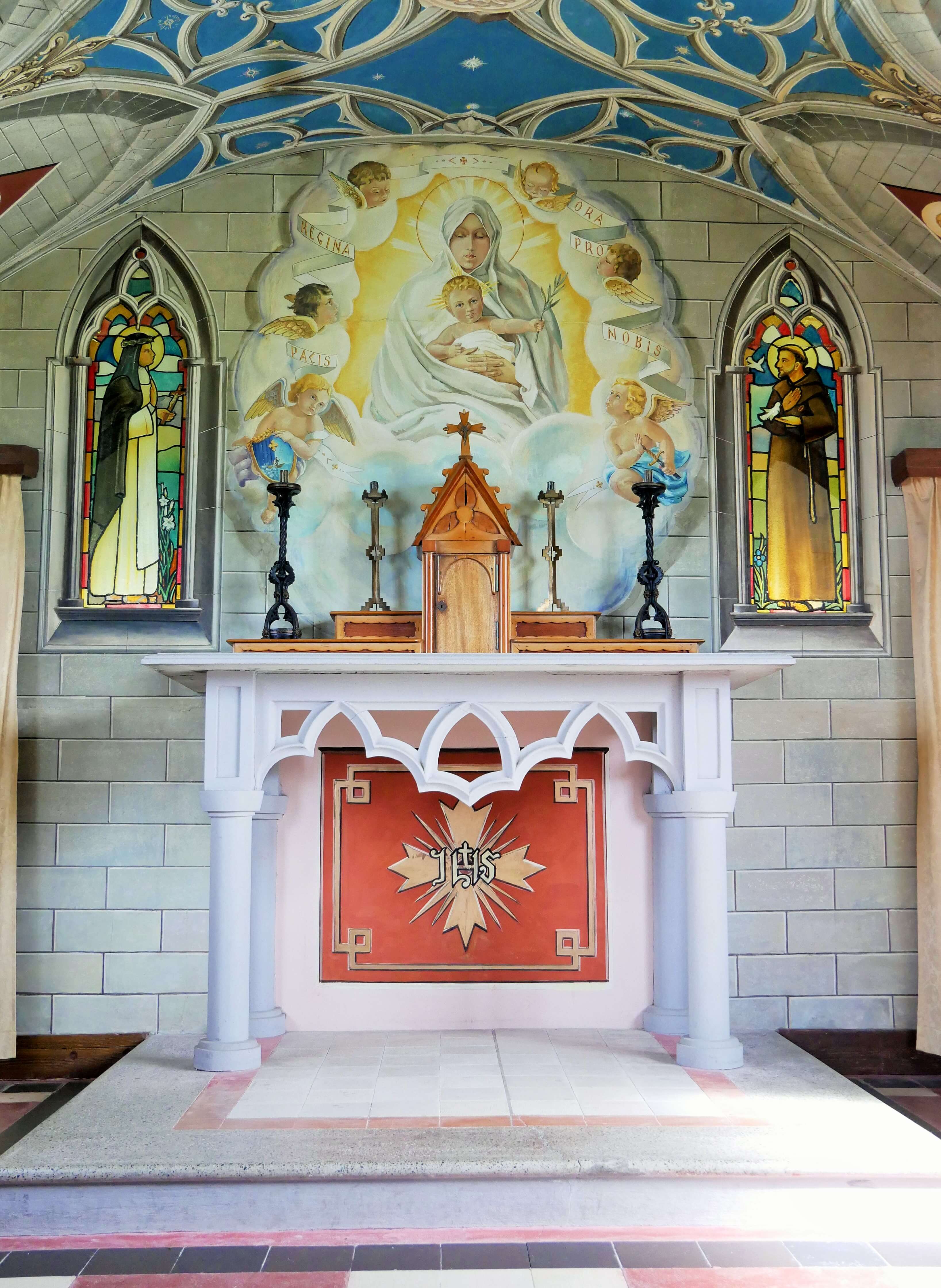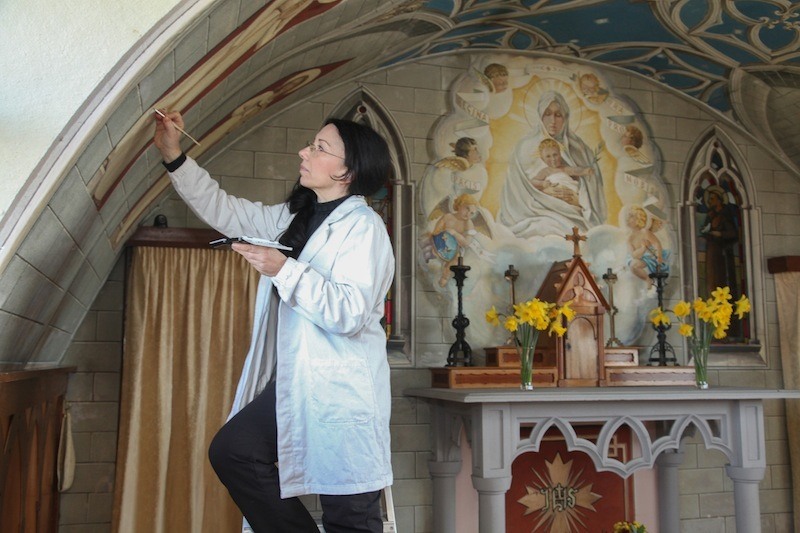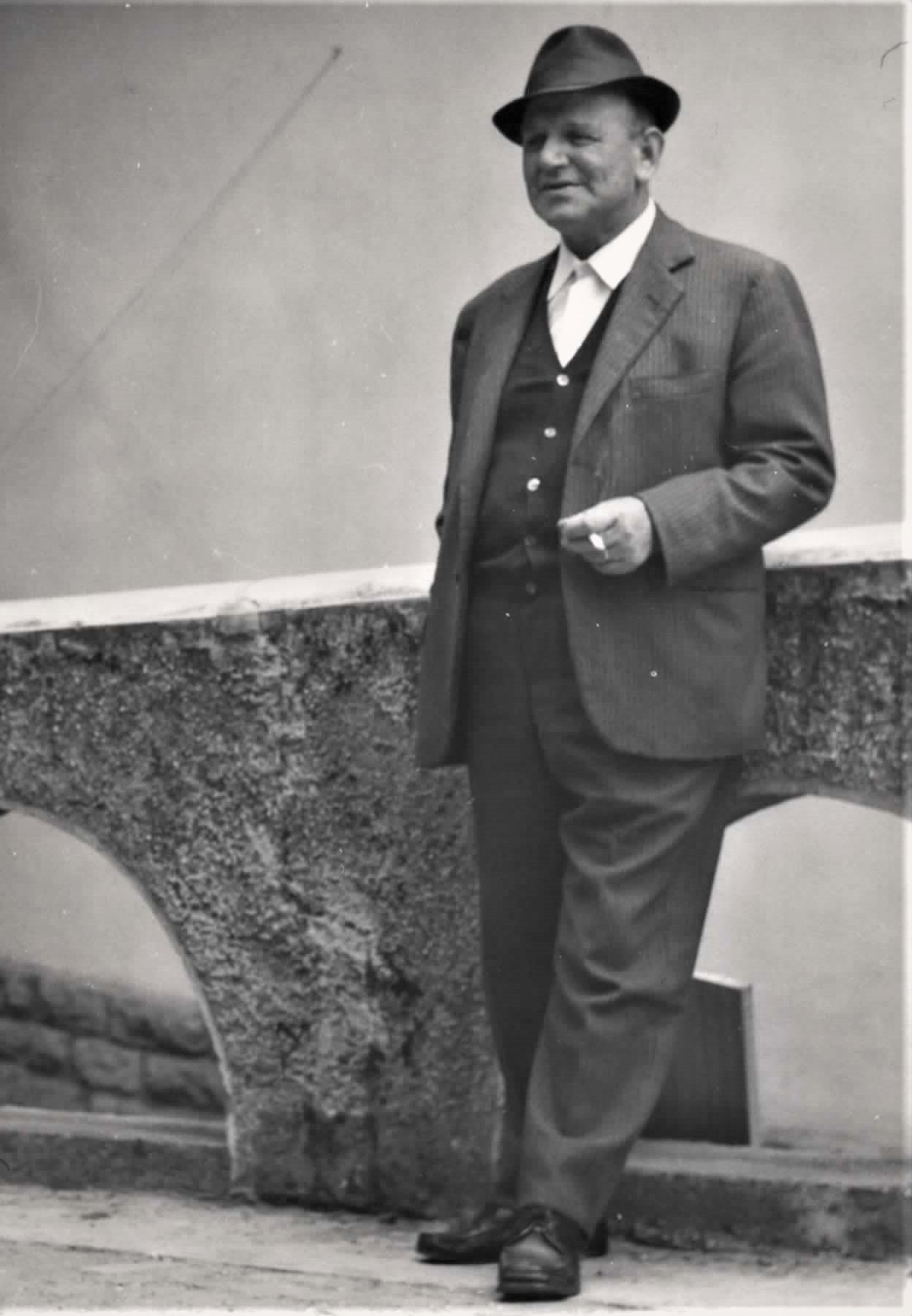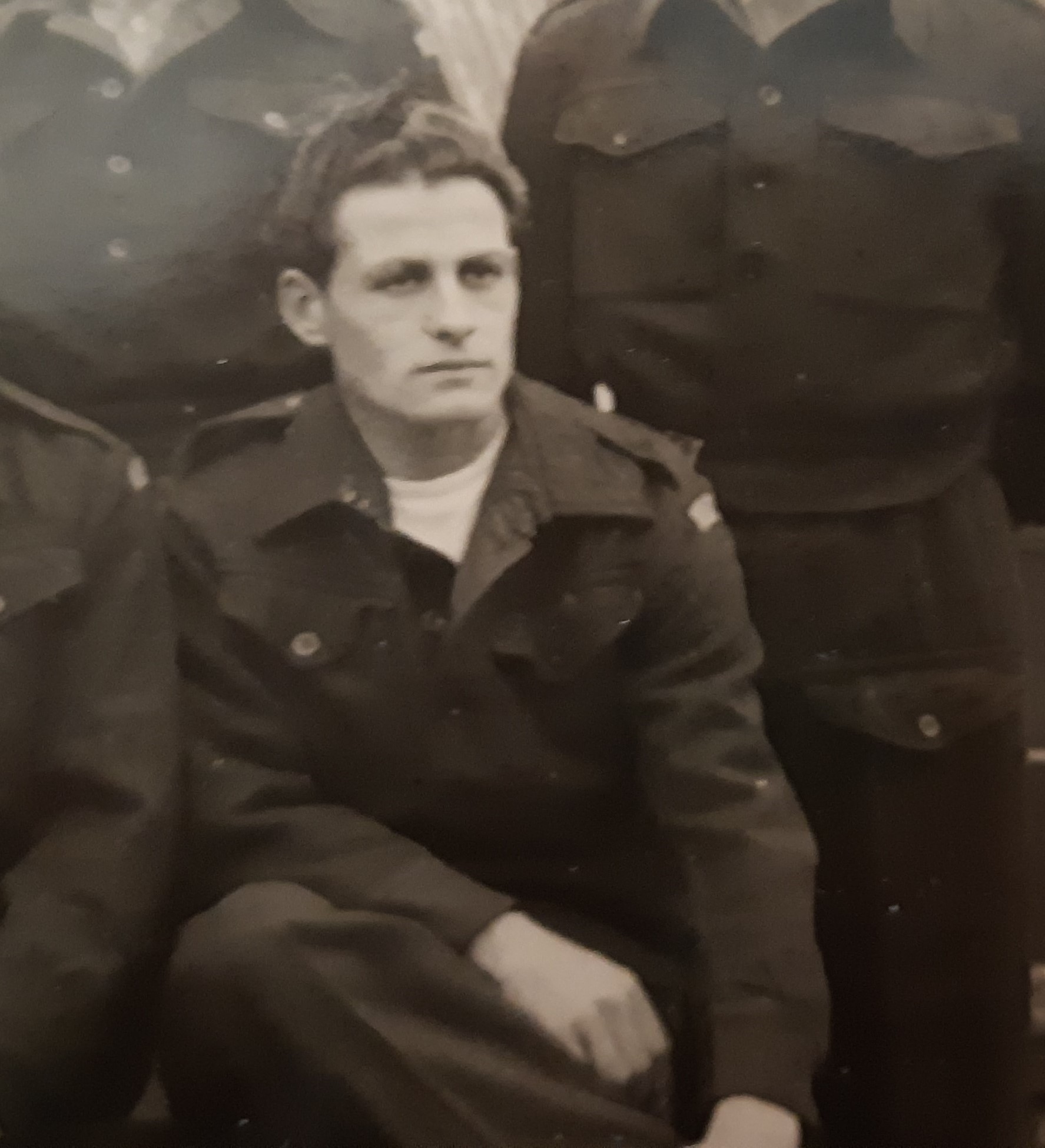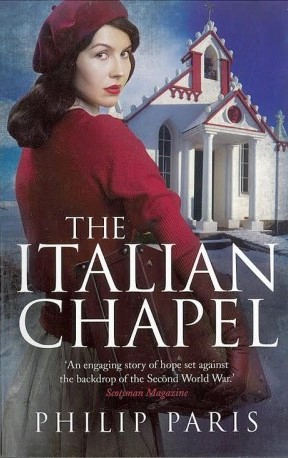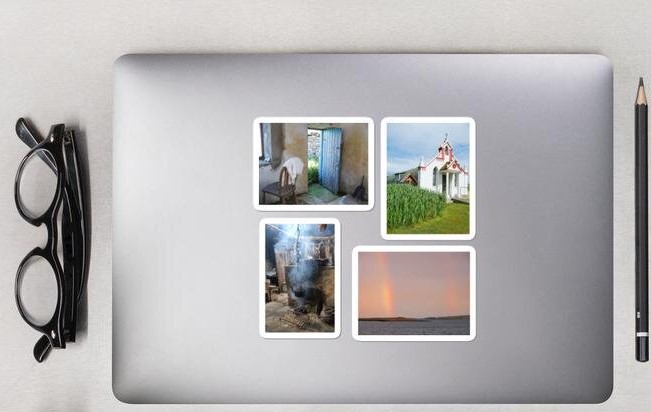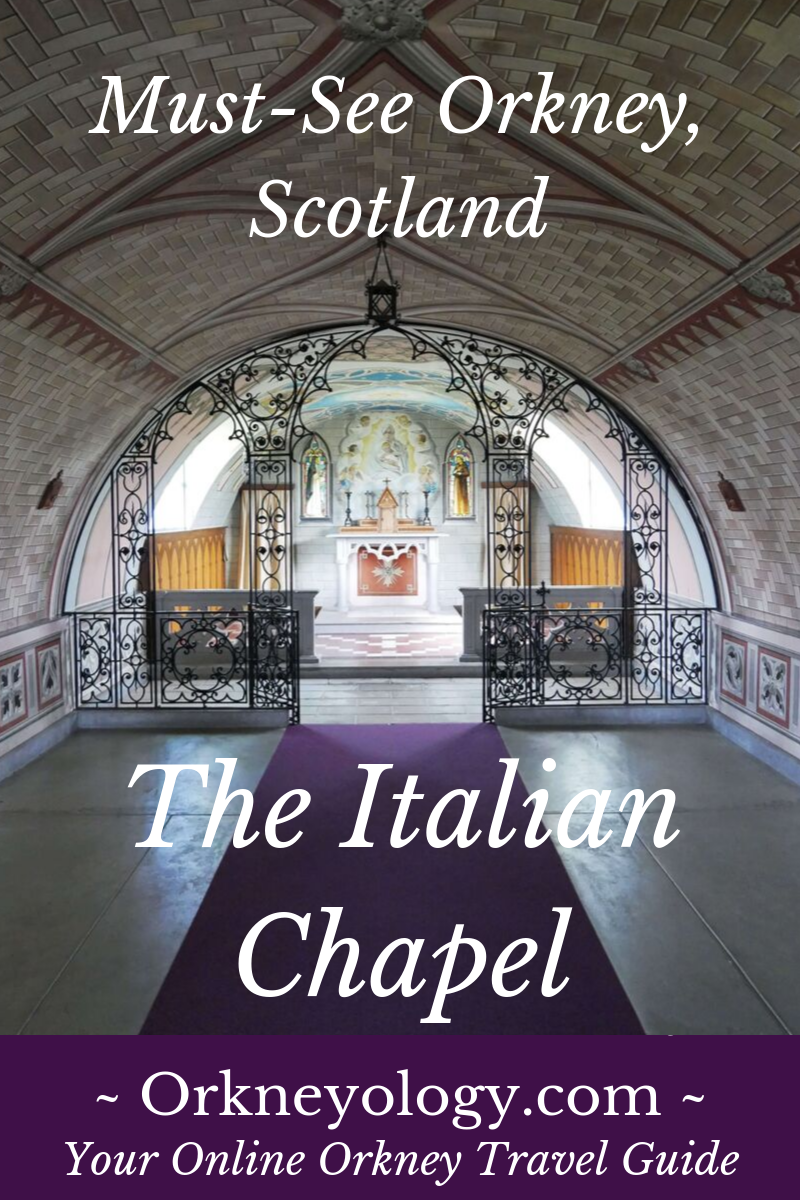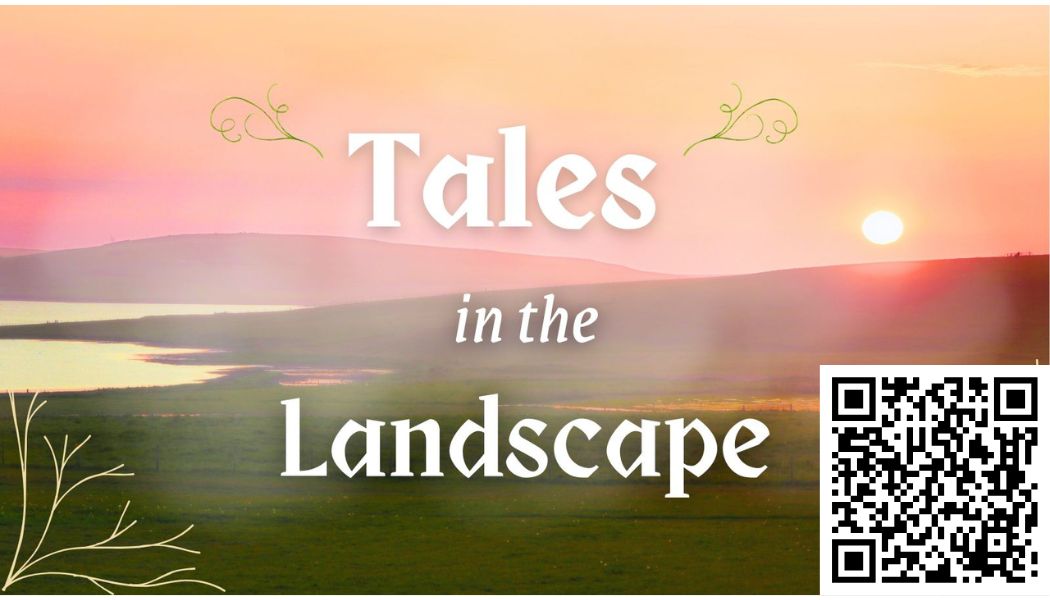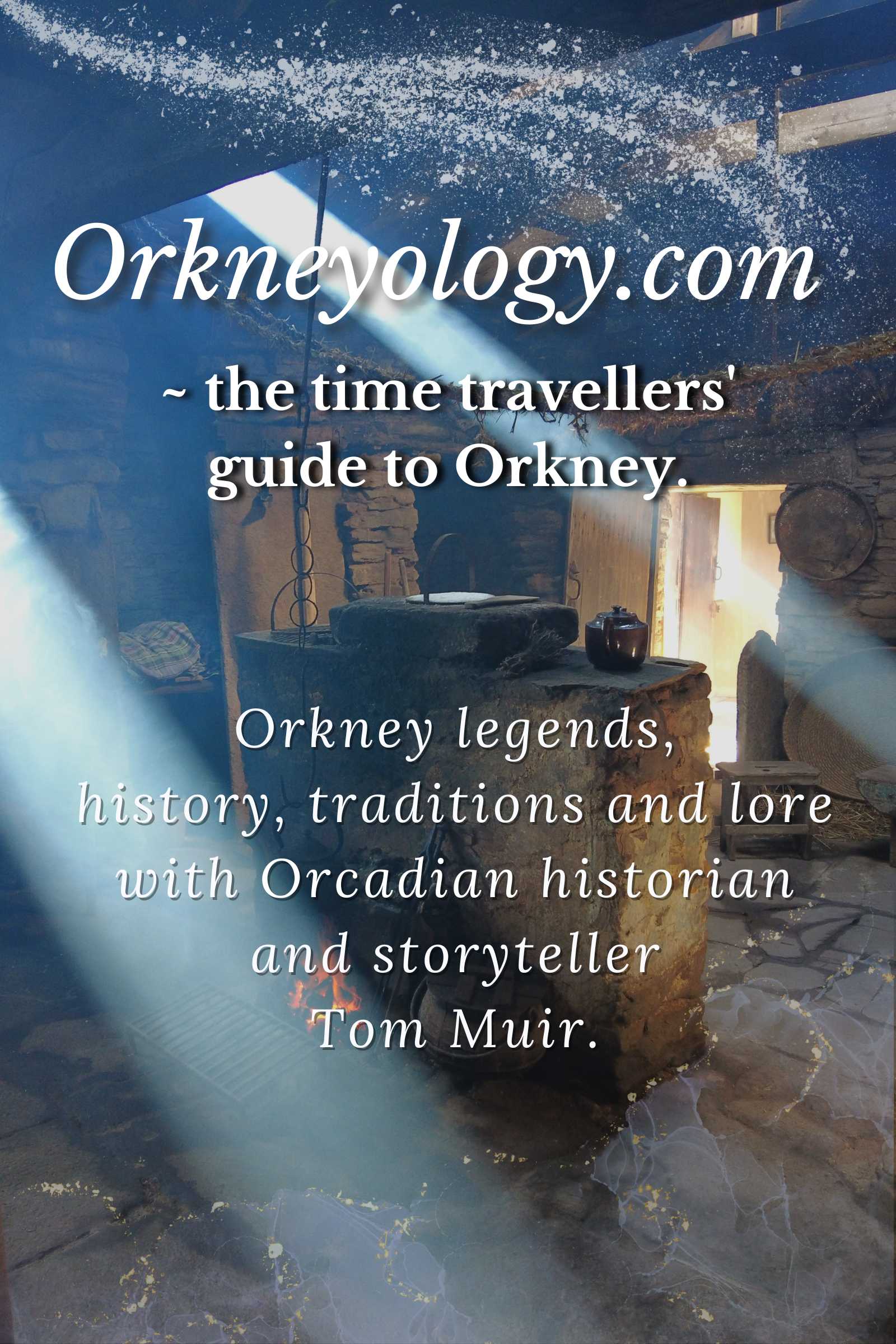The Italian Chapel
Orkney's Sanctuary of Peace
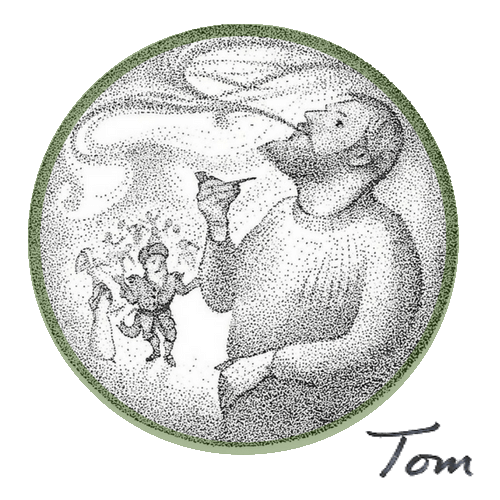
We rarely went on school trips when I was a peedie boy. It did happen, but they were few and far between. One of the earliest that I can remember was to have a profound effect on my life. It was a trip to see the Italian Chapel.
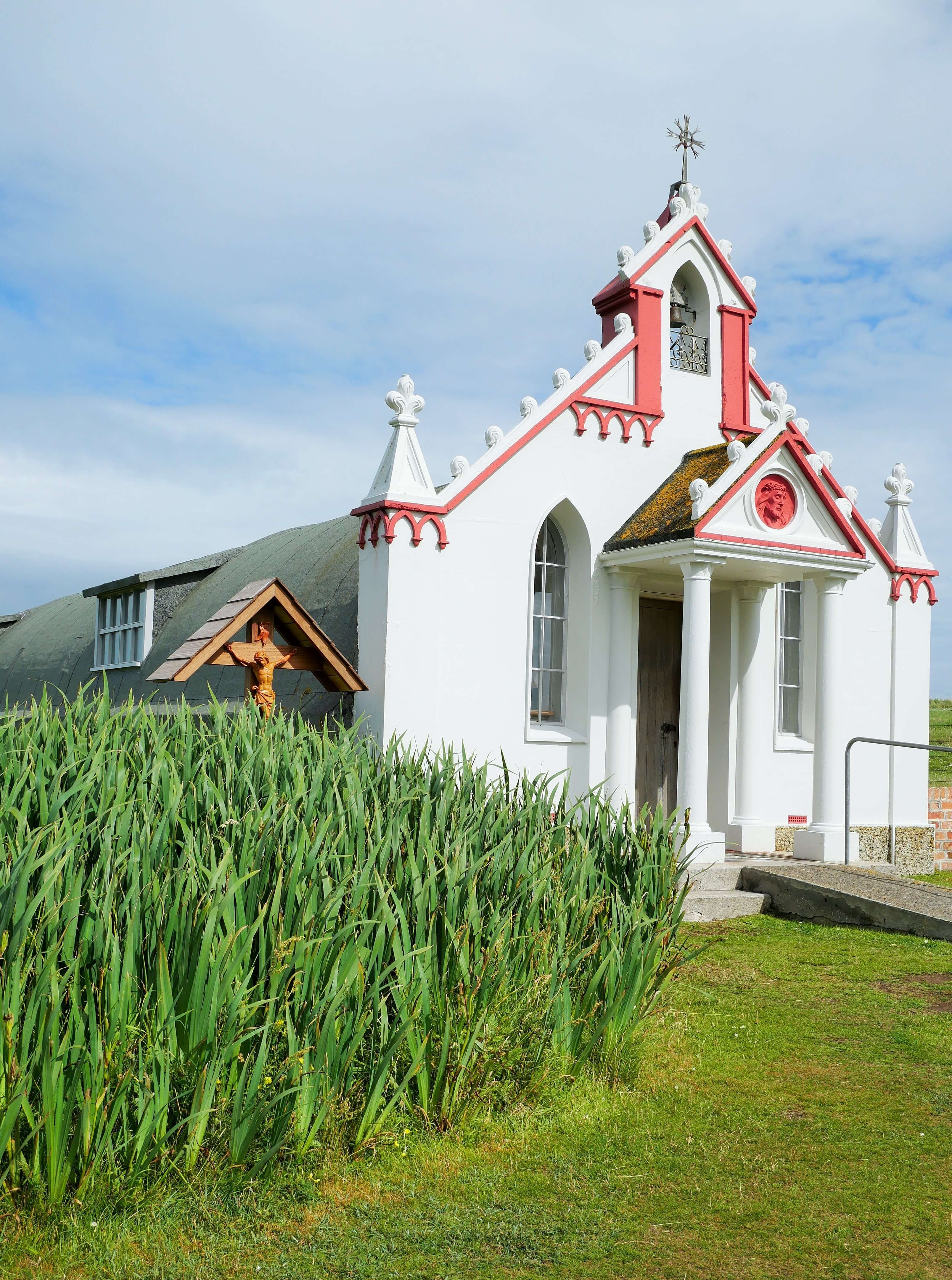
Early memories
It had been announced at the school that we were to go, and the buzz around the classroom was electric. I had no idea what the Italian Chapel was.
I went home and told my mum the exciting news. She went over to the ‘press’, a tall cupboard where the food was stored. On the top shelf were books and papers, tins of old photographs and letters.
She took something down and showed it to me. It was a colour postcard with a scalloped edge showing the interior of the chapel.
I gazed in wonder at the painting of the Madonna and the Christ child, who was holding an olive branch.
The symbolism was lost on me - I was very young - but the beauty of it was not. I couldn’t believe that there was such a place in Orkney.
What's on this page?
How the Italian Chapel came to be
Building the Churchill Barriers
Neglect and restoration of the Italian Chapel
How to visit the Italian Chapel
(Hover over each photo to read a full description.)
How the Italian Chapel came to be
That first class visit to the Italian Chapel was an overpowering experience.
We had driven over the first of the Churchill Barriers to access the tiny island of Lamb Holm, on which the chapel stands.
Italian Prisoners of War had built the road, I was told. They had been working on the construction of the Barriers.
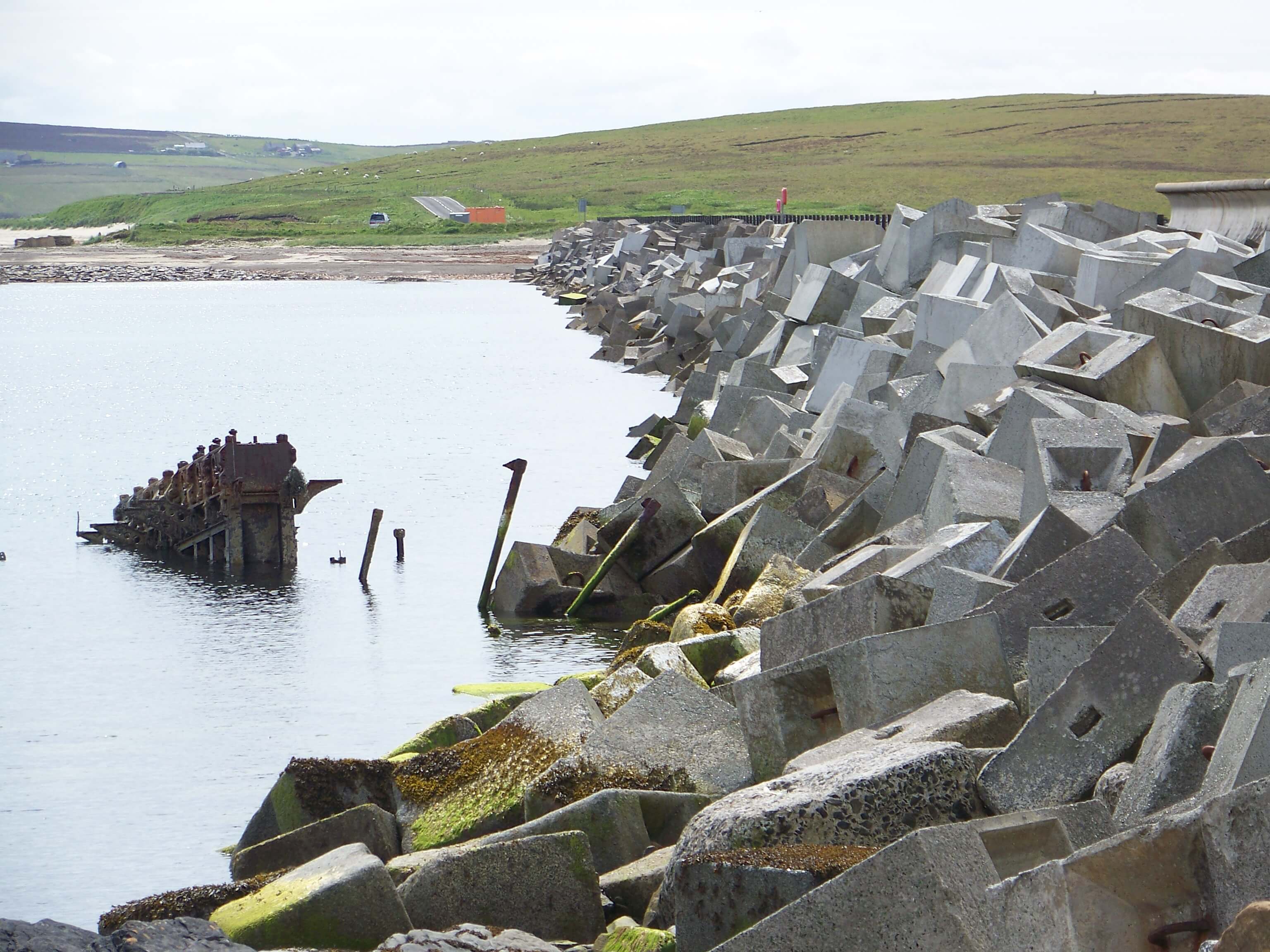
I still remember the feeling of awe when I first saw the chapel, even after nearly 50 years. I stared in wonder at the statue of St George slaying the dragon.
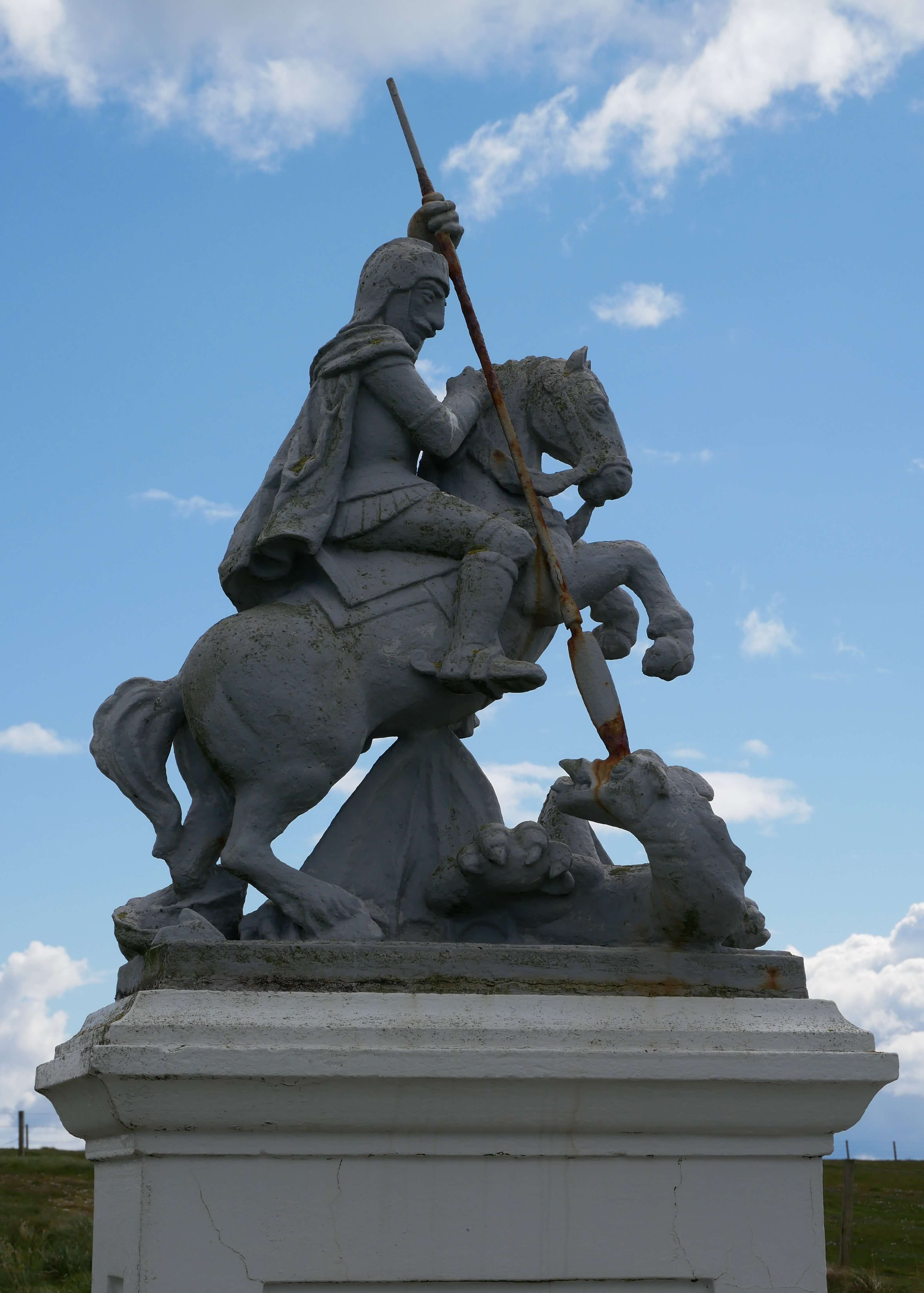
We continued to drive south, over the remaining three barriers.
Old ships lay in the sea by the side of these causeways; blockships sunk to prevent German U-boats from entering Scapa Flow. Too late for the 834 men and boys who died on HMS Royal Oak when the ship was sunk by U-47 on 14th October 1939.
The rusting remains of the blockships were a lot more intact then than they are now. The ships date from both World Wars, when the countries of the world consumed their young.
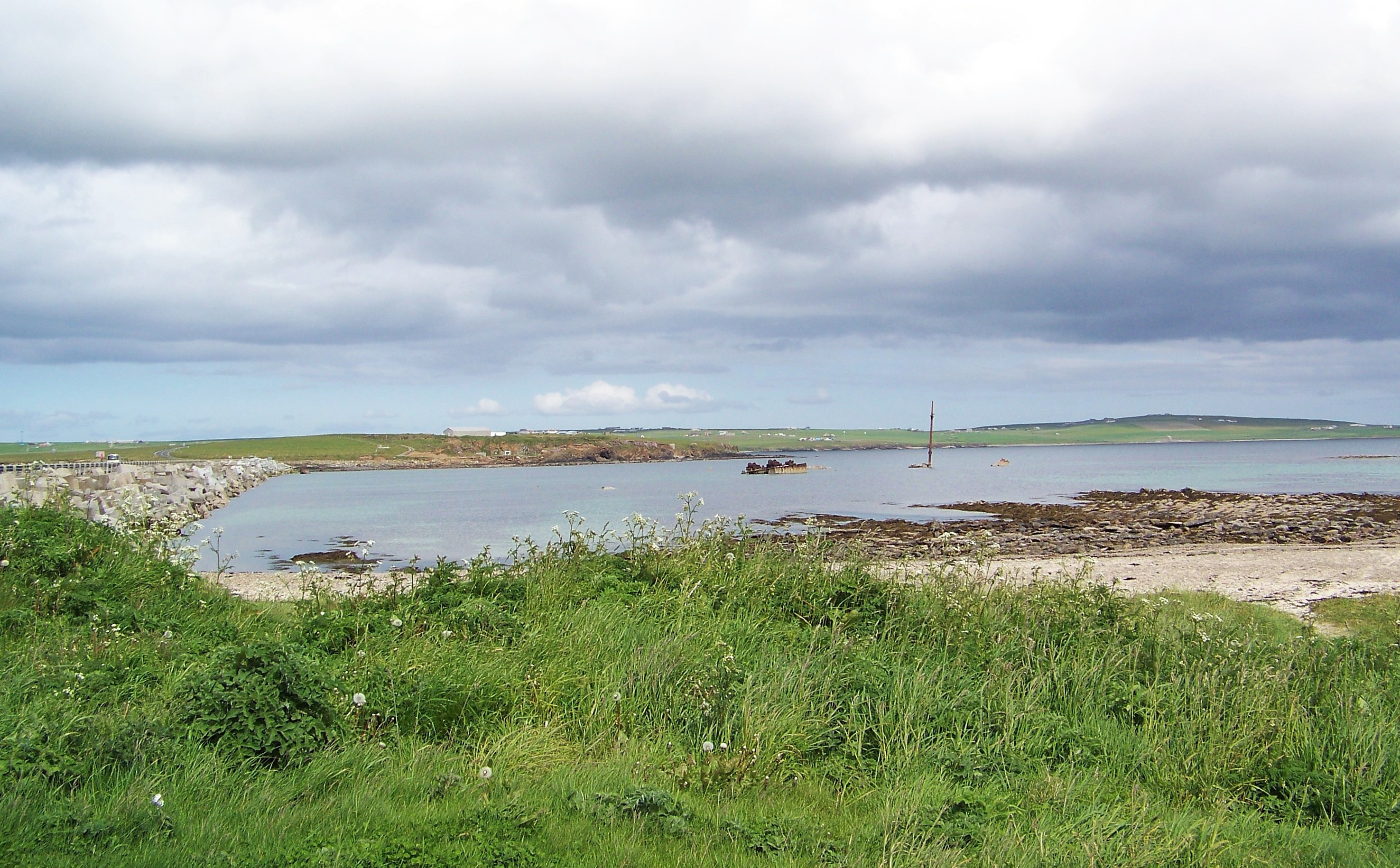
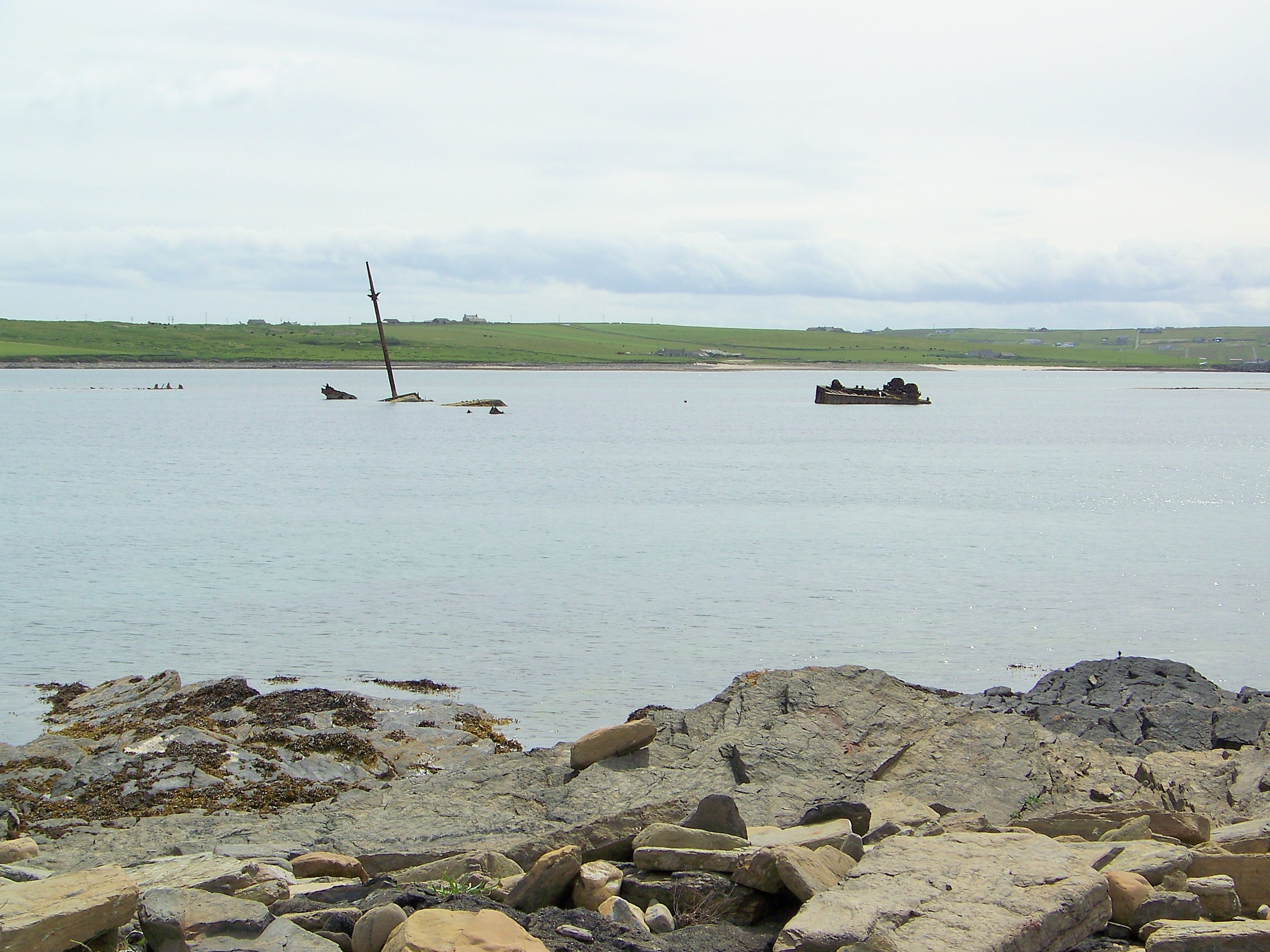
Domenico Chiocchetti, POW
While the Italian Chapel was the work of many skilled hands, it was truly the dream of only one man - Domenico Chiocchetti.
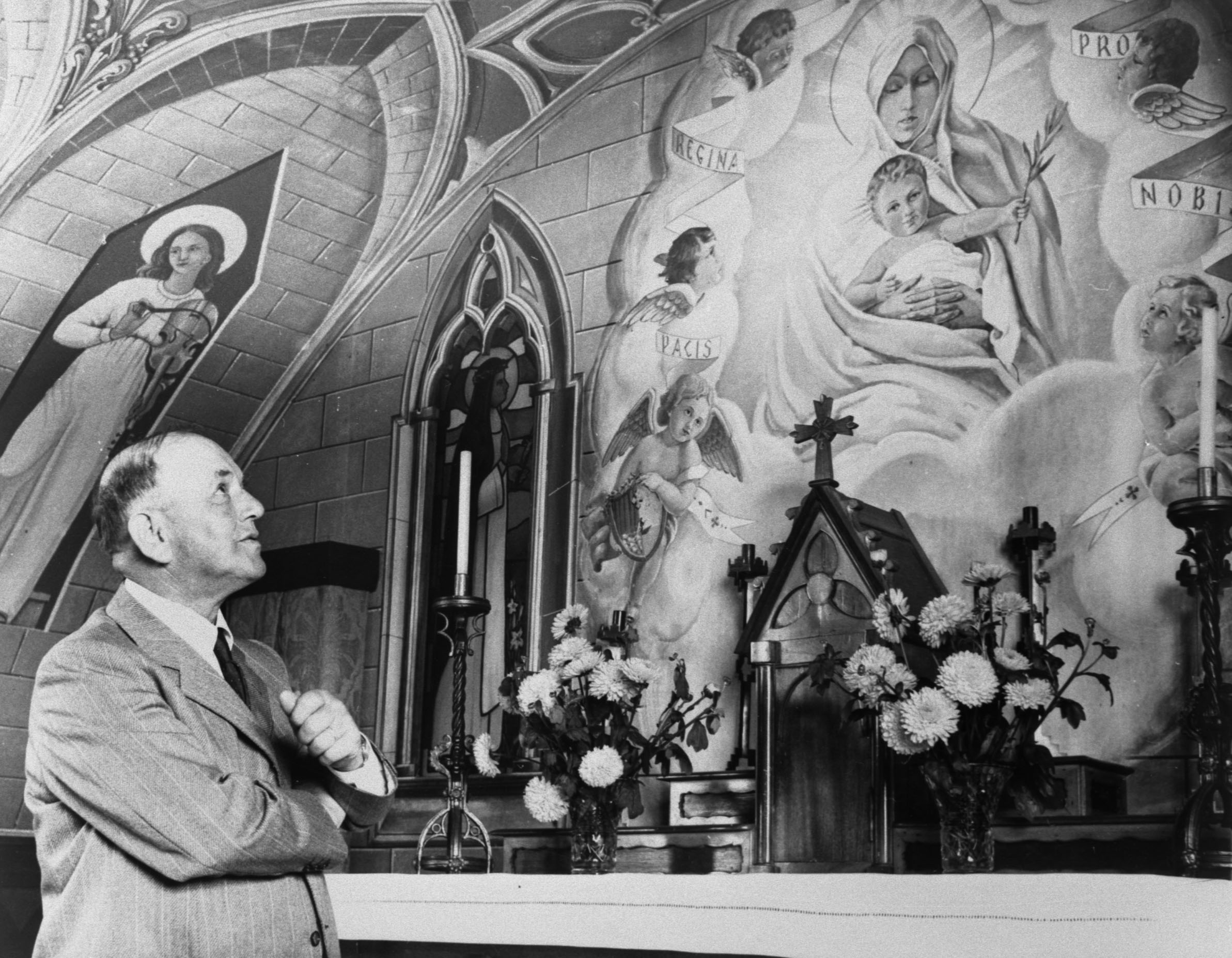 Photo courtesy of the Orkney Library & Archive
Photo courtesy of the Orkney Library & ArchiveThe vintage photos found on this page, along with many more, can be seen at the Orkney Library & Archive. Many thanks to the archive for permission to use them here.
Domenico was born in the small town of Moena in the Dolomite Mountains on 15th May 1910, the youngest of 12 children. He had dreams of becoming an artist, but coming from a poor family he had no opportunity to attend art college.
He did, however, get an apprenticeship with the church to train to become a church painter. He was able to study art, which included painting flat surfaces to resemble raised architectural features, like pillars and ceiling bosses.
Chiocchetti would use this skill to amazing effect in the Italian Chapel.
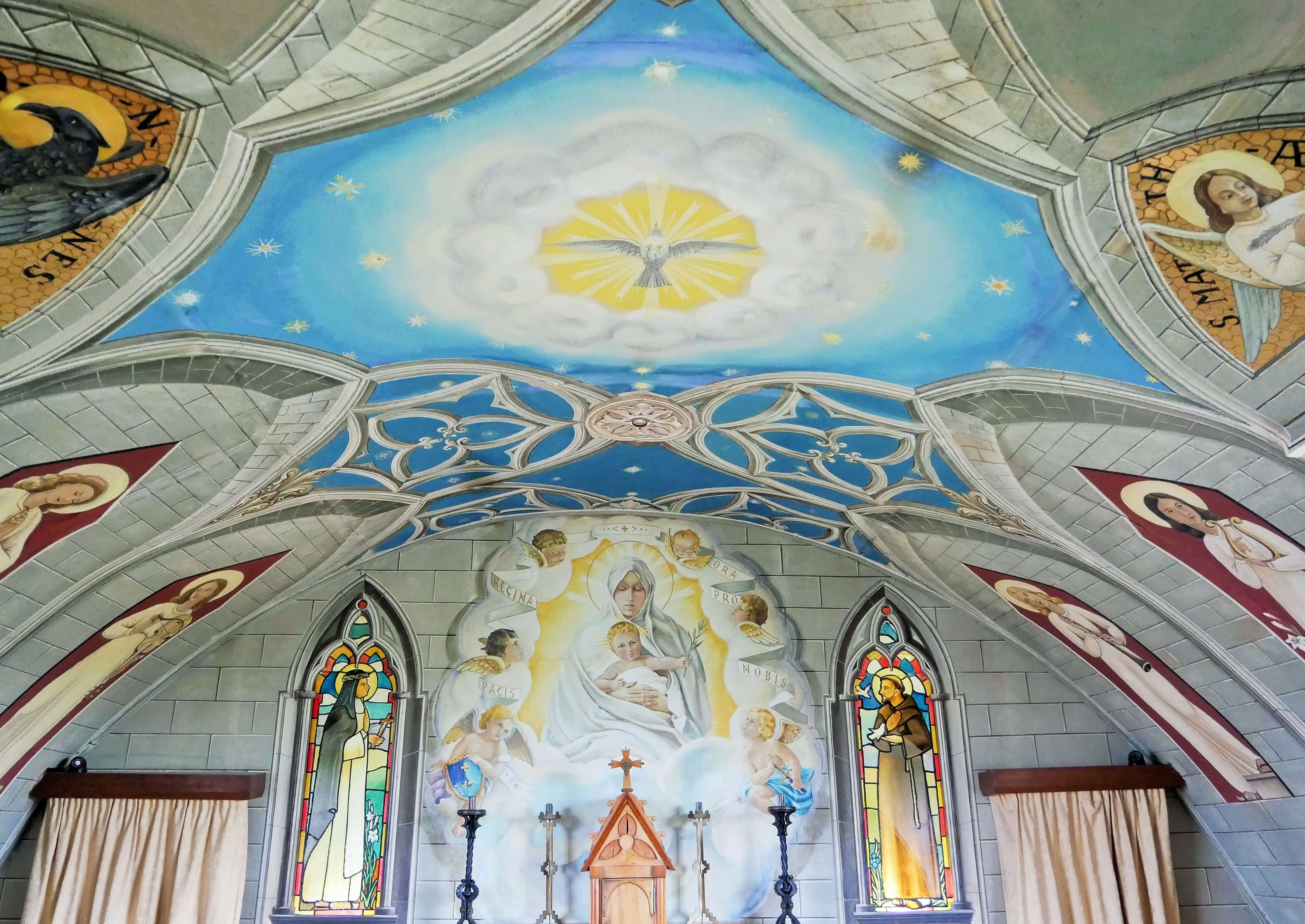
In 1939 Domenico was called up to fight in the war, joining the 6th Anti-Aircraft Regiment of the Mantove Division. He served for six months in the Libyan desert before being captured by Canadian troops.
He was sent to a POW camp in Egypt, but here his luck changed, as he later remembered:
“There was a request for artists among the prisoners and I came forward. I was taken to the English quarters where I was put to work on copying and enlarging family photographs. To me it seemed a paradise where I was well fed by an excellent Indian cook. I made more than a thousand copies while I was there, plus portraits from life.”
The Allies were faced with a serious problem. The Italian troops were demoralised and poorly supplied. They'd also been treated badly by their commanding officers, who, unlike their men, dined in style.
The disheartened soldiers surrendered in huge numbers. It was difficult to feed all these men and conditions in the POW camps were truly terrible. Here we see Chiocchetti’s compassionate nature and his loyalty to his friends coming to the fore.
“I stayed there for five months and was paid with Egyptian piastres which I used to spend on food for my famished companions in the camp.”
POWs in Orkney
In October 1940 the camp was to be sent to India, a prospect that Chiocchetti did not relish. But thanks to the intervention of a Scottish corporal, Chiocchetti was sent to Britain instead.
The ship that he sailed on went through the Suez Canal, down the east coast of Africa, around the Cape and into the Atlantic Ocean. They landed at Liverpool before being sent to Edinburgh by train and then on to Aberdeen. They were taken by sea, under destroyer escort, from Aberdeen to Orkney.
The POWs were taken ashore in small boats and landed at Burray - 1,200 men in all.
Lack of accommodation saw 225 prisoners sent back. Half of the prisoners, including Chiocchetti, were sent to the small island of Lamb Holm.
It was January 1942 and quite a climate change from North Africa.
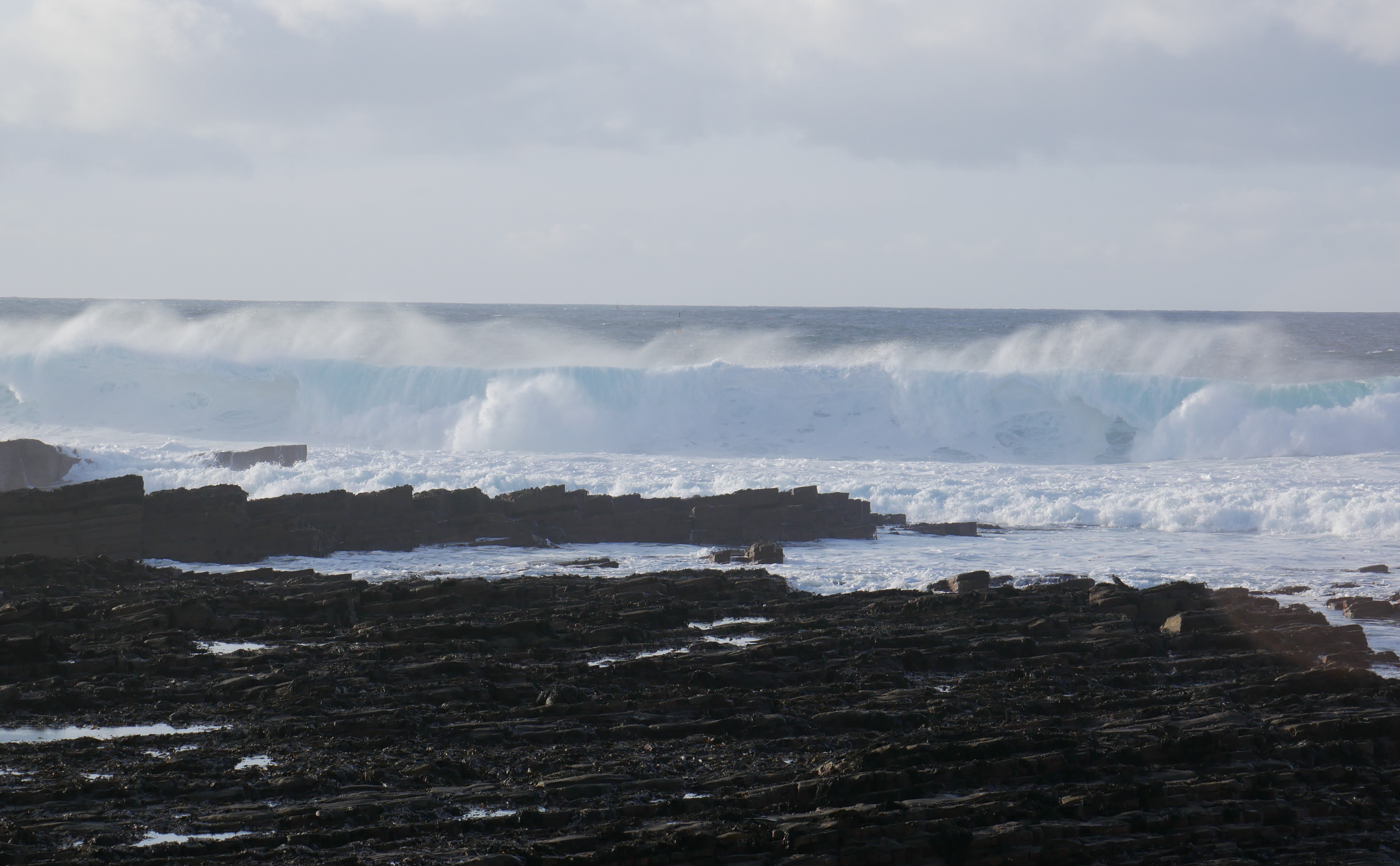
A difficult start
Orcadians in Burray looked on in fear when the enemy soldiers arrived. Some of the soldiers sang fascist songs and shouted slogans in support of Mussolini as they marched along the road on their new island home.
The prisoners wore red ‘target discs’ on their uniforms, a 12-inch (30.48 cm) disc - one on the back and two smaller discs on the leg and arm.
These were the points to be shot at if they tried to escape.
The discs also covered holes cut in their uniform, to prevent them from trying to fashion it into civilian clothing for an escape attempt.
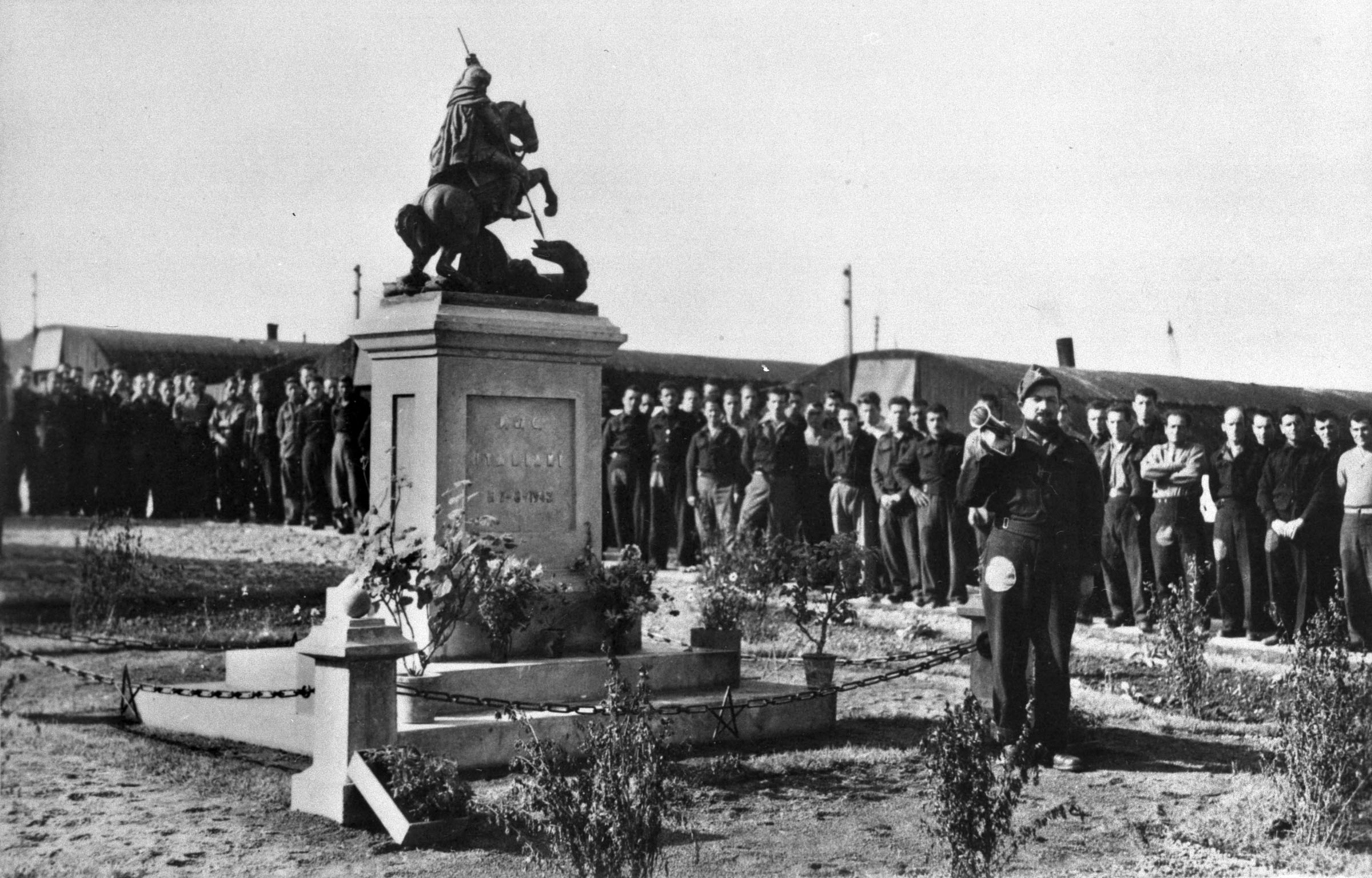 Photo courtesy of the Orkney Library & Archive - from the James Sinclair collection
Photo courtesy of the Orkney Library & Archive - from the James Sinclair collection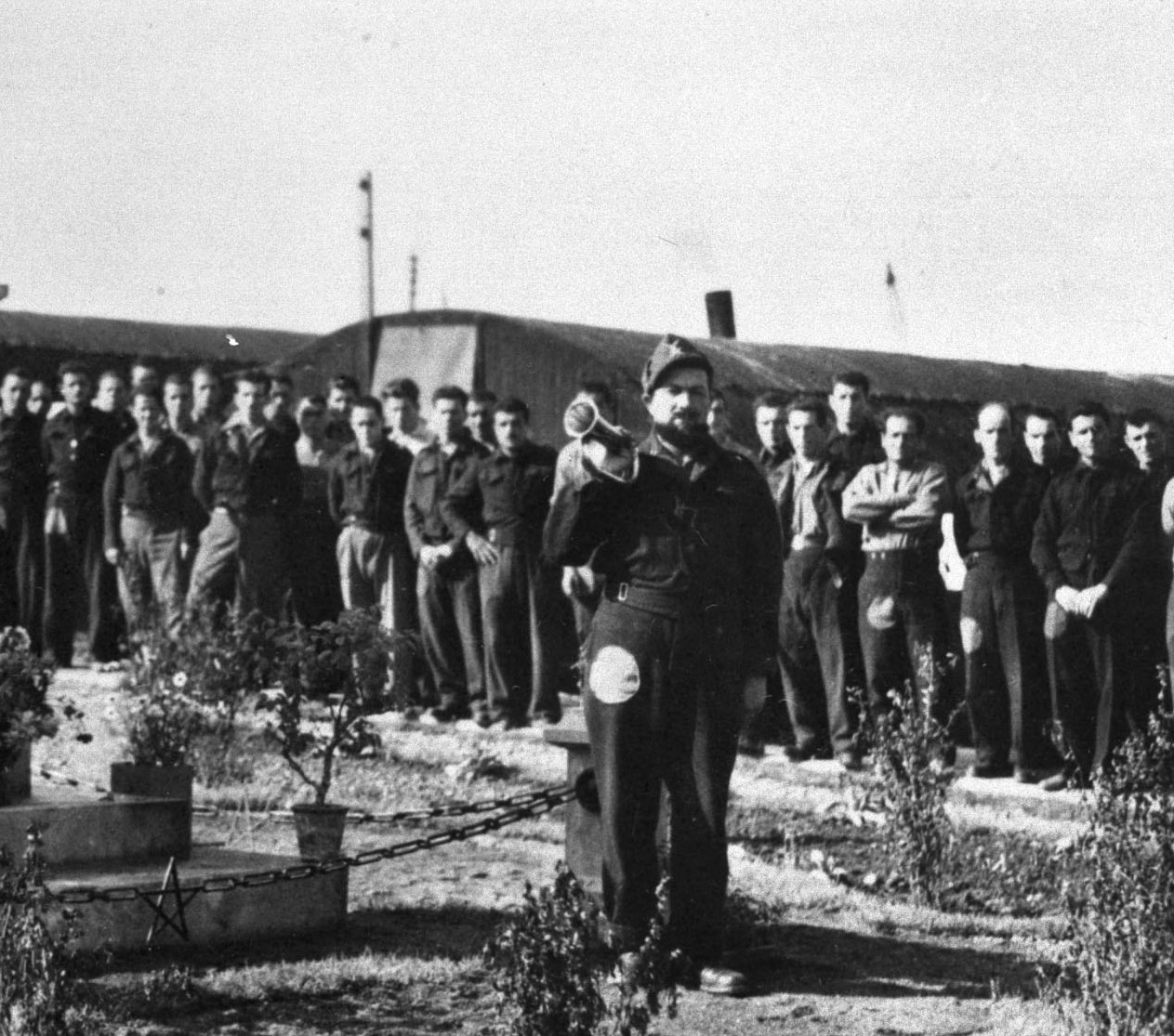 A closer view of the target discs
A closer view of the target discsTwo camps of Nissan huts were constructed - Camp 34 on Burray and Camp 60 on Lamb Holm.
Chiocchetti remembered his first impression of his new home:
“The little island could hardly have appeared most desolate: bare, foggy, exposed to the wind and heavy rain. The camp consisted of thirteen dark, empty huts, and mud.”
Building the Churchill Barriers
The Italians found themselves working on the construction of the Churchill Barriers, designed to seal off the four eastern entrances to the naval base at Scapa Flow.
The German submarine, U-47, had used the northern most channel to gain entry into Scapa Flow and sink the old battleship HMS Royal Oak. Winston Churchill, who at that time was First Lord of the Admiralty, ordered the eastern channels to be blocked permanently.
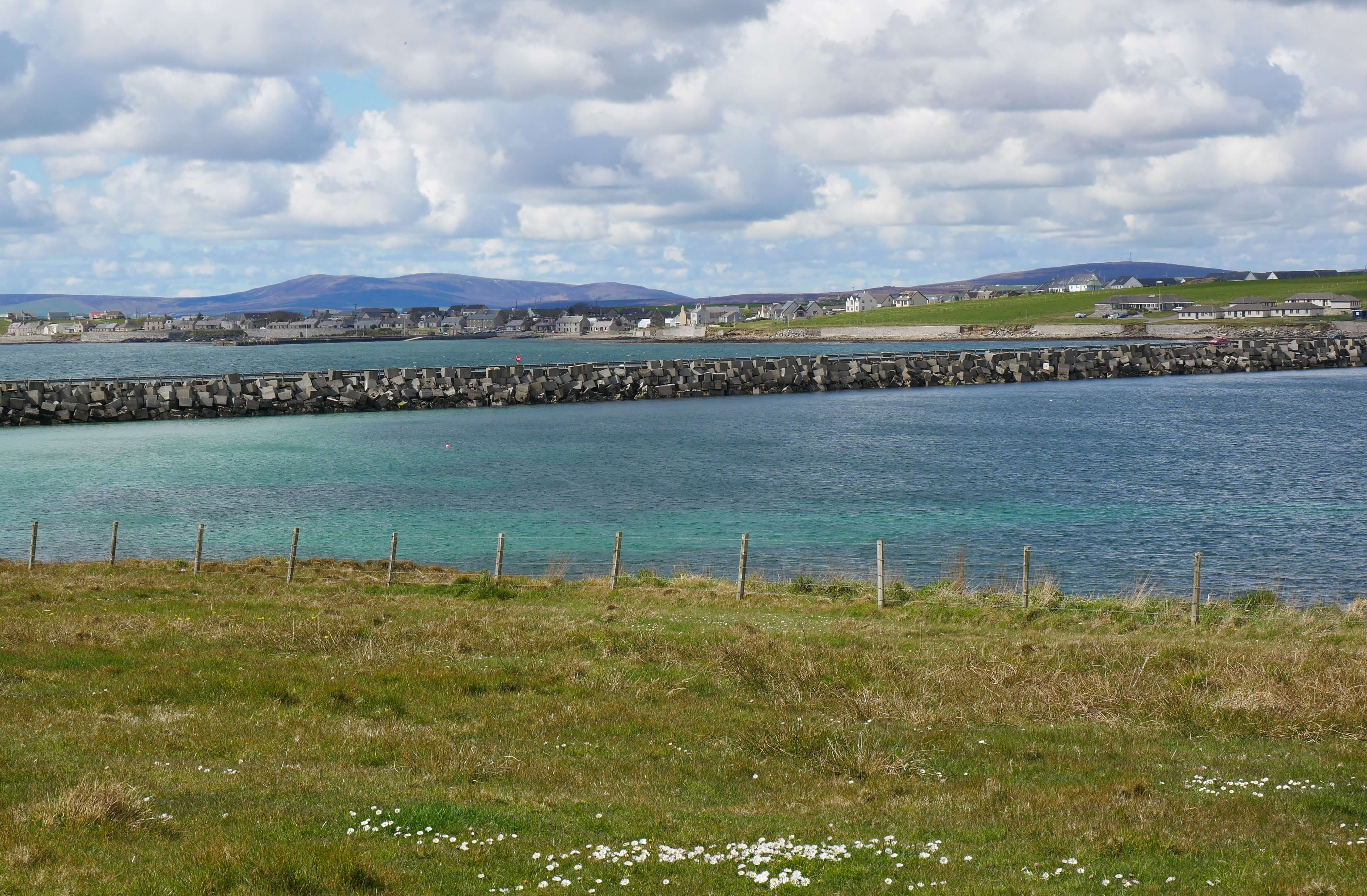
The construction company, Balfour Beatty & Co Ltd, were struggling to find enough workers due to conscription to the armed forces. Irish workers had been used, until pro-IRA slogans had been found in an accommodations hut.
With the Irish sent away the Admiralty requested 2,900 Italian POWs to fill the void.
A report dated 30th August 1942 states that 1,170 Italians were in Orkney; 576 in Camp 34, Burray, and 594 in Camp 60, Lamb Holm.
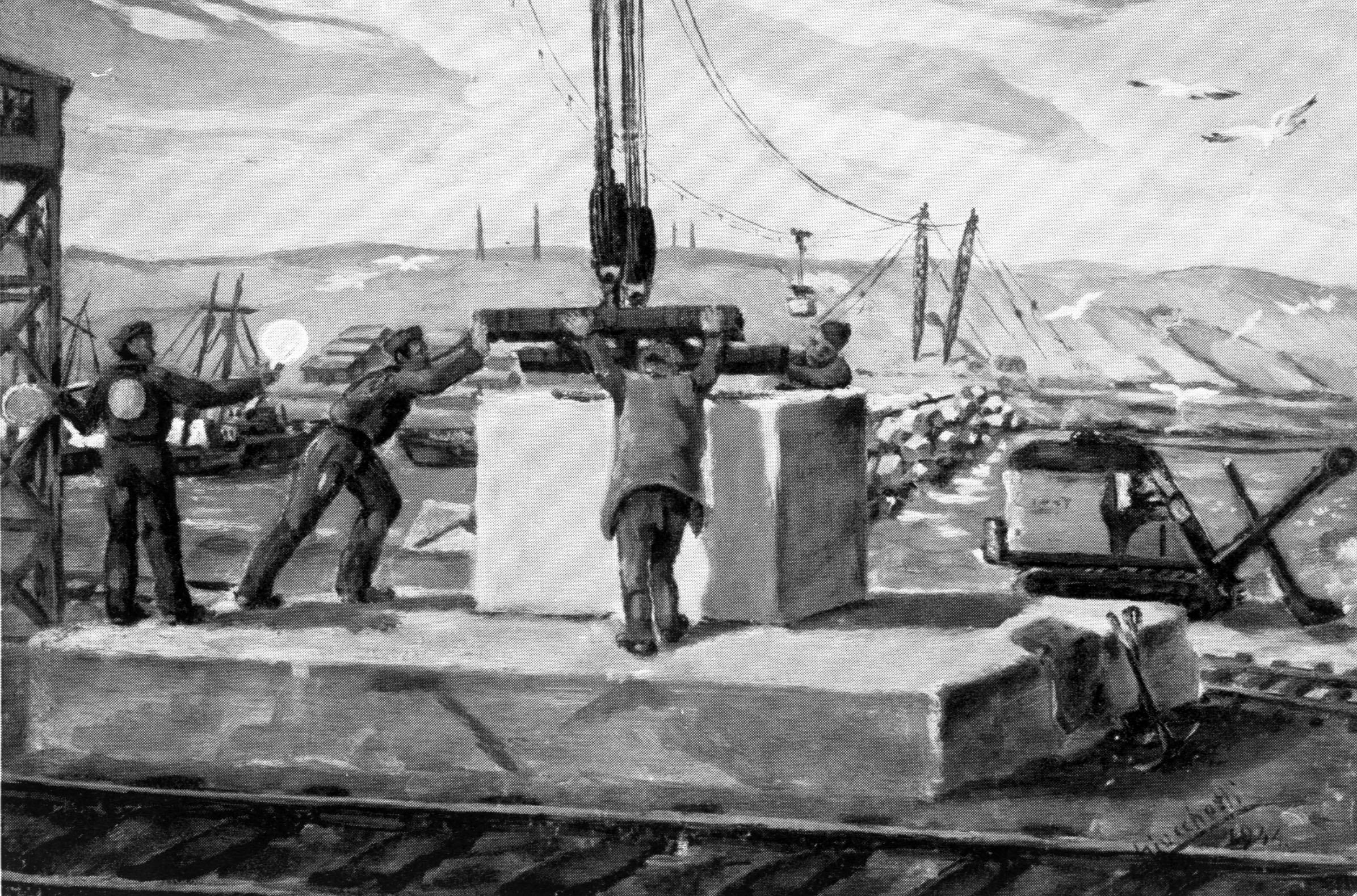 Courtesy of Orkney Library & Archive
Courtesy of Orkney Library & ArchiveThere was still a serious lack of accommodation huts. Some prisoners were accommodated in tents; 174 in Camp 34 and 93 in Camp 60.
This resulted in men being sent south in September, before the bad weather set in.
Numbers fluctuated during the construction of the Barriers, from 1,200 Italian and 520 British workers during its peak in 1943 to the more usual number of 920 Italians and 350 British workers at other times.
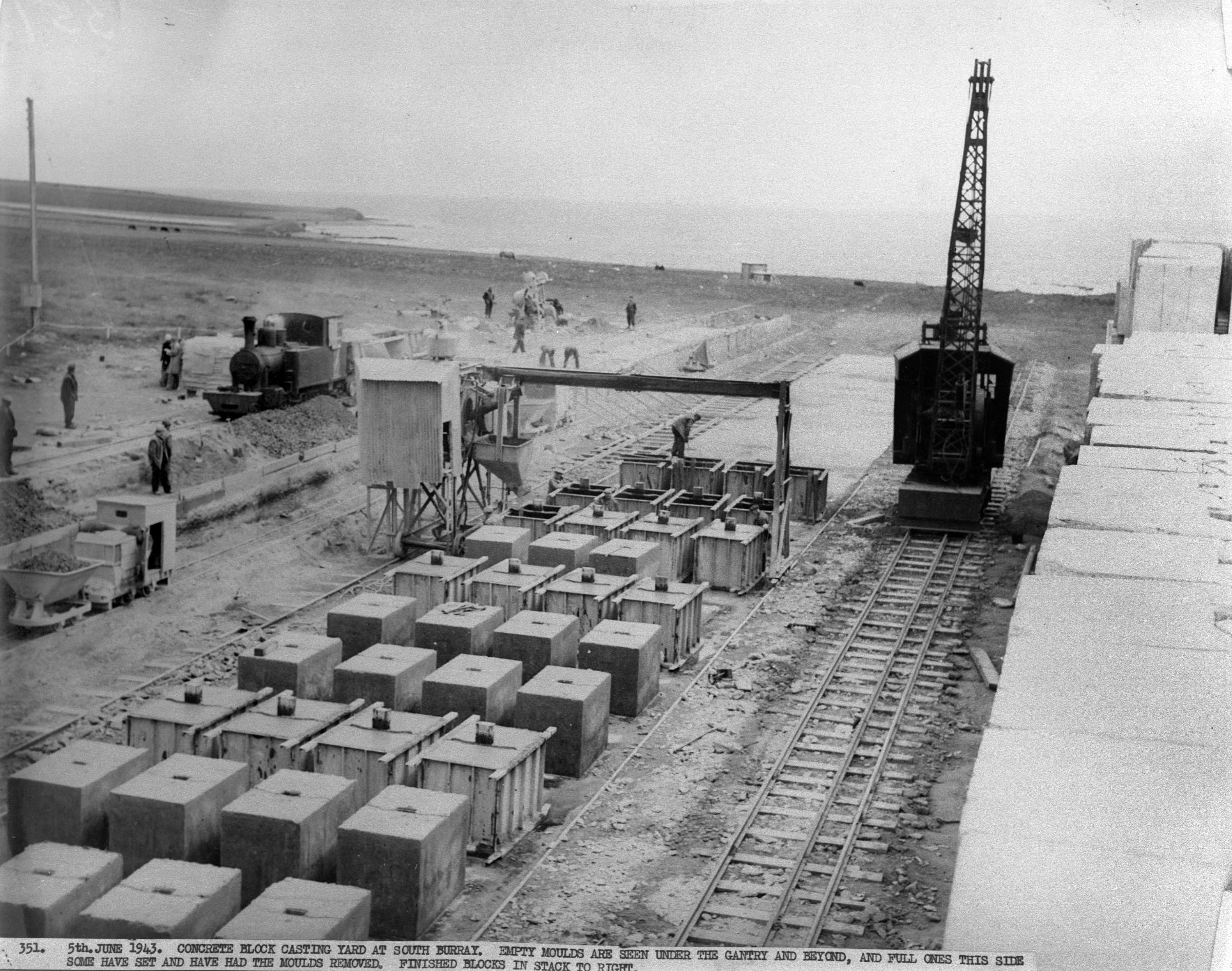 Photo courtesy of the Orkney Library & Archive
Photo courtesy of the Orkney Library & ArchiveOn strike
Using POWs to construct military defenses was actually against the Geneva Convention. The Italians went on strike.
They were punished by getting only bread and water for three days, with normal meals every fourth day. Searches of their accommodation huts, by day and night, were also used to break their resolve.
A meeting was called by the new camp commander, Major Buckland, along with the Provost of Kirkwall, Peter C. Flett. The prisoners were assured that they were not building barriers but civilian causeways.
The prisoners agreed to return to work.
There would be four separate strikes during 1942, mostly organised by hard-line fascists. These men were later removed from the camp and relations began to improve.
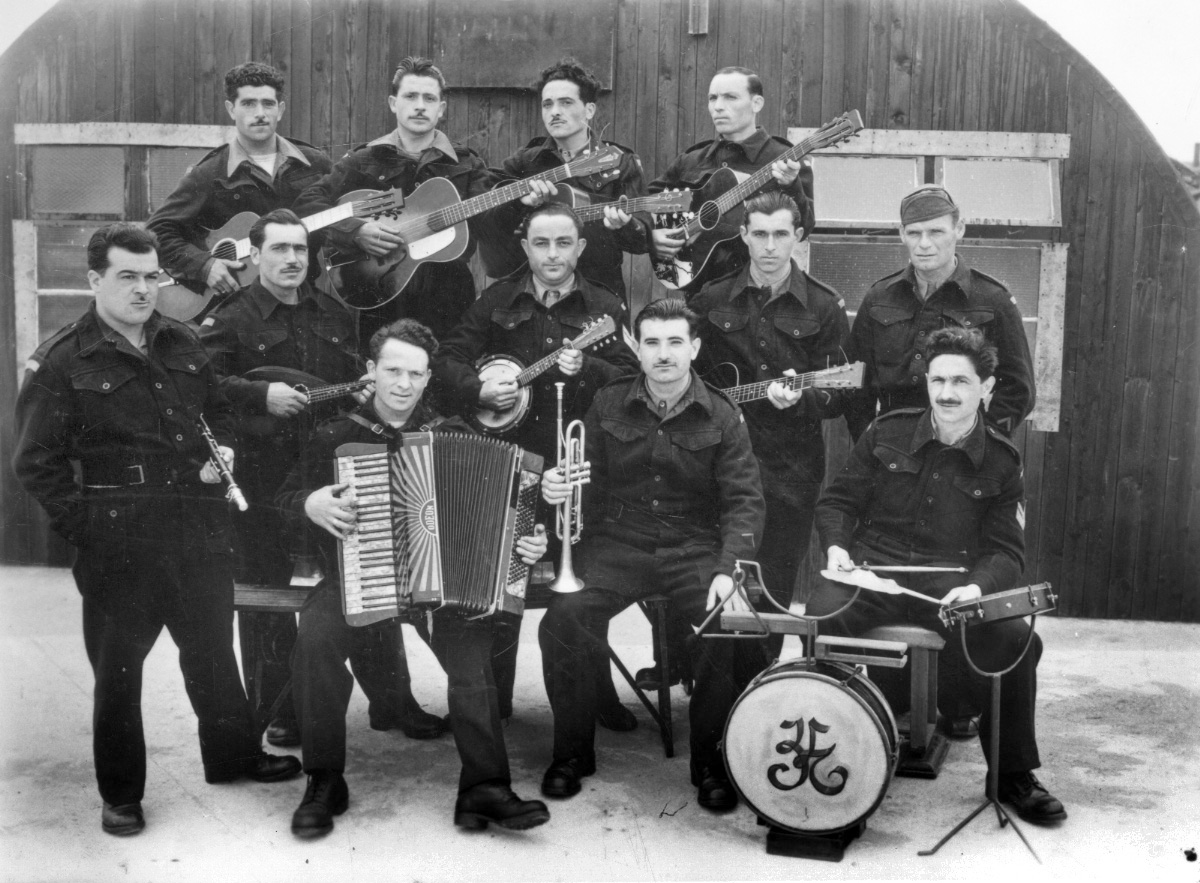 Photo courtesy of the Orkney Library & Archive - from the James Sinclair collection
Photo courtesy of the Orkney Library & Archive - from the James Sinclair collectionBetter days
A new commander at Camp 60 on Lamb Holm made a big difference to the prisoners’ lives.
Major Thomas Pyres Buckland loved Italy, having spent time there in his younger days. He spoke the language, badly (as one prisoner observed), and admired the art and culture of the country.
Buckland saw that the Italian POWs had little interest in working on the Scapa Flow defences, so he decided to introduce ‘piece work’.
Instead of working a fixed number of hours a day he gave them a certain amount of work to do. Once they had finished their allotted amount they could stop for the day.
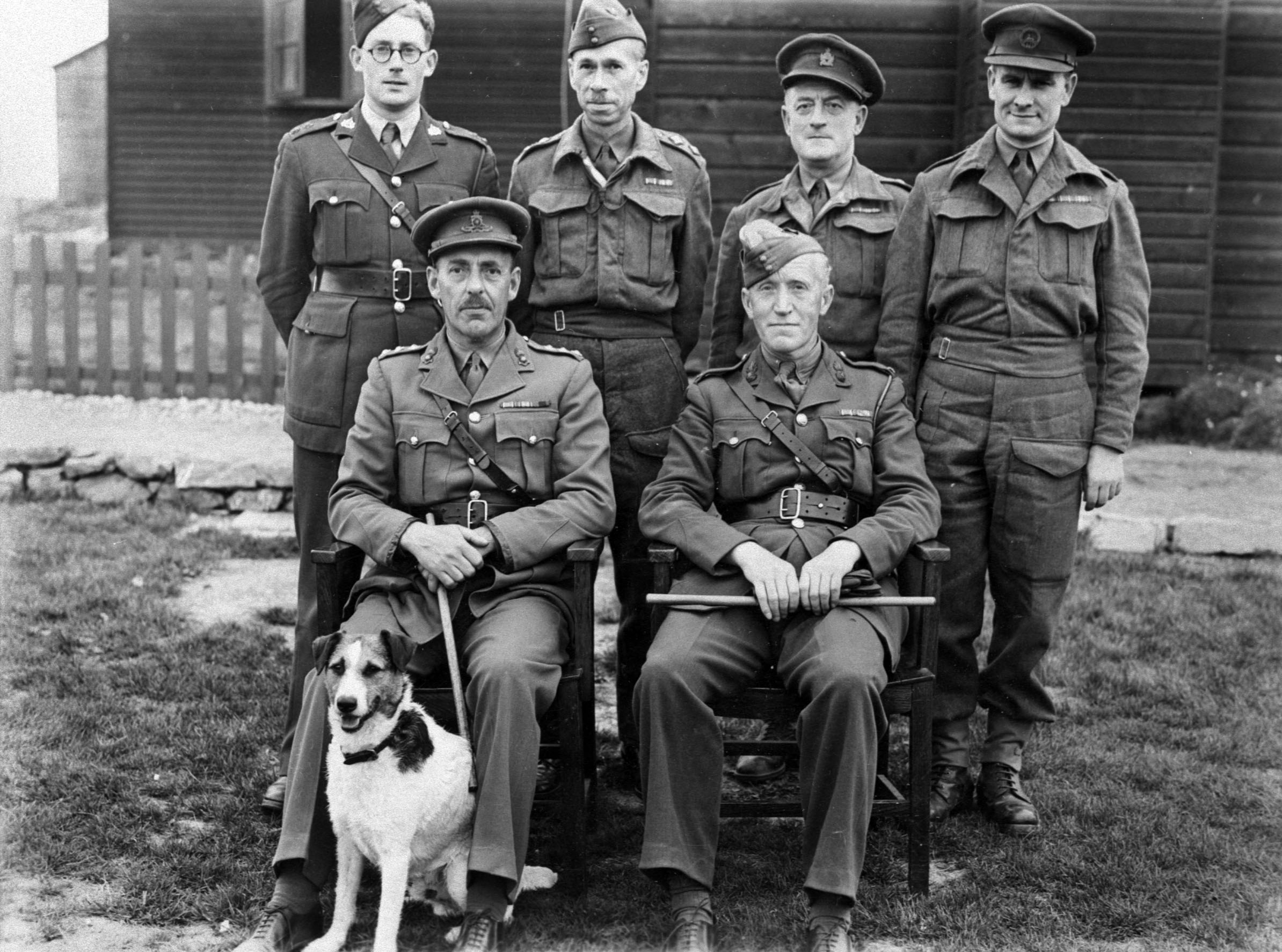 Photo courtesy of the Orkney Library & Archive - from the James Sinclair collection
Photo courtesy of the Orkney Library & Archive - from the James Sinclair collectionThis proved popular. The work speed increased and the men achieved an extra hour or two off.
The POWs were paid for their work. Some of it was in ‘Camp Money’ - tokens that could be spent in a works canteen. The men could have the rest of their wages credited to them, to be paid out to their families.
Life in the camp
Life was very harsh for the POWs. Accommodation was cramped and insufficient at times. The camp infirmary was basic, and any serious cases had to be dealt with at the Balfour Hospital in Kirkwall.
At the start of the construction the prisoners were expected to work ten hours a day, six days a week during the summer months and six hours a day in winter, when the lack of light made work impossible.
Bronchitis and rheumatism were regular complaints.
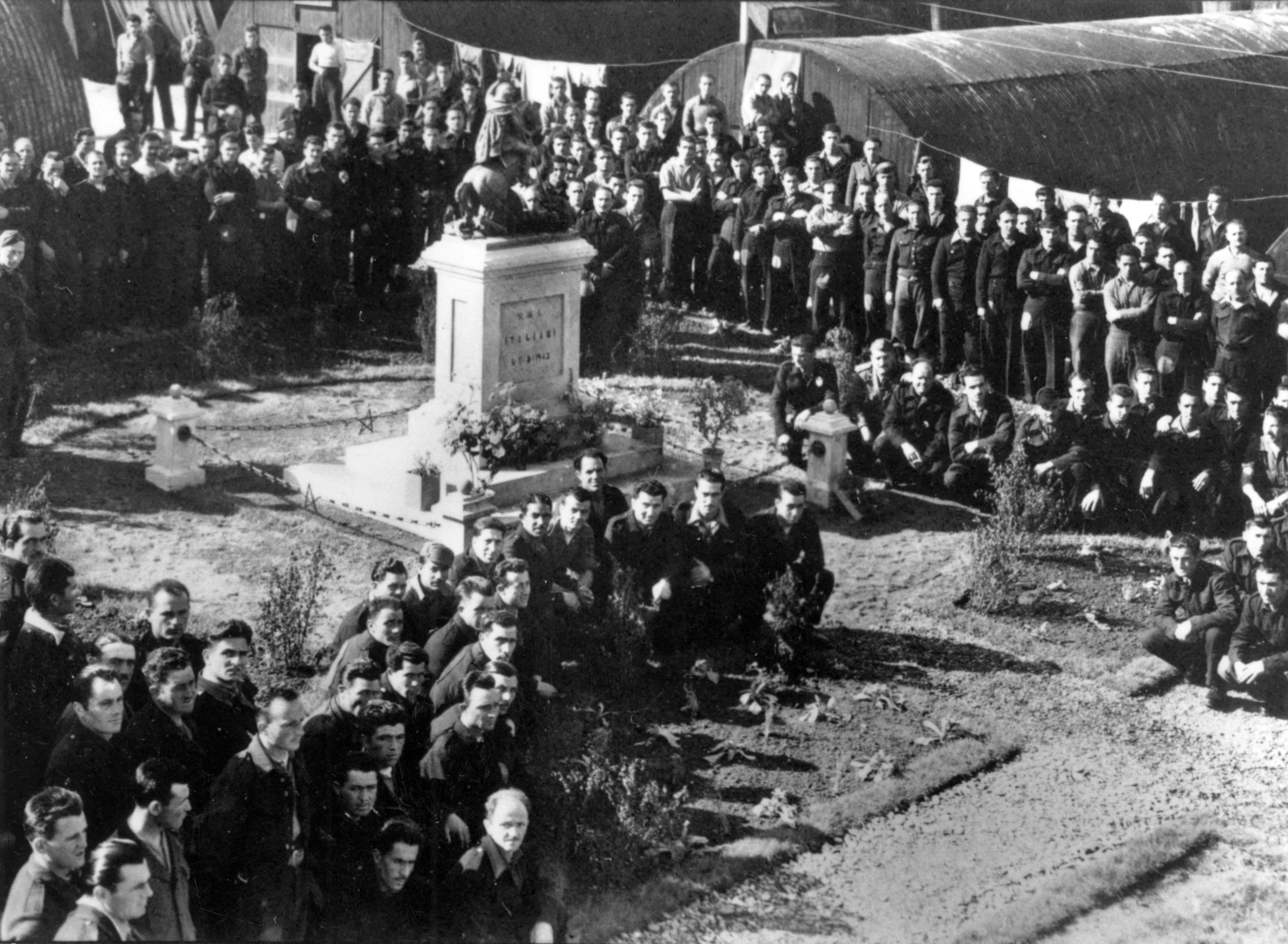 Photo courtesy of the Orkney Library & Archive - from the James Sinclair collection
Photo courtesy of the Orkney Library & Archive - from the James Sinclair collectionLife as a POW had the same sense of routine as army life. Reveille was at 06:00 in summertime, or sunrise in winter. Lights out was at 22:00.
Roll-call in the morning was sometimes followed with an extra one after work, to keep the prisoners on their toes.
Any British money or weapons found during searches were confiscated. The rules were strictly implemented.
Irrepressible
One day Chiocchetti caught a seagull and pained one of its wings red and the other wing green and then let it go. The bird had no trouble flying, suggesting that it was probably poster paint rather than oil-based paint. It flew around the camp, much to the delight of the other prisoners.
What they were seeing was, of course, the Italian flag flying over them. Chiocchetti was sent to the cells for his offense, but he felt that the joke was worth it.
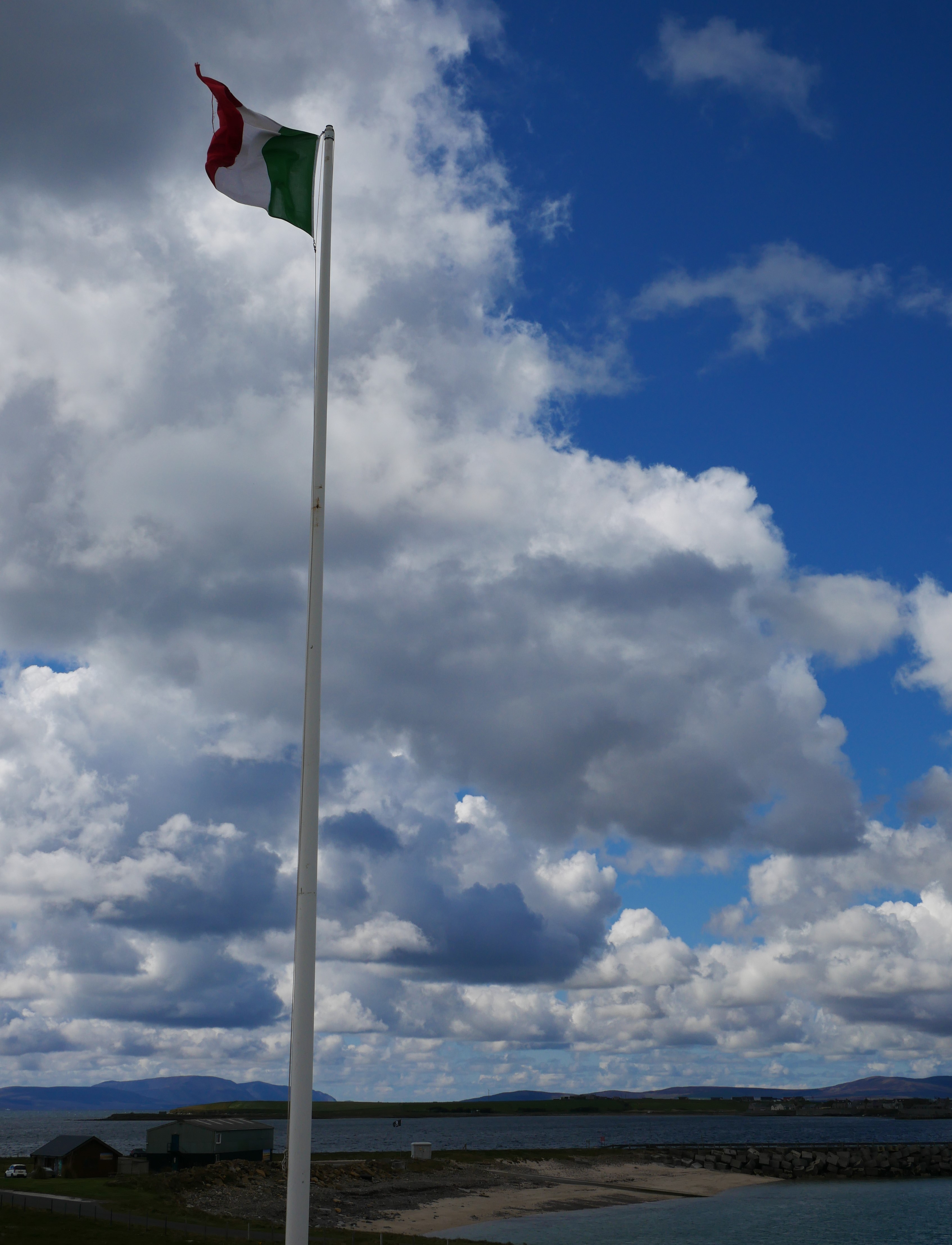
Prisoners frequently complained about the lack of food and limited variety of meals.
There was a bakery in both camps, while Italian cooks made meals of pasta. Fresh fish were sometimes caught from the shore, or from inside one of the blockships.
The Lycia had been run ashore under her own power on the south side of Lamb Holm. It sat with its bows high up on the shore. When the tide went out fish were often trapped inside the hull, an easy catch for hungry men.
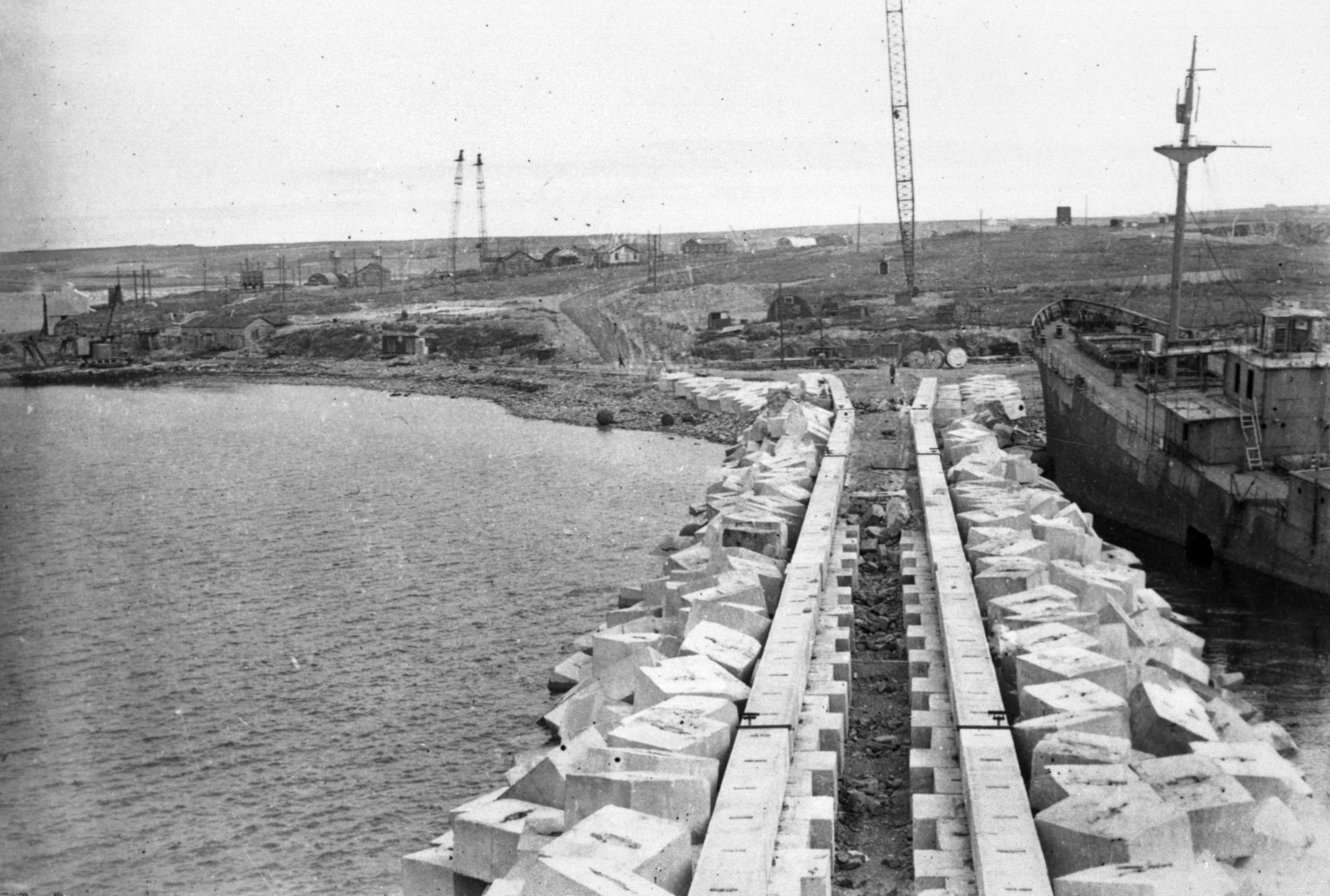 Photo courtesy of the Orkney Library & Archive
Photo courtesy of the Orkney Library & ArchiveThe men consumed huge amounts of coffee. There was, of course, no wine.
The prisoners tried to make a brew out of potatoes and rice, but it was not for the discerning palate. Cigarettes were issued, with extra rations offered for increased work.
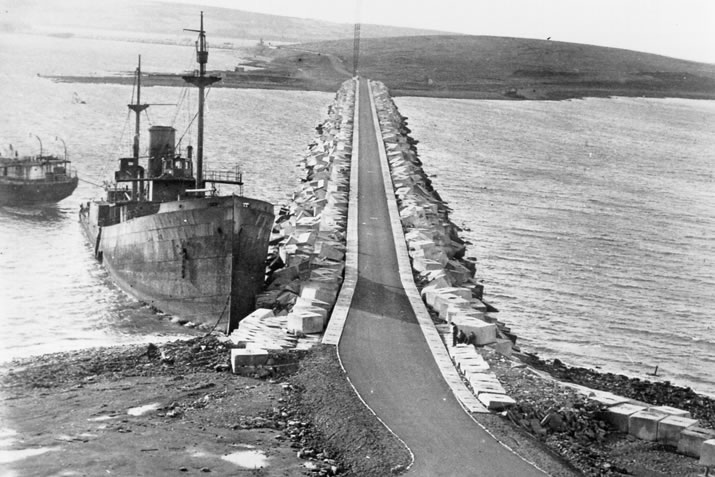 Photo courtesy of Orkney Library & Archive
Photo courtesy of Orkney Library & ArchiveNo escape
With nowhere to go, escape was not seriously attempted.
One man saved enough cash to buy an atlas, claiming he had an interest in geography. It was noted that he slipped away in the evenings, over to the east side of the island.
The guards found that he was trying to patch up an old abandoned boat, which he hoped would carry him to German occupied Norway, navigating by his trusty atlas.
Such an escape attempt would have been suicide. When the guards chopped up his boat they did that man a favour.
Making the best of it
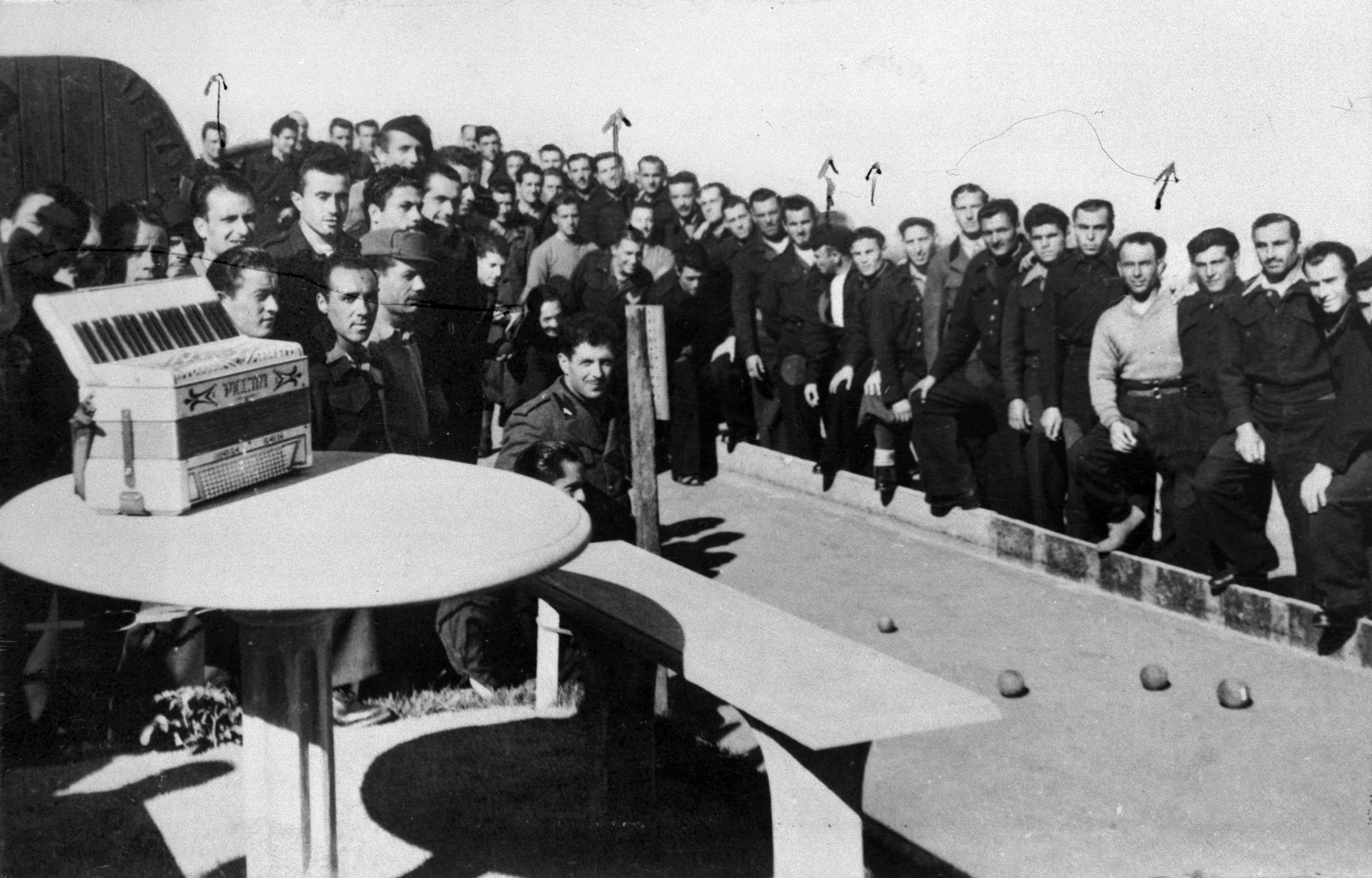 Photo courtesy of the Orkney Library & Archive - from the James Sinclair collection
Photo courtesy of the Orkney Library & Archive - from the James Sinclair collectionThe prisoners found that they were masters of casting concrete to make outdoor tables, chairs, a bowling alley and even a billiard table, with blankets as cushions on the side of the table.
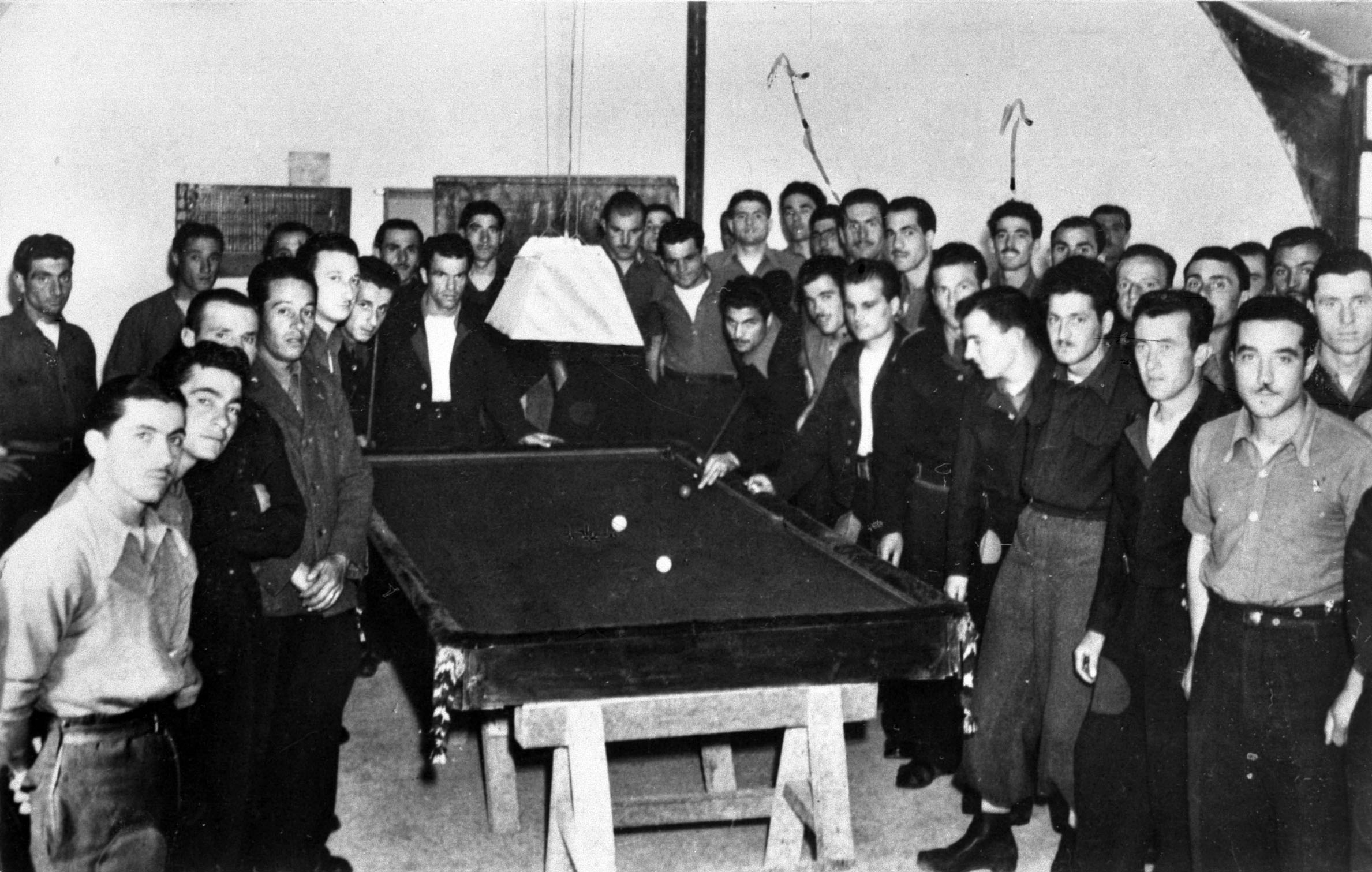 Photo courtesy of the Orkney Library & Archive - from the James Sinclair collection
Photo courtesy of the Orkney Library & Archive - from the James Sinclair collectionThe men formed bands to play music. There was even a theatre, with set designs painted by Chiocchetti.
An operetta, “The Baker of Venice,” was performed, complete with moving gondolas. The men invited friends, including the landowner P. N. Sutherland Graeme and his family who lived at Graemeshall on the other side of Kirk Sound.
The guests brought flowers from their garden. These were used in every scene.
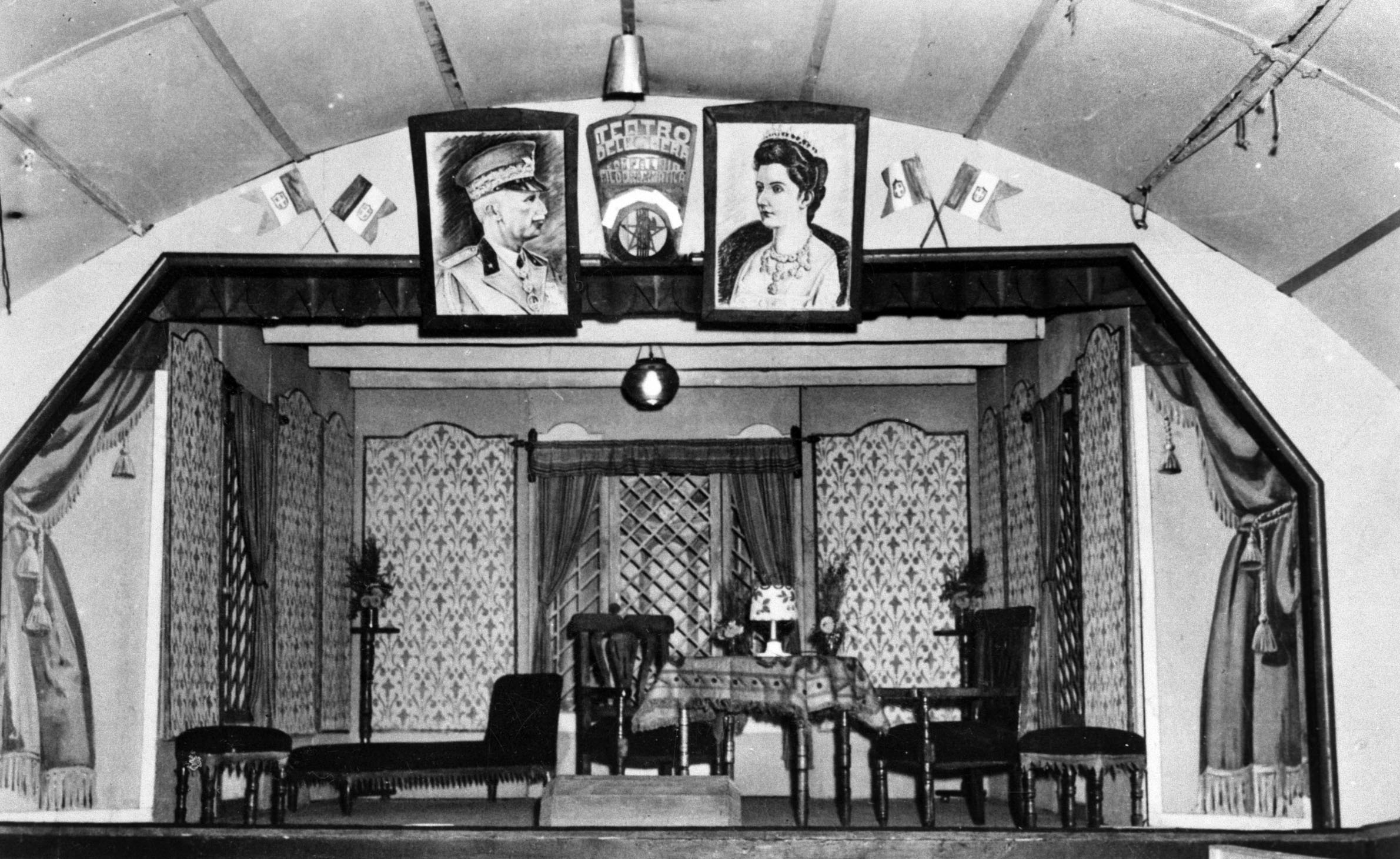 Photo courtesy of the Orkney Library & Archive - from the James Sinclair collection
Photo courtesy of the Orkney Library & Archive - from the James Sinclair collectionCamp 34 on Burray staged an elaborate production, with scenery by Chiocchetti’s artist friend, Giovanni Pennisi. The set was of a three-storey Palazzo.
To give an impression of height it had windows at the top that the singers popped their heads through.
Sports
Both camps had good football teams. After the Capitulation a Sports Day was organized in Camp 60, with members from Burray’s Camp 34 invited.
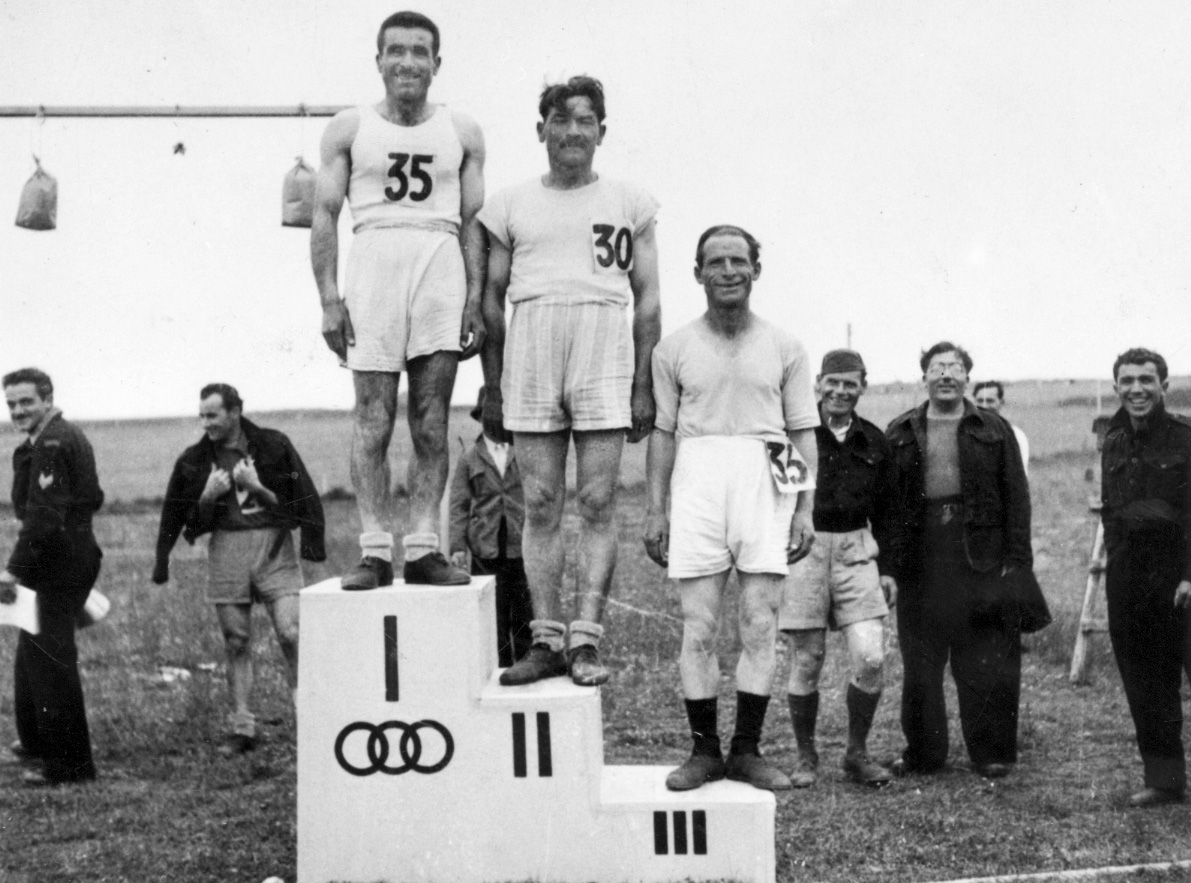 Photo courtesy of the Orkney Library & Archive - from the James Sinclair collection
Photo courtesy of the Orkney Library & Archive - from the James Sinclair collectionCasualties
Sadly, two Italians did not survive captivity.
Geovanni Scarponi, aged 27, was a skilled operator, driving a diesel locomotive. One day it backfired as he tried to start it and the starting handle struck him on the head, fracturing his skull.
He was rushed to the Balfour Hospital, Kirkwall, but died of his injuries.
Another prisoner died in hospital of pneumonia. They were buried at St. Olaf’s Cemetery near Kirkwall with full military honours.
Their bodies were exhumed after the war and returned to Italy.
Several British workers died during the construction on the Churchill Barriers, mostly as a result of drowning when transport barges broke free.
Five men were lost as they hitched a ride over Kirk Sound in the bucket of the overhead cableway. It plunged into the sea, tipping out the occupants into the cold and strong tidal stream.
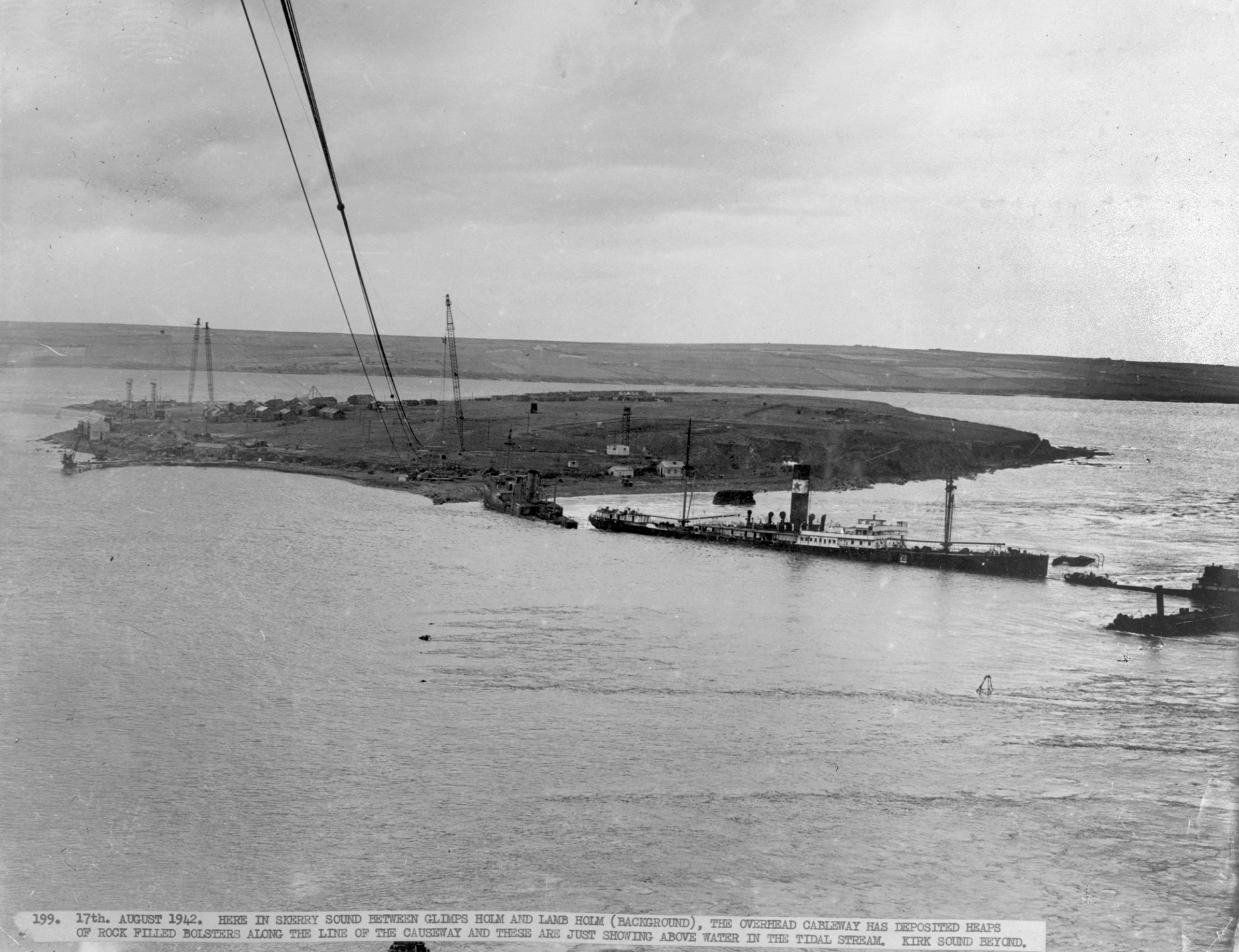 Photo courtesy of the Orkney Library & Archive
Photo courtesy of the Orkney Library & ArchiveThis August 17,1942 photo shows the view from the top of the overhead cableway at Lamb Holm. This was used to drop the wire nets filled with rocks. These were called 'bolsters.
The camp is on the left, the pier and power station are on the right and the quarry for the stones is in the front.
Blockships: the Lycia is at the back; next is the Ilsenstein. From the bathroom of the Ilsenstein the men salvaged tiles to place in front of the alter of the Italian Chapel. Next you see parts of the Emerald Wings and FC Pontoon. You can still see the mast of the Emerald Wings sticking up out of the water.
The beacon in the water at the front of the photo can still be seen at low tide. The bits in the water making ripples (to the left of the beacon) are rocks.
A fitting tribute
A memorial, made by South Ronaldsay man Willie Budge, stands by the side of the road leading to the Chapel. It is made from a boat’s brass rudder that a diver recovered from Scapa Flow.
The rudder was cut to form the silhouette of Sir Winston Churchill holding a bowler hat and then mounted onto a stone base.
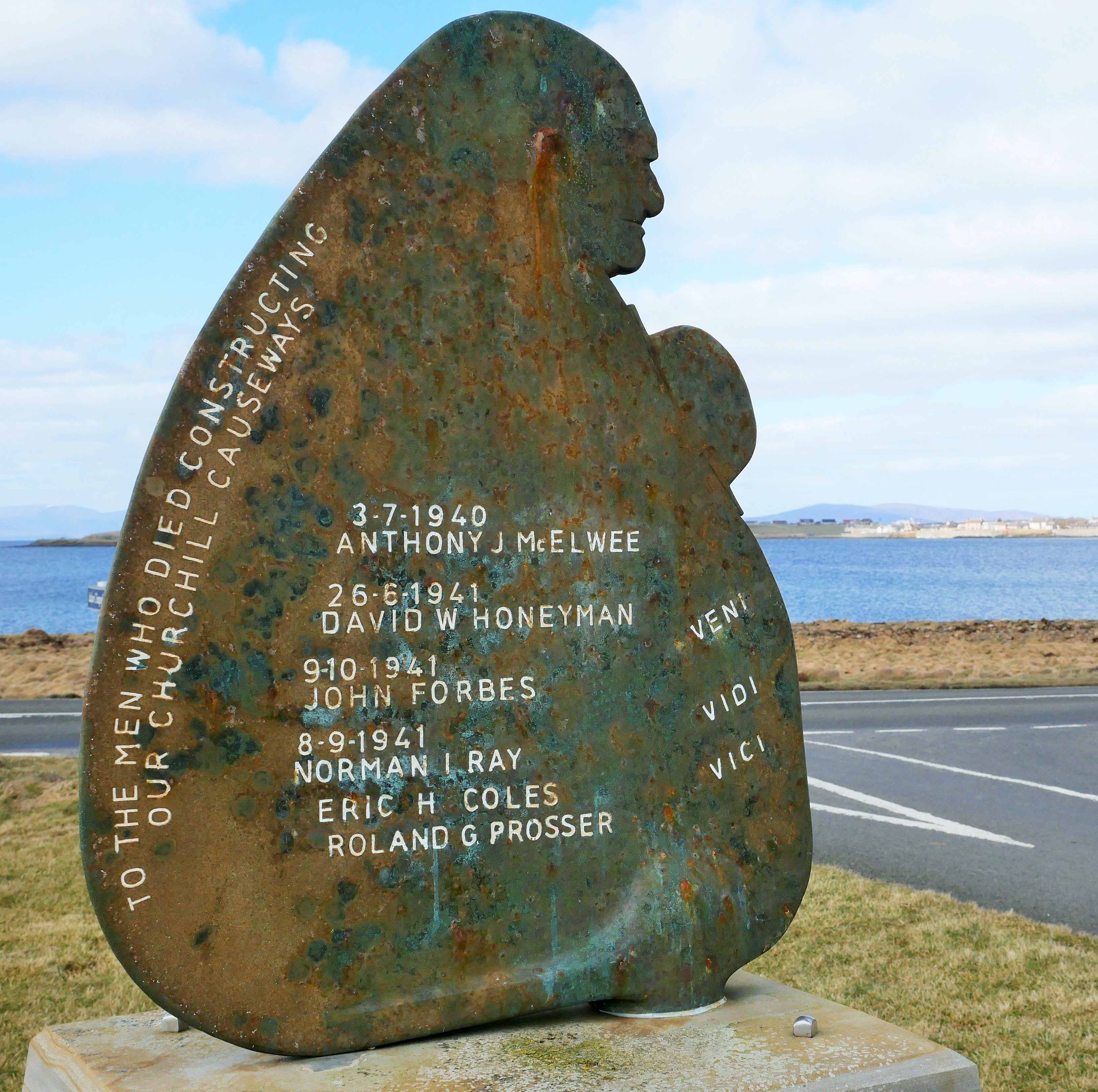
Freedom and handicrafts
Work on the barriers went on apace until the Armistice of Cassibille on 3rd September 1943, when Italy surrendered.
The prisoners were technically not prisoners any more. They couldn’t be sent home though, as many Italians had joined the German forces occupying the country and were fighting against the Allies.
The men were given the offer to carry on working, but instead of being paid in tokens they would receive a proper wage.
Some hard-line fascists refused and were send to POW camps in England. The rest agreed, and so began a different form of life.
The men now had freedom to move around, but not beyond five miles (8 kl) of the camp. This gave them the chance to earn extra money after work by selling their crafts.
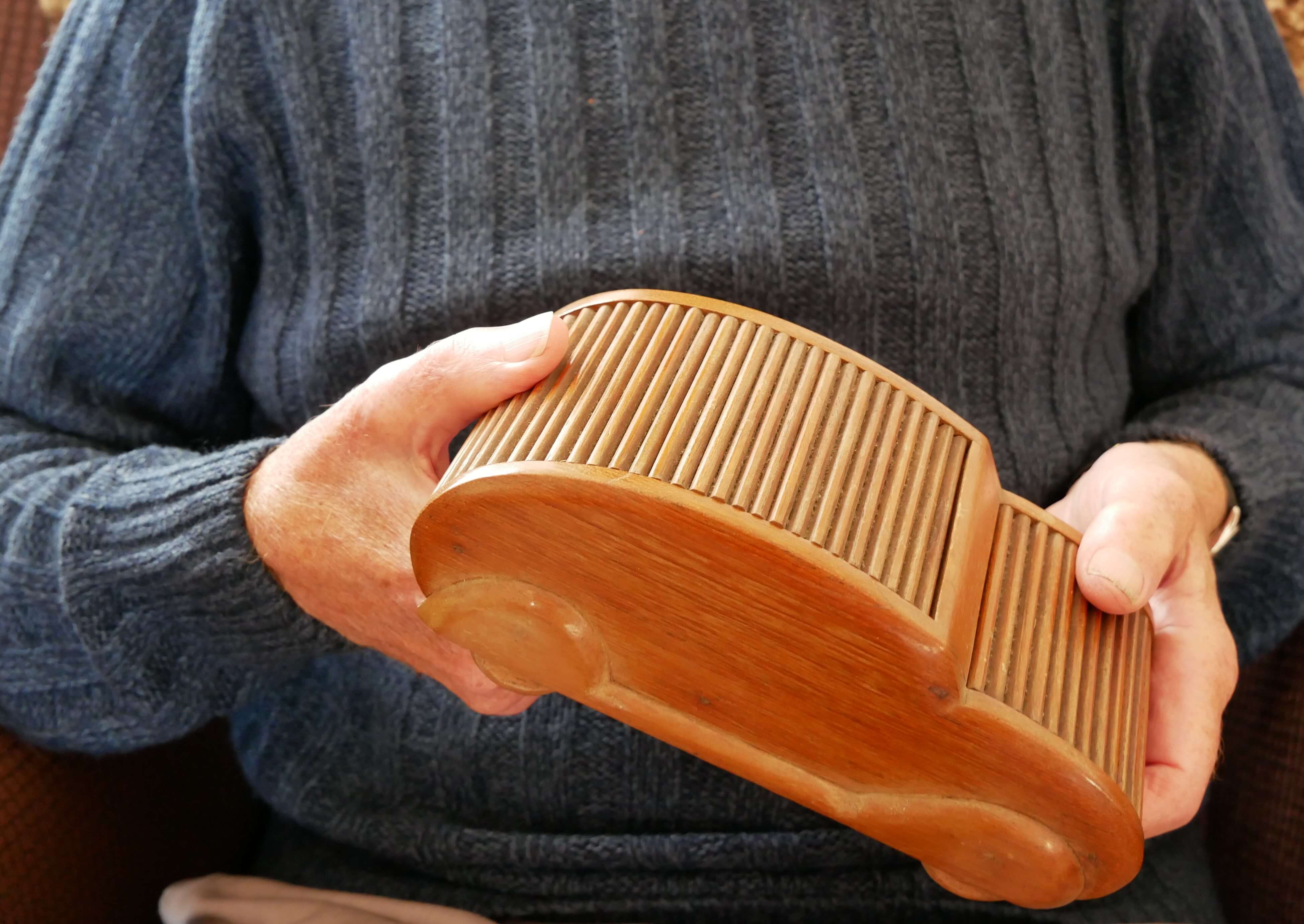
The Italians had a great talent for making lovely trinkets from old scrap which they sold or gave as gifts.
They made cigarette lighters of many designs, rings from silver coins and bracelets from plastic, Perspex and wire.
Photo frames, ashtrays, tea-trays, cigarette cases (both in aluminium and wooden roll-top boxes in the shape of a car, with draught counters as wheels), brooches and table lamps found their way into Orkney homes.
The men made larger items, too, like a wooden ship and even a model of Milan Cathedral.
Some crafted toys for the local children, including a wooden chicken that pecked when you turned a handle and a brightly painted parrot that rolled along its perch.
POW crafts are still treasured possessions in many Orkney families.
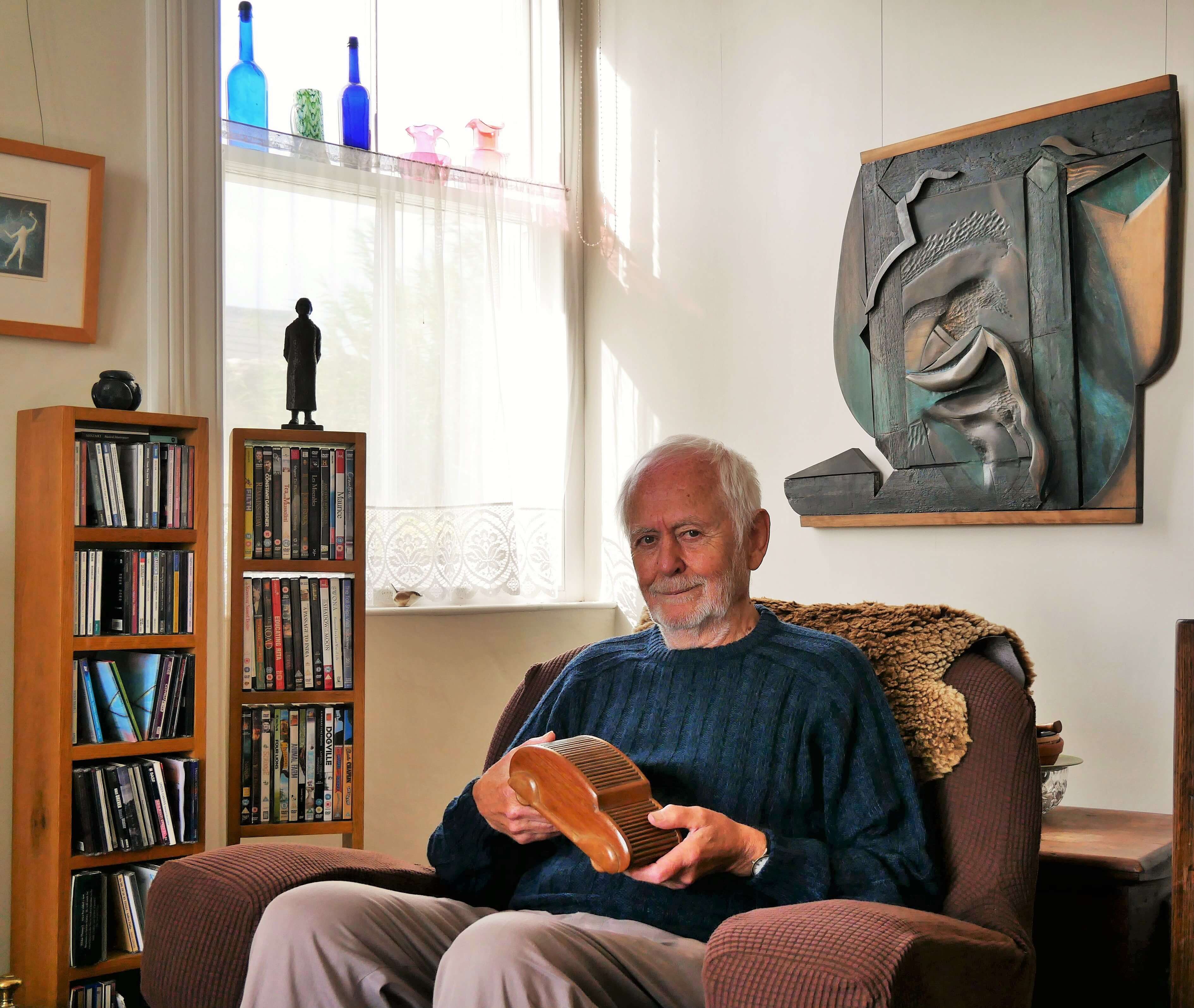
Italian farm workers
After the Capitulation the Italians were free to visit local people after work. Some used to help turn the kirn (churn) to make butter, returning to the camp with their own portion, as well as eggs and cheese.
A South Ronaldsay friend of mine, local historian George Esson, told me about an Italian prisoner who worked for his father on their farm. The man was made welcome to sit by the fire and share a meal with the family. He was treated as one of their own.
This small act of kindness would bring tears to the man’s eyes, as he was treated as an equal and not as an enemy. Possibly his thoughts turned to his own family back home.
He would just sit there and cry.
Call that a tomato?
My native parish of Tankerness also had Italian harvest workers. In my childhood I heard stories from people who remembered them.
One Italian scoffed at the rather pathetic excuse for a tomato that he was given.
“When I get home,” he said, “I will send you big tomatoes!”
“I’m still waiting for me damned tomatoes,” the Orcadian grumbled.
Another Italian was given a scythe to ‘open a road’ for the binder. This involved cutting a path around a field of oats in order to get the horse-drawn ‘binder’ in to cut the crop and bind it into sheaves.
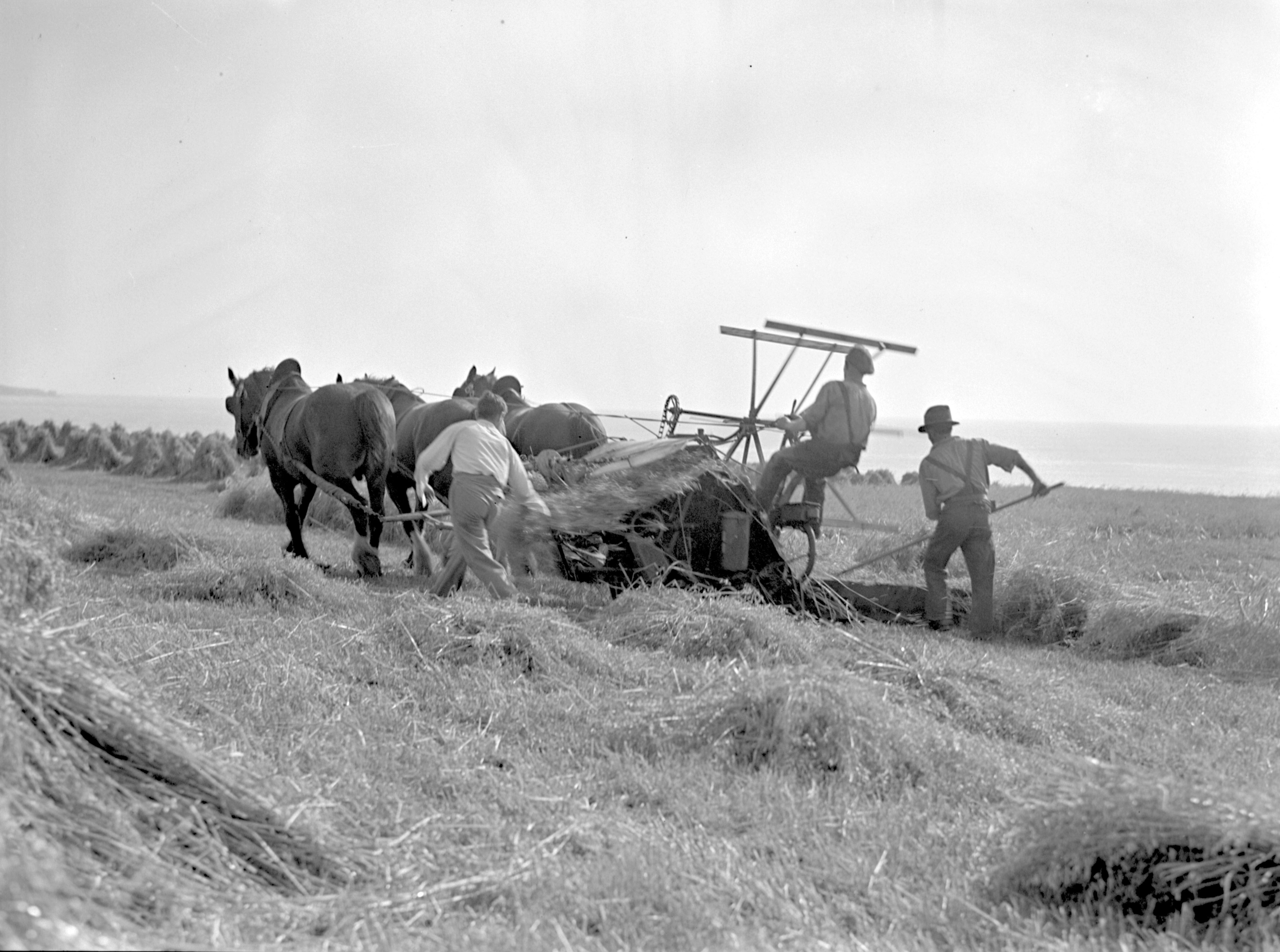 Photo courtesy of the Orkney Library & Archive
Photo courtesy of the Orkney Library & ArchiveThe Italian waded into the centre of the field and started to cut a circle around him. He was stopped and shown that he was not actually expected to cut the entire field by himself.
I never fully understood this story until a visit to a museum in northern Slovenia. There I saw a photograph of a field cut in this fashion, worked in a circle from the middle of the field outwards.
The Italian Chapel is born
“In a POW camp life can be a dull daily routine not always improved by billiards, table-tennis, football or amateur theatre, all things that we POWs had the strength to keep going. That wasn’t enough, not for most of us at least.
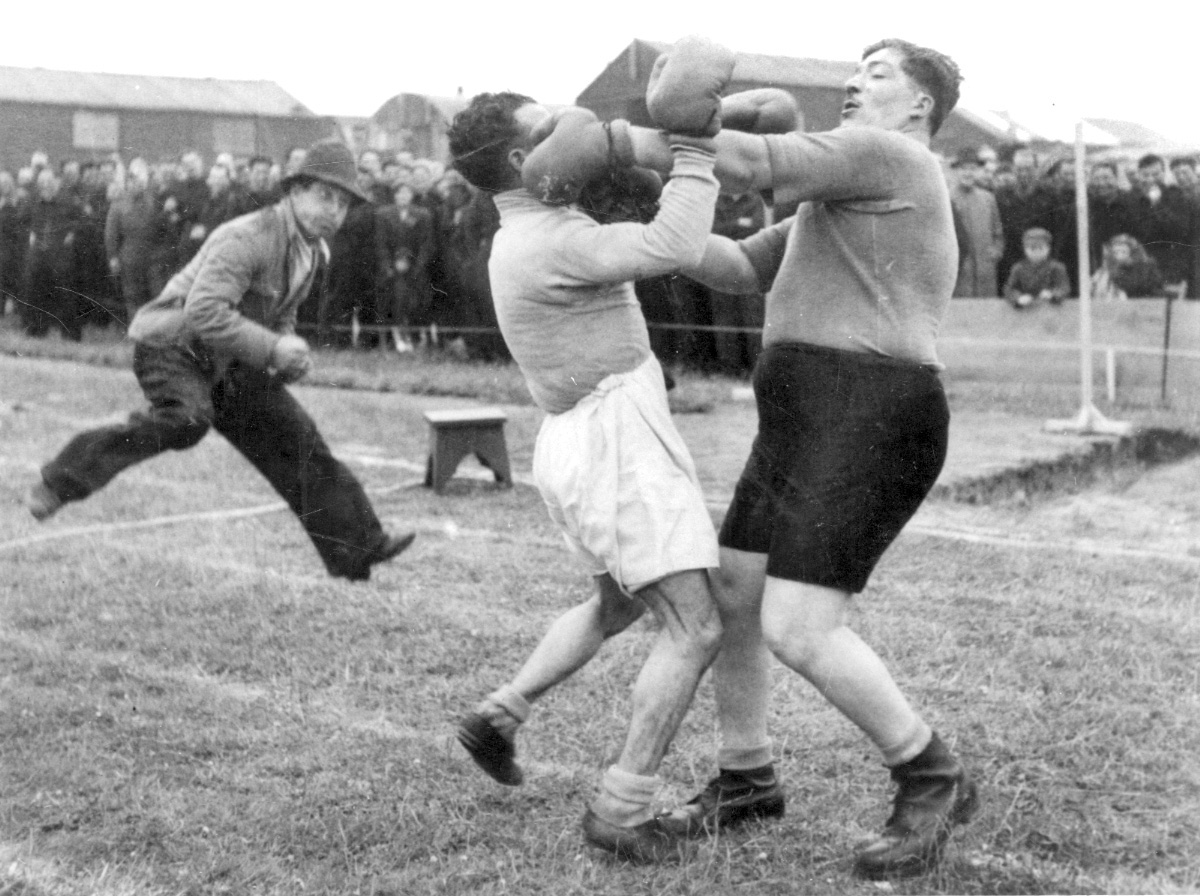 Photo courtesy of the Orkney Library & Archive - from the James Sinclair collection
Photo courtesy of the Orkney Library & Archive - from the James Sinclair collectionNights were our worst enemy. Long nights when thoughts went back home to those we loved. Bad news from home, that somehow reached us, was cause of deep depression that no entertainment could ease. Only thinking of something more nobler, more elevated, could we find inner peace and hope. So the tiny chapel came gradually into existence.”
Bruno Volpi, POW Camp 60, Lamb Holm.
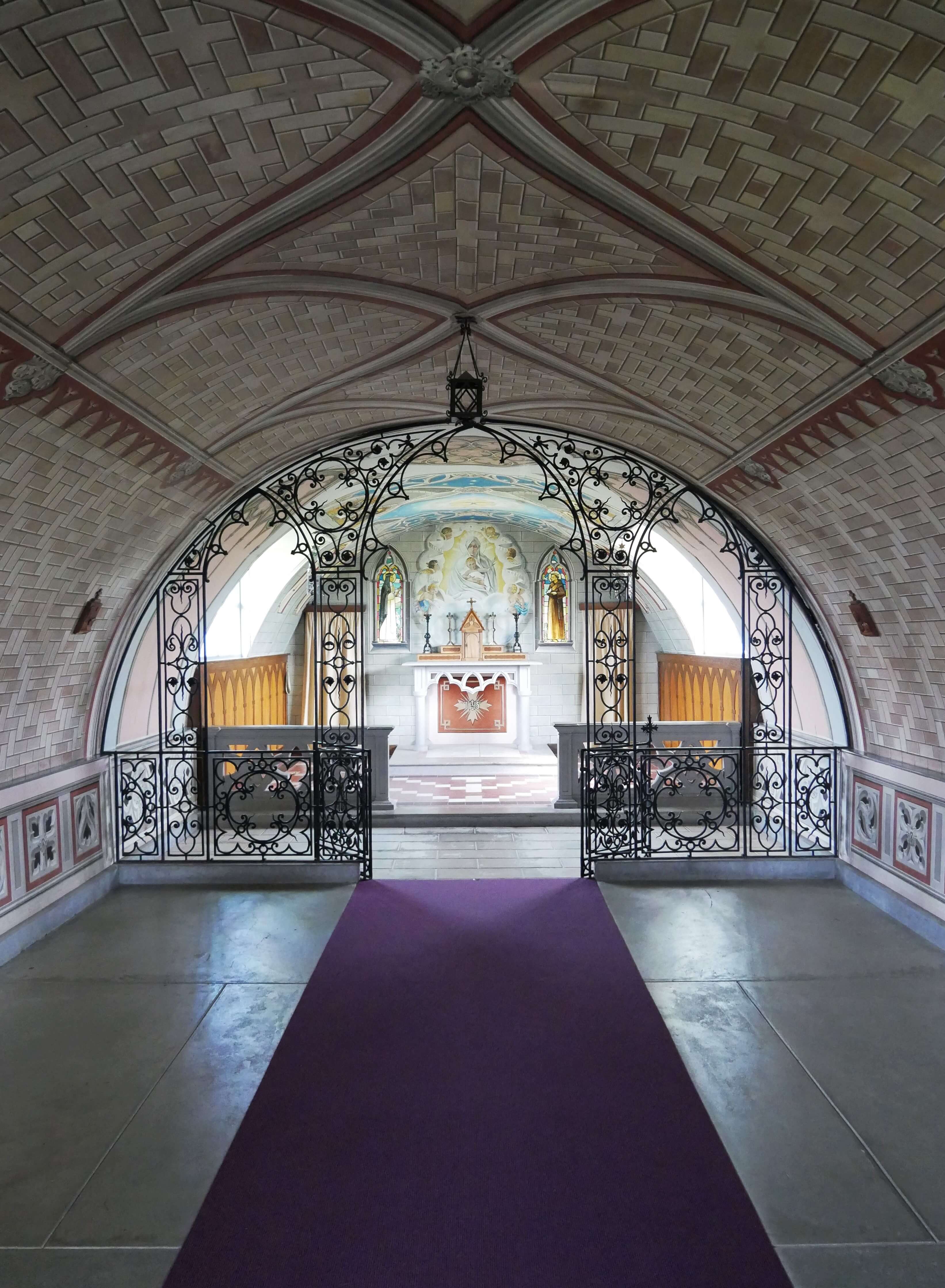
Spiritual need
With Italy occupied by the Germans, the prisoners worried about their loved ones back home.
Where was the fighting taking place? Were their families safe? Were they refugees, struggling for survival, or were they already dead?
One need was filled with the arrival of Father Gioachino Giacobazzi (known as Padre Giacomo) of the Order of the Little Brothers. He arrived in Lamb Holm on 30 September 1943. This was a great lift to the spirits of the prisoners.
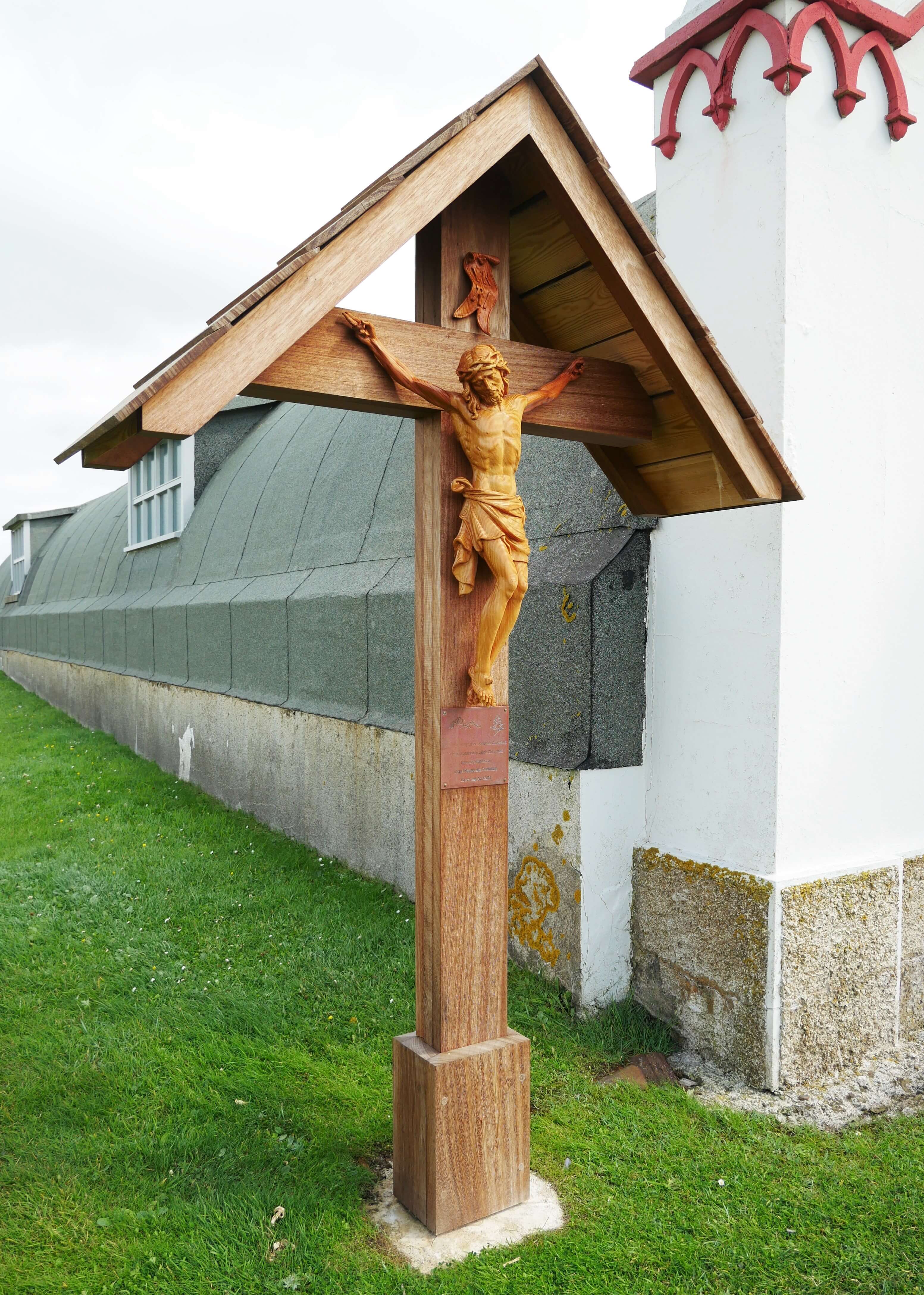
Mass was held on a table in the mess, but Domenico Chiocchetti wanted a permanent place of worship.
He found inspiration one day while talking to the new Padre, as he later explained.
“When I was talking to him [Father Giacobazzi] one day I suddenly had the idea of the church. He spoke to the commandant who put a free hut at our disposal. Major Buckland called me and, in his halting Italian, explained to me that we could make some sort of chapel. I told him that if I did it at all I should do it really well. The Major didn’t understand - in fact he thought that I was refusing, and annoyed he called the interpreter. When the misunderstanding had been cleared up, he slapped me on the back and said, 'Bravo! Make a good job of it.' That was how the work started.”
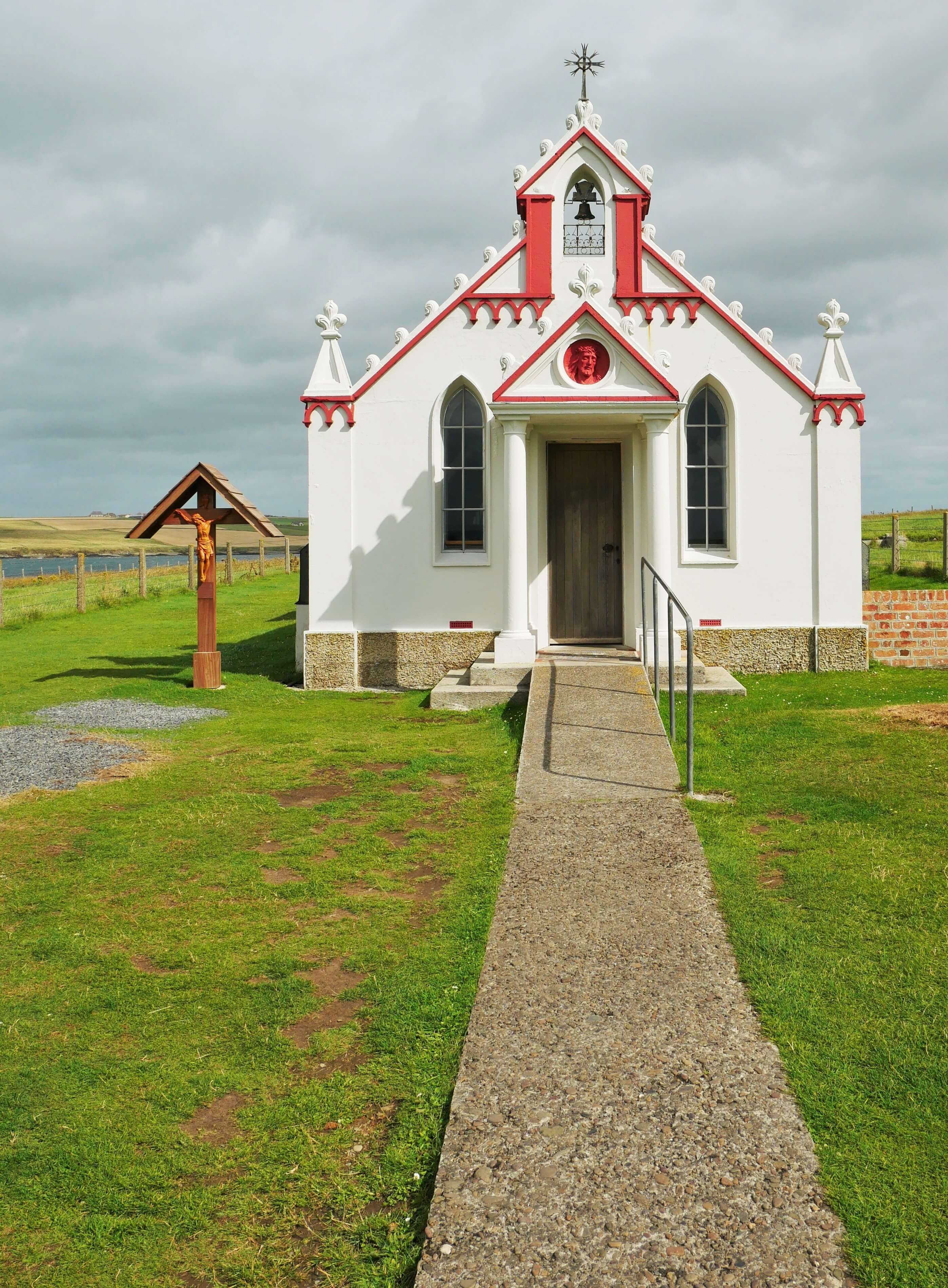
Here Major Buckland’s Italian failed him, although in his defence, Domenico Chiocchetti spoke a northern dialect that Buckland’s formal Italian language training had not prepared him for.
Building the chapel
Many men worked hard on the chapel, but it was Domenico Chiocchetti who came up with the design of the building, the artwork that graces its inside and the designs for the metal rood screen and candle holders.
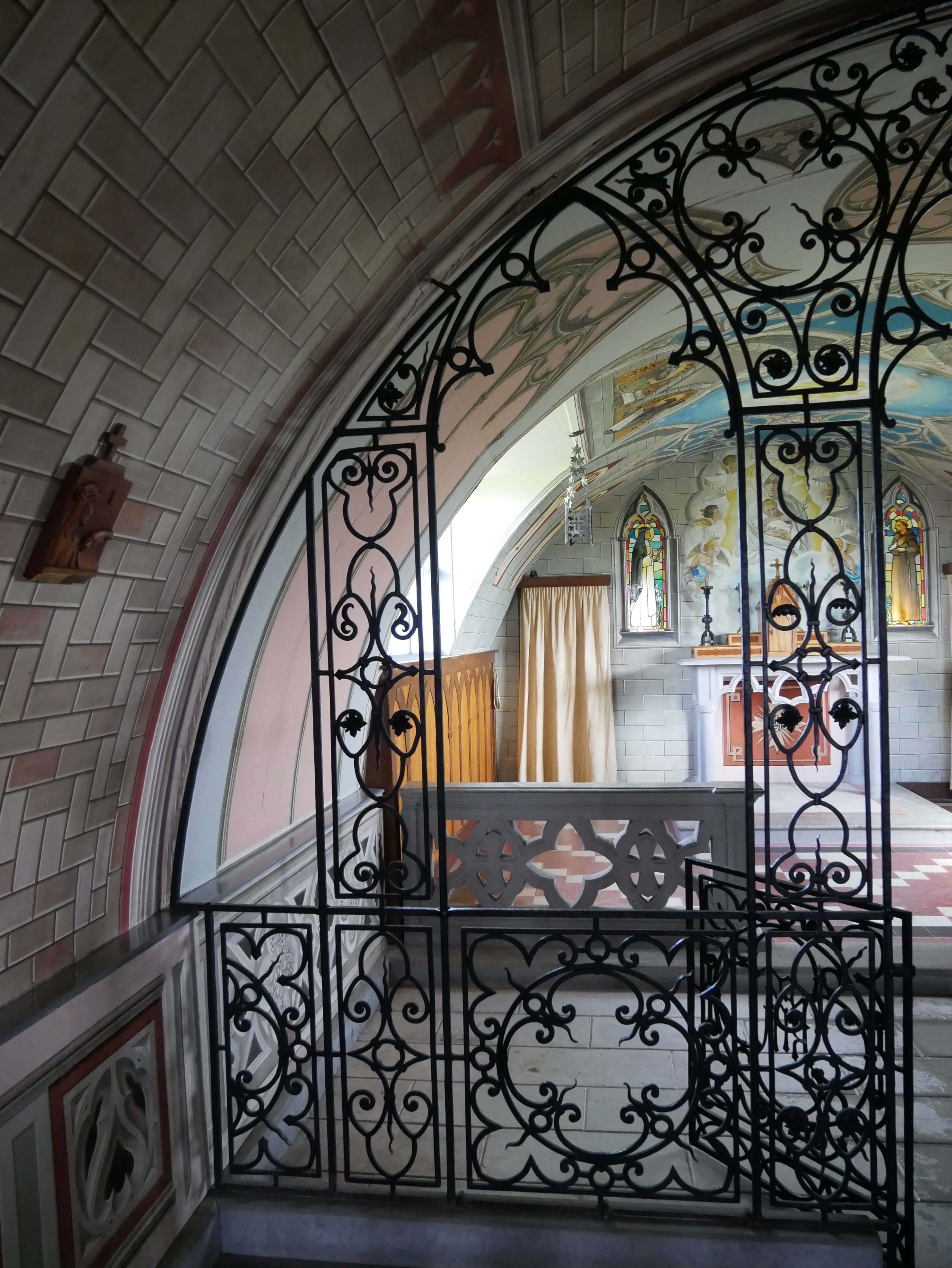
Though the chapel was very much Chiocchetti's creation, we must not forget the dedicated team who also worked on its construction, bringing various skills with them.
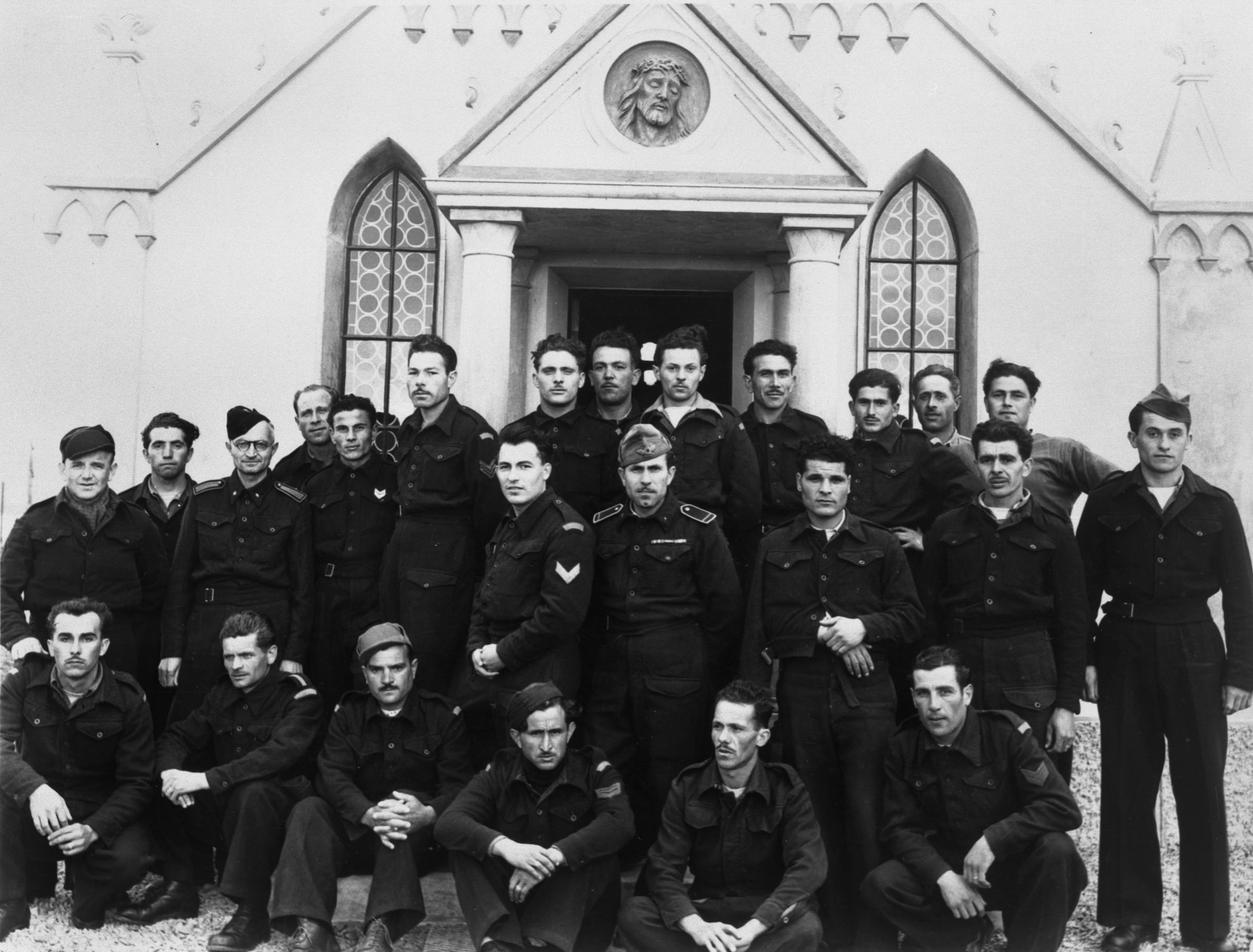 Photo courtesy of the Orkney Library & Archive - from the James Sinclair collection
Photo courtesy of the Orkney Library & Archive - from the James Sinclair collectionThe first thing that Chiocchetti made was the statue of St George killing the dragon, which stood in the camp square.
This statue of barbed wire and concrete represented good triumphing over evil - in this case war itself. St George was, after all, the Patron Saint of soldiers.
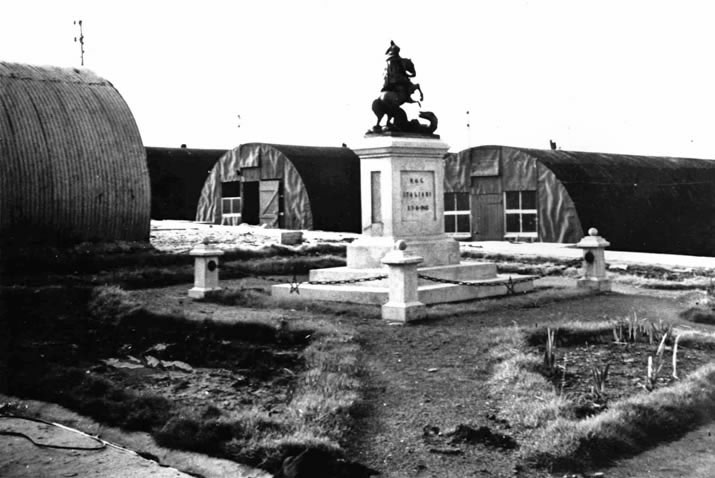 Photo courtesy of Orkney Library & Archive
Photo courtesy of Orkney Library & ArchiveOriginally two Nissen huts (named after its inventor, Major Peter Norman Nissen) were given to the Italians to use as a chapel and a schoolroom. Some of the prisoners were illiterate, while others wanted to learn English or other foreign languages.
The prisoners requested to use both huts for the chapel and carry out their schooling in the accommodation huts.
This was agreed, and the men bolted the two Nissen huts together.
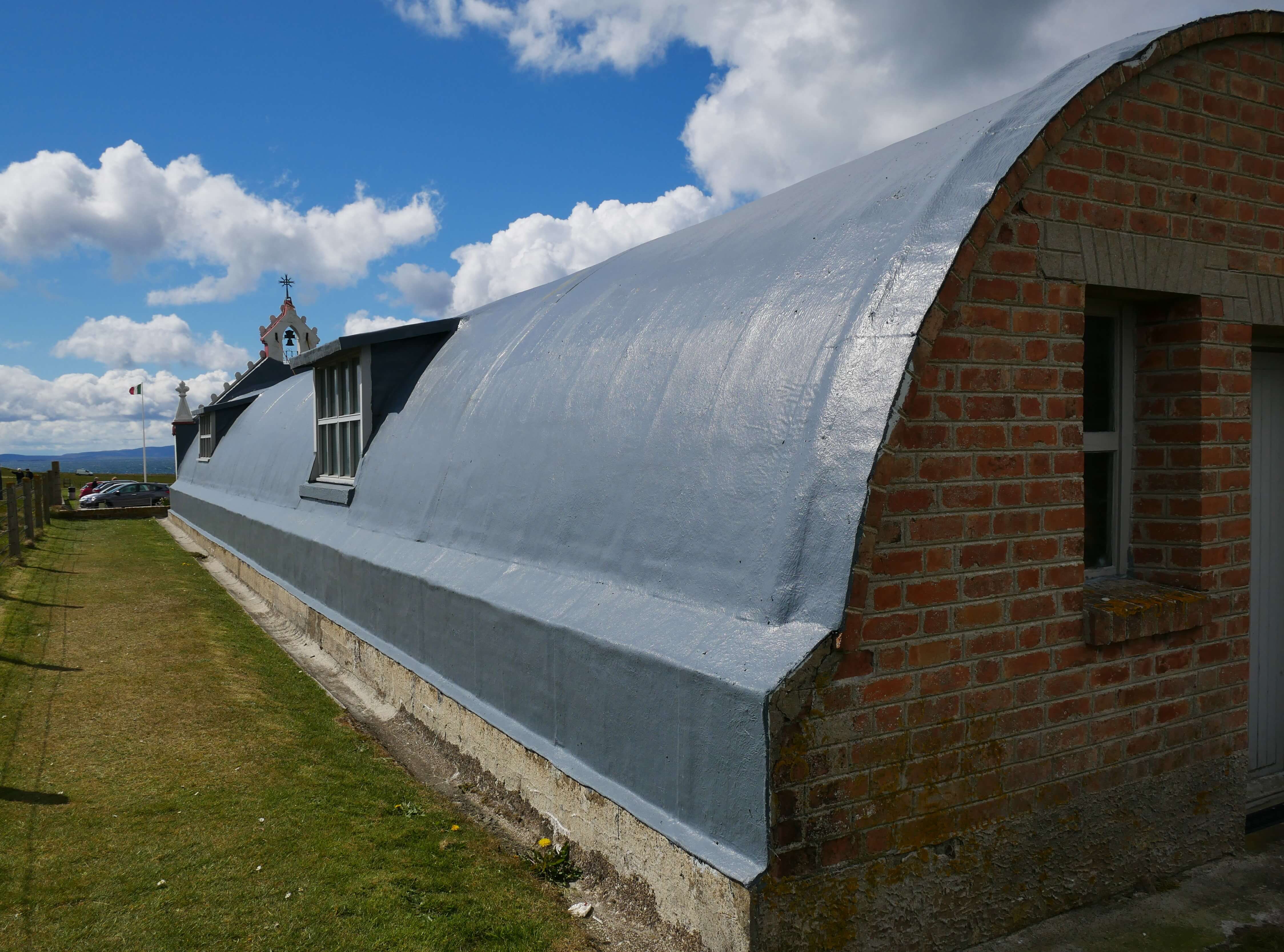
They lined the inside with wooden strapping, and plasterboard was attached to that. If the plasterboard had been somehow secured to the bare metal sheets it would have crumbled.
The outside of the Nissen hut was strengthened by using concrete and wire ‘bolster’ nets. These nets were filled with rocks and used as the core of the Barriers. Balfour Beatty & Co Ltd let the Italians have a dumper truck of concrete at the end of every day.
Gradually they built up layers of concrete along the whole length of the structure, reinforced with wire netting. This made it stronger and impervious to the weather.
Electricity was fixed up in the chapel, extending their working hours.
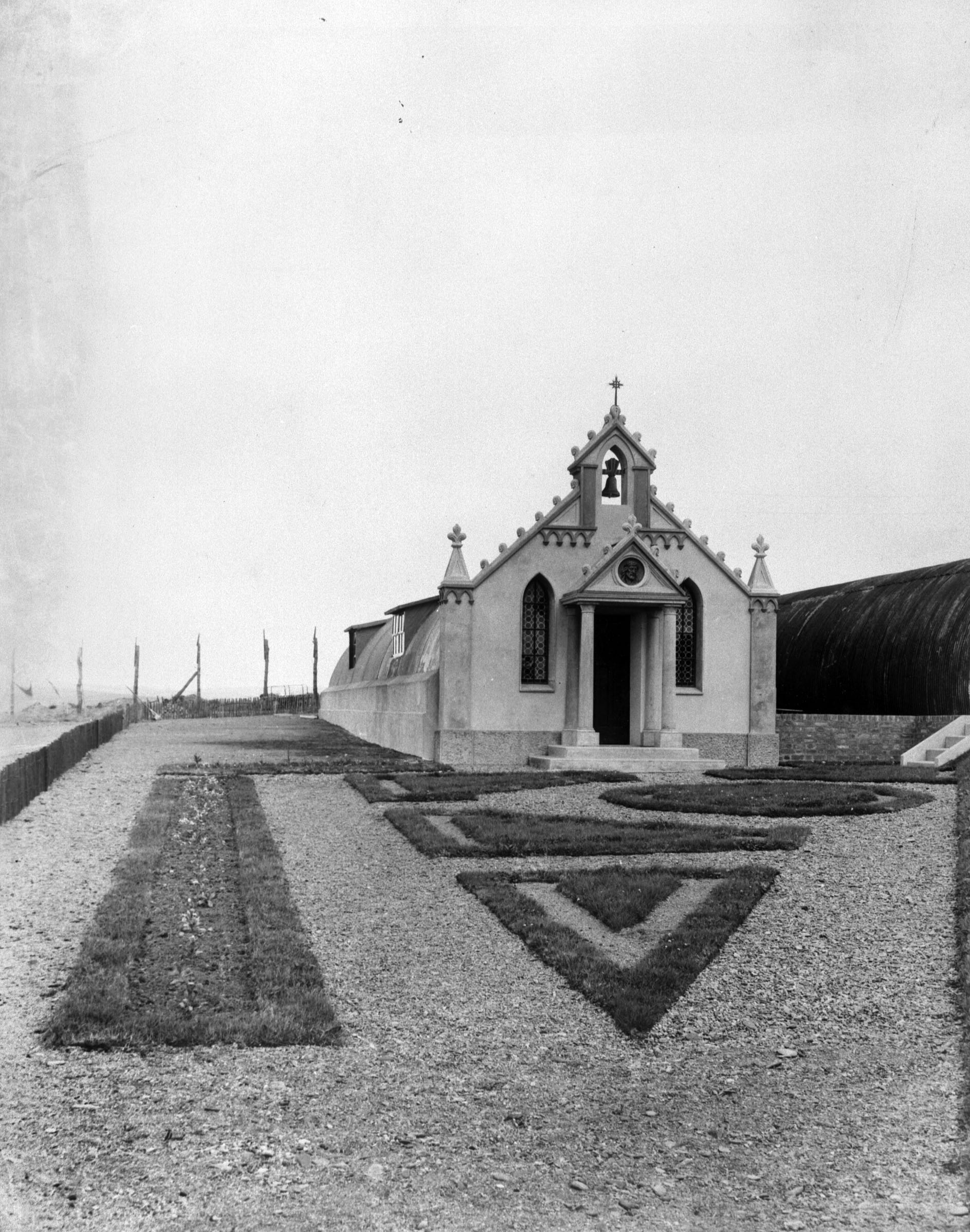 Photo courtesy of the Orkney Library & Archive - from the James Sinclair collection
Photo courtesy of the Orkney Library & Archive - from the James Sinclair collectionChiocchetti used his skills as a church decorator to paint the brickwork that lines the walls of the nave. In this work he was assisted by his friend, Camp 34’s artist Giovanni Pennisi.
You can see pillars by the sides of the door, decorative features along the roof and round ceiling bosses all painted to look 3D.
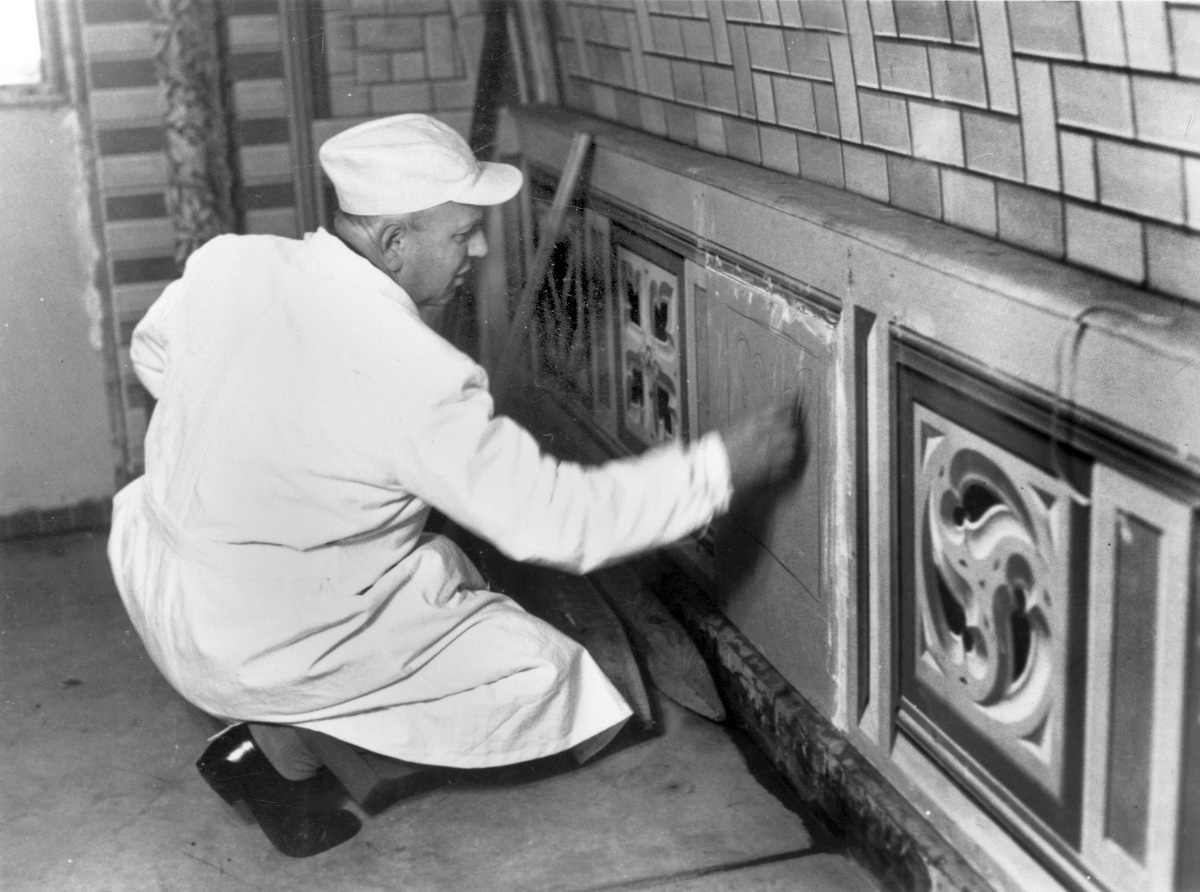 Photo courtesy of the Orkney Library & Archive
Photo courtesy of the Orkney Library & ArchiveChiocchetti was far from happy with the ugly appearance of the front of the building. The red brick wall did not give the viewer a clue of the beauty that lay inside.
Balfour Beatty & Co Ltd donated more concrete. The Italians cast blocks and created a beautiful façade, complete with bell-tower.
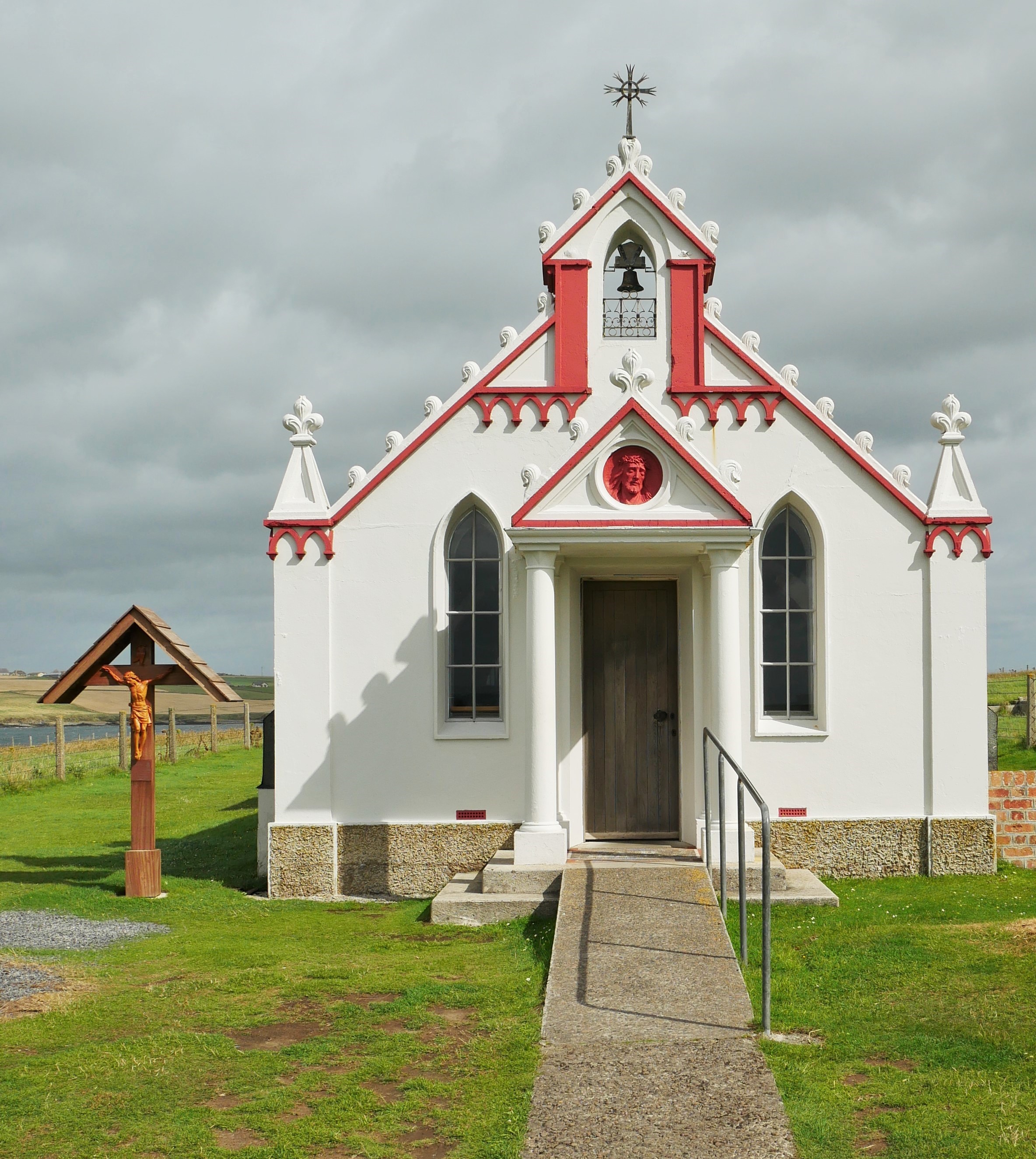
In this Chiocchetti’s design was carried out by Buttapasta, who was an expert in cement.
Chiocchetti’s old friend, Giovanni Pennisi, the artist at Camp 34 on Burray, created the face of Christ above the door from terracotta.
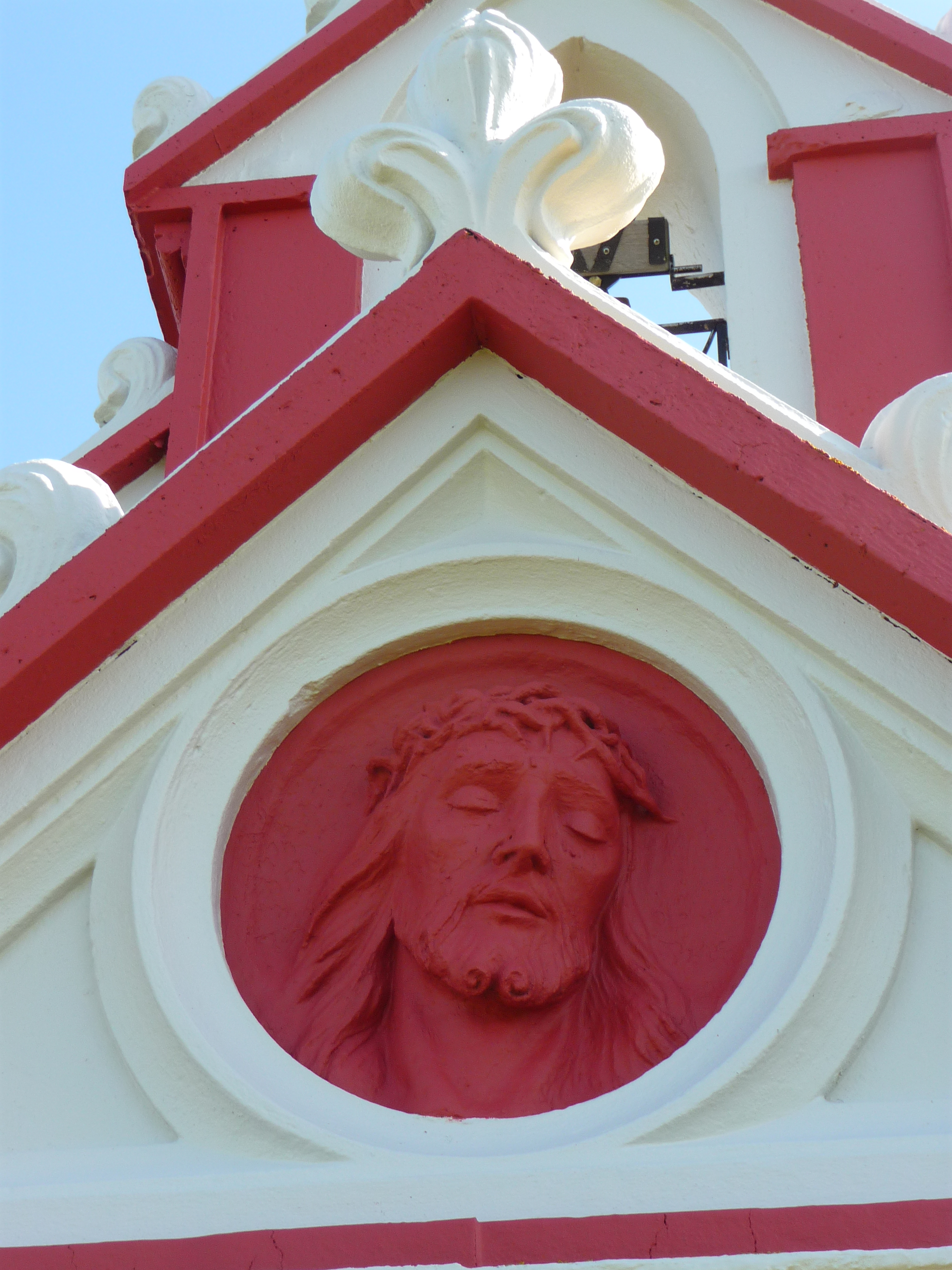
The rood screen
Giuseppe Palumbi was a blacksmith from Teramo. He had emigrated to Philadelphia in 1928, to join his father who had moved their eight years previously looking for work. Here Palumbi had learnt his craft, working in wrought-iron.
Long working hours and poor pay saw him return to Italy in 1932. His pro-communist and anti-fascist views and activities attracted the attention of the authorities.
A friend advised Palumbi that his life was in danger and he should sign up for the army, as a way of avoiding arrest.
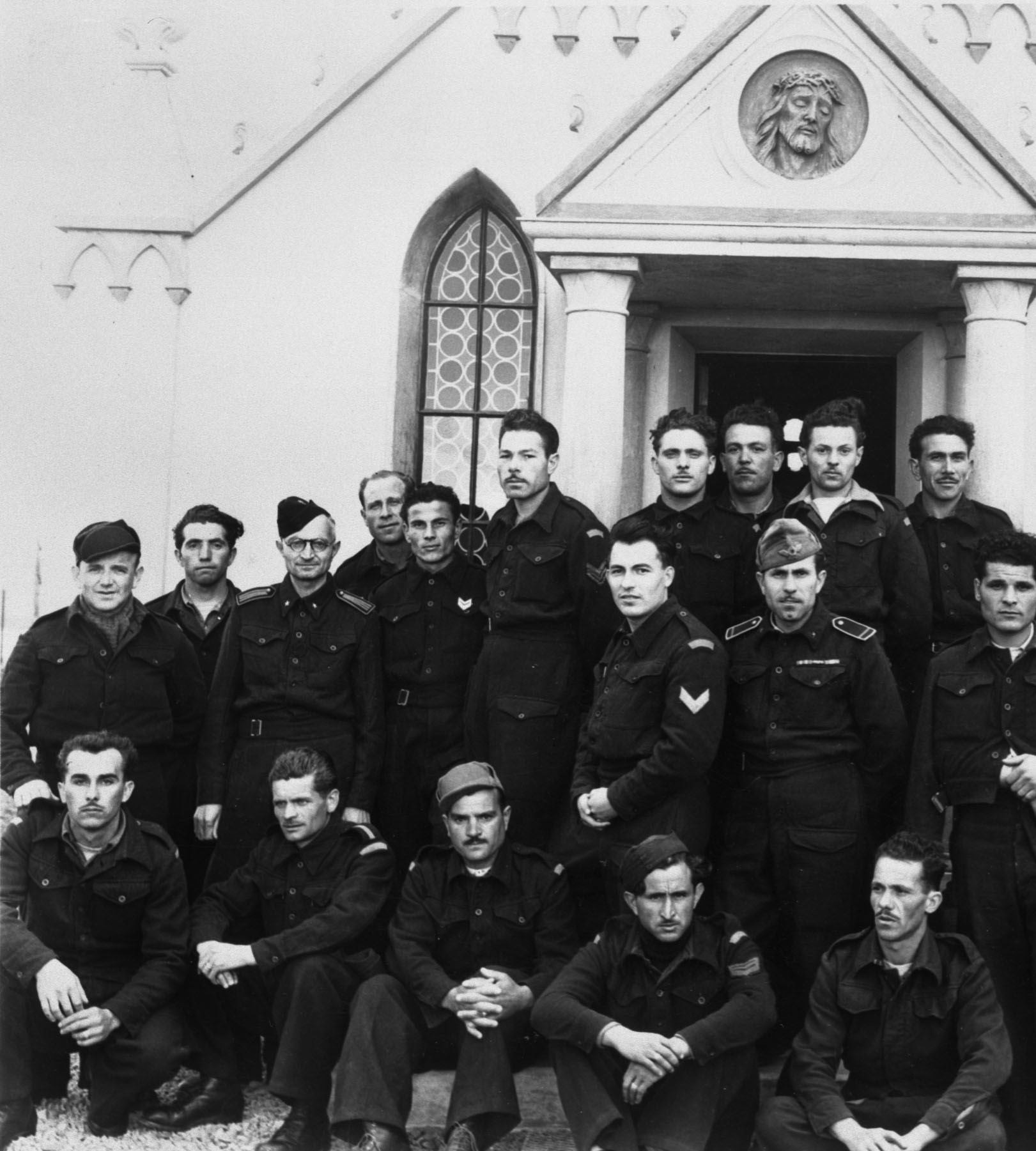 Photo courtesy of the Orkney Library & Archive - from the James Sinclair collection
Photo courtesy of the Orkney Library & Archive - from the James Sinclair collectionChiocchetti gave Palumbi the design for the sanctuary screen and for the pair of candlesticks that stand on the altar.
He was given sections of round metal rods by Balfour Beatty & Co Ltd, which he heated on his portable forge and beat into square sections.
The iron rods were poorly made and some sections were brittle and liable to break. The screen took four months to make.
The labour and skill involved is quite stunning.
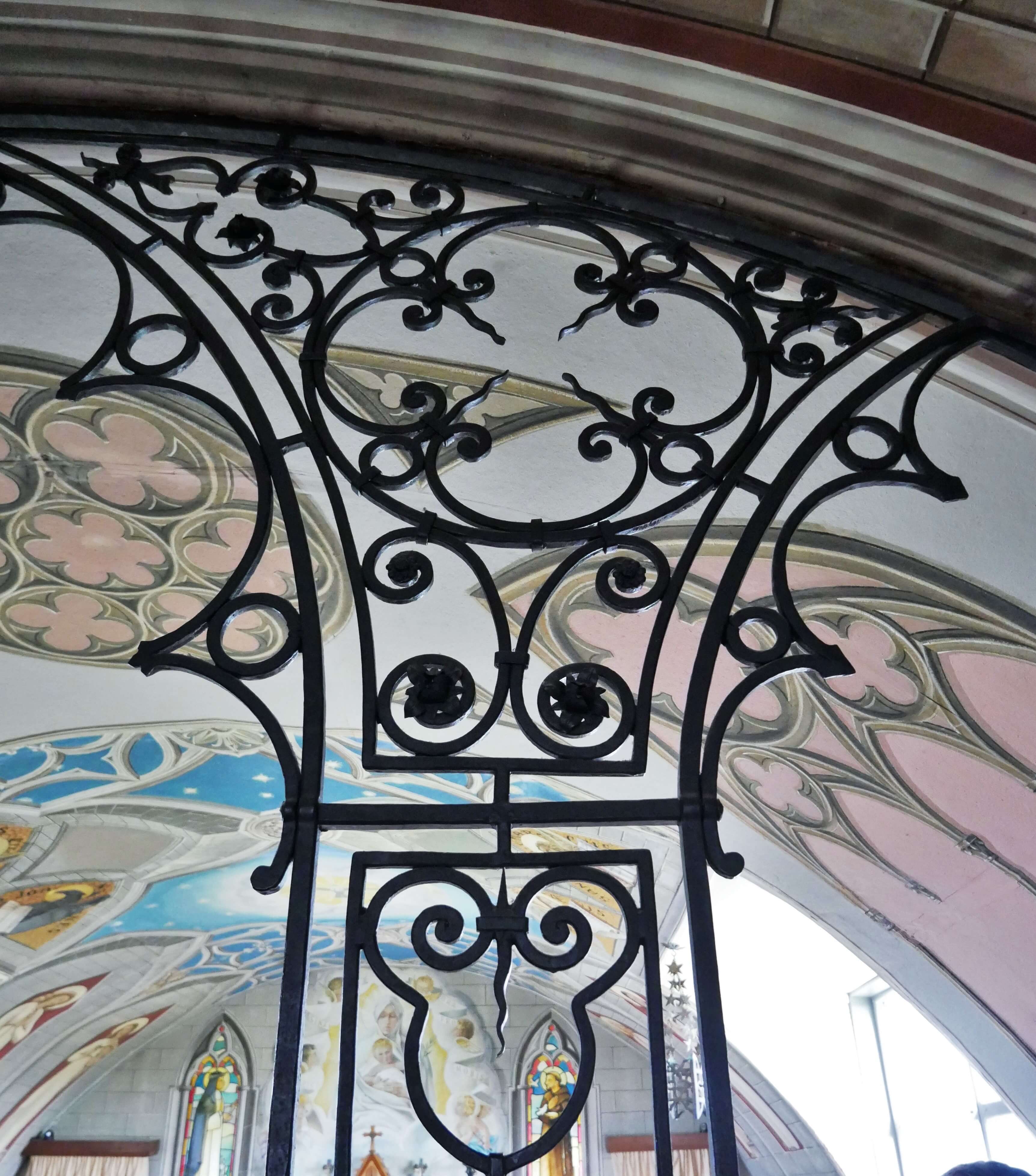
A bittersweet story
Fraternisation with local women was not allowed, but it did go on. The sand dunes at the Bu Links of Burray was remembered as being a favourite trysting place, or so I have been told.
During the construction of the rood screen Palumbi was allowed to travel to the Orkney Mainland. He had met a local woman, aged only 20, and they became friends. He was welcomed into the family home for meals.
Whether he had fallen in love with her is uncertain, but it seems likely. How she felt towards him is also unknown, but it has been suggested that the relationship was purely platonic.
A message in metal
When the time came that Palumbi had to leave Orkney he took a photograph of the young woman with him.
Palumbi told his wife, Pierina, about her and showed her the photograph. She snatched the photograph out of his hand and threw it on the fire.
Things between them were frosty for a while, but the fact that they had another child does suggest that it was forgiven, if not forgotten.
Palumbi left a message for the young Orkney woman in the middle of the chapel.
In the floor you'll see a small metal stop that the gates of the sanctuary screen close against. It is in the shape of a heart.
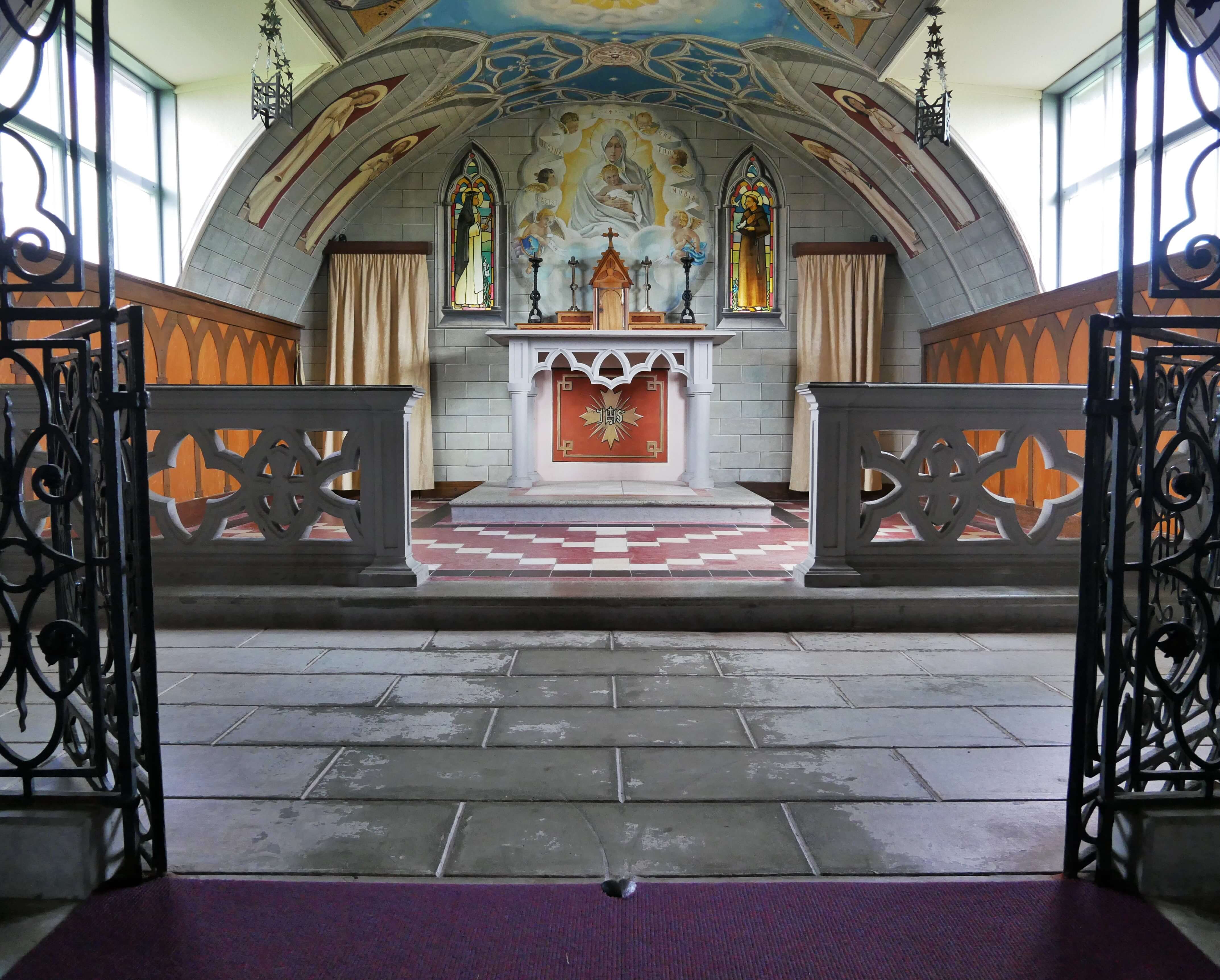
It seems that Giuseppe Palumbi, who was a very private man, was haunted by his time in Orkney, and by the memory of the chapel and the beautiful creation that he had left behind.
He had a photograph of the chapel on his wall and he used to stare at it, with a far-away look in his eyes.
It seems that he always wanted to return to Orkney, but he never did. He died in 1980, aged 69.
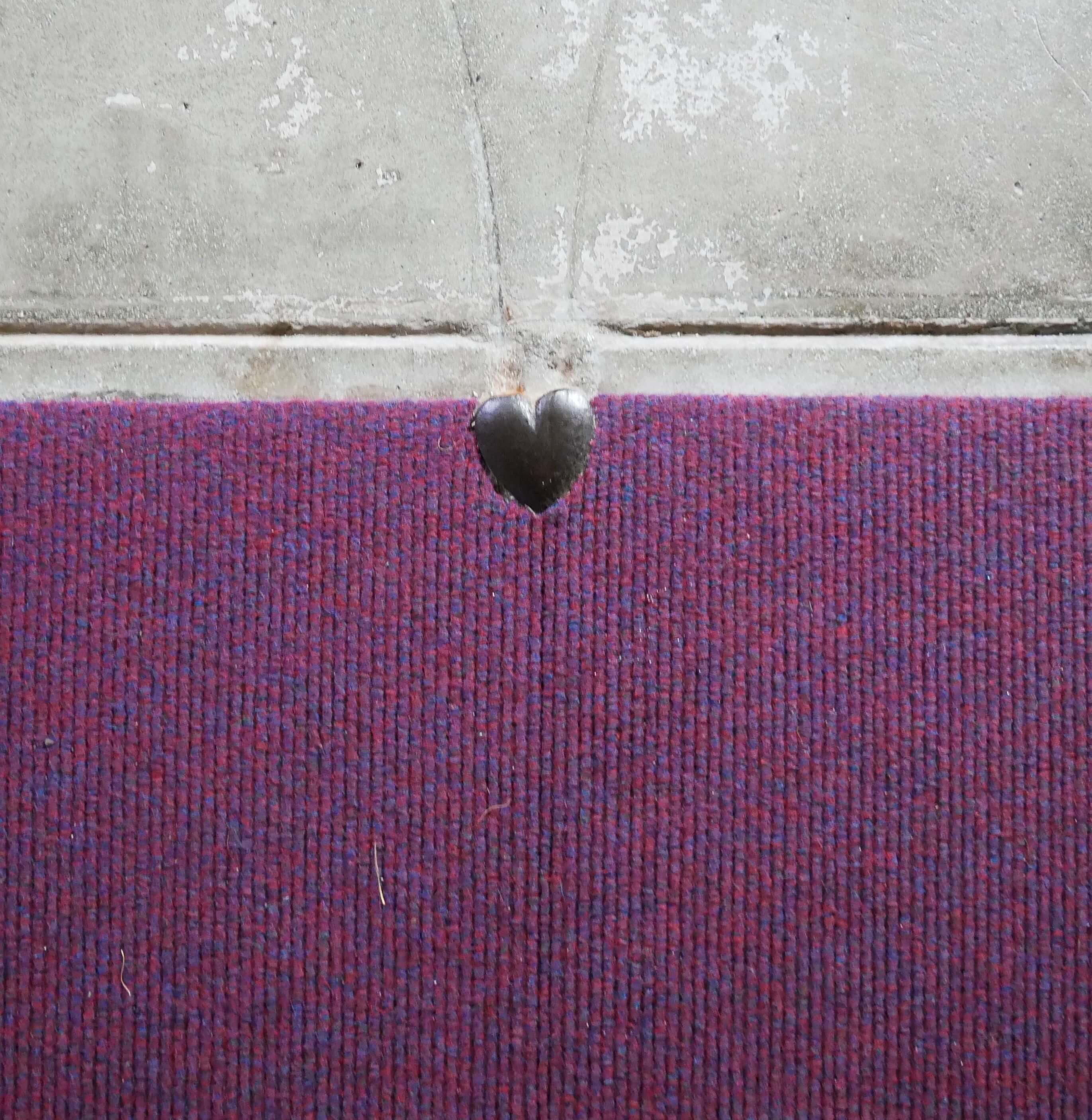
The altarpiece
When Chiocchetti went to war, his mother gave him a prayer card. On it was the painting ‘Madonna of the Olives’ by Nicolo Barabino.
It was this image that Chiocchetti used as his inspiration for the altarpiece.
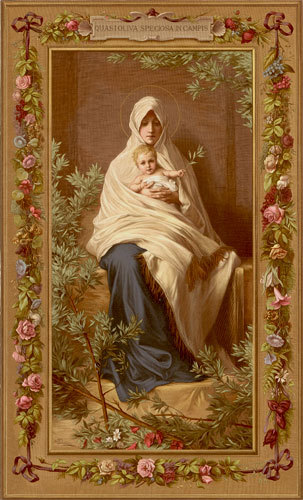
He painted the serene Madonna with a halo and surrounded by light. She holds the Christ Child, who has an olive branch in his hand. Around them is the Latin phrase ‘Regina Pacis Ora Pro Nobis’ - ‘Mother of Peace Pray For Us’.
Two ‘putti’ (winged babies) flank the main scene. The one on the left holds the crest of the town of Moena, Chiocchetti’s home, showing a boat moving from a storm into calm seas.
The one on the right is seen sheathing its sword - a sign of peace. Four cherubim (represented as winged heads) complete the scene.

It was painted using poster paints, gifted to the prisoners by J. M. Stevenson, Newsagent, Kirkwall.
The manager was on friendly terms with the Italians. He was local historian and folklorist, Ernest Marwick.
I assume that it was Marwick's influence that delivered the poster paint, so skillfully mixed by Chiocchetti.
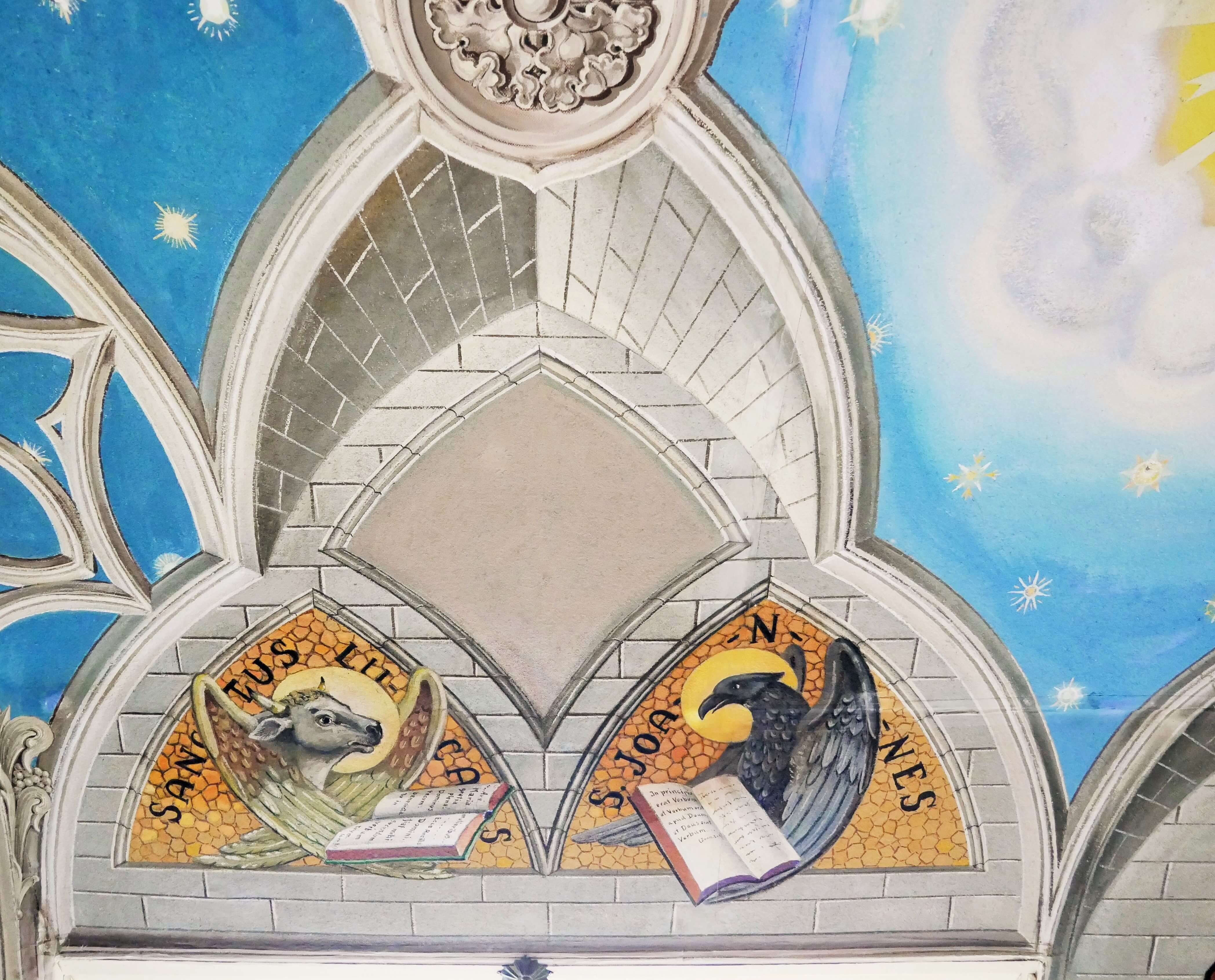
On either side of the altarpiece painting are two windows painted to look like stained glass. The left one has a representation of St Catherine of Siena, while the right one depicts St Francis of Assisi.
Near the windows are two gold curtains. The curtain on the left covers a door, while the righthand side curtain covers nothing and is only there to provide symmetry.
The curtains were the only things that had to be bought for the chapel. They came from a firm in Exeter and were paid for from the prisoners’ welfare fund.
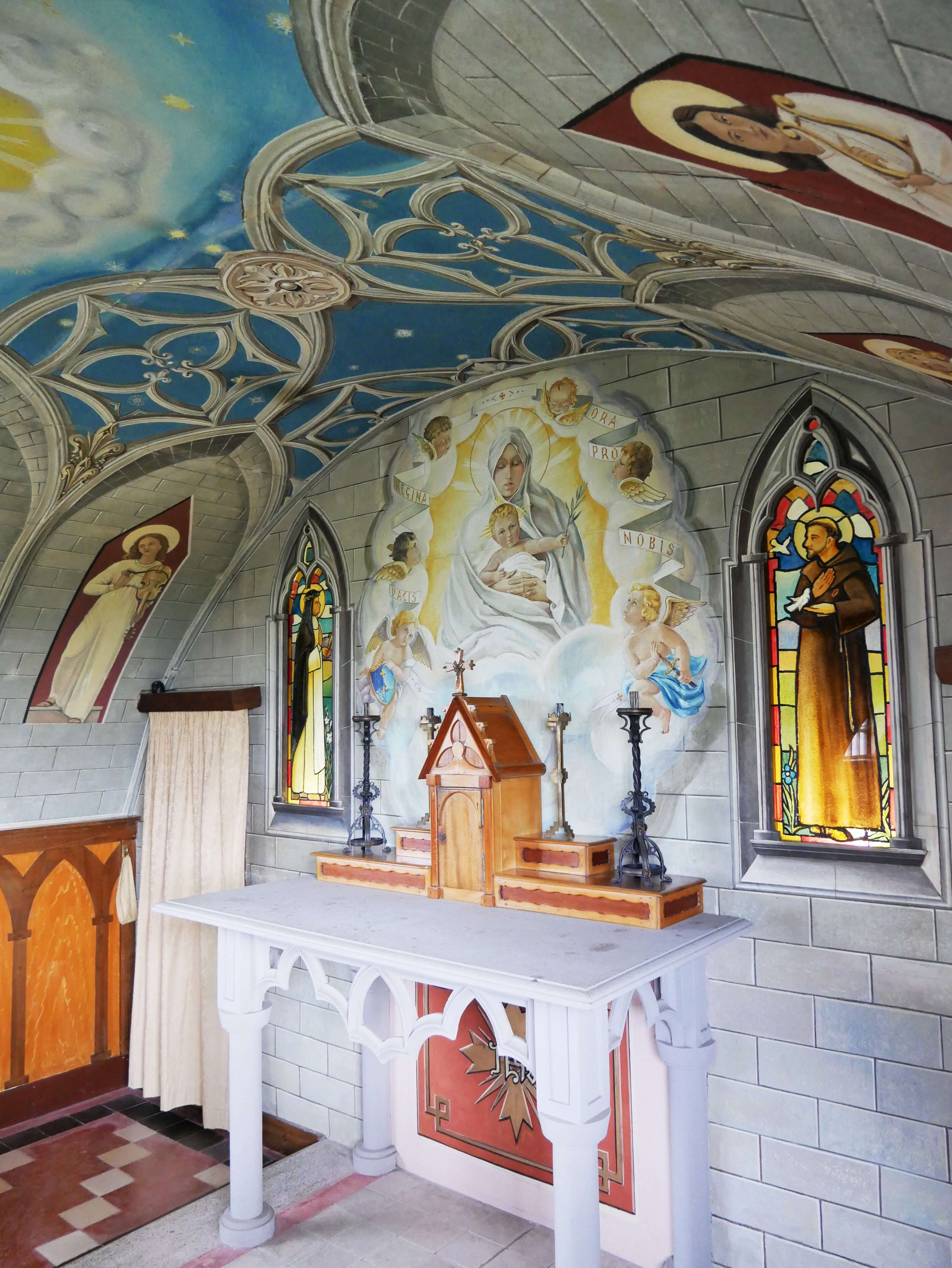 "Stained glass" glows at the alter.
"Stained glass" glows at the alter.
A place of peace
Everything about the Italian Chapel is dedicated to peace.
On the ceiling near the altar, the dove of peace flies over us, symbolising the Holy Spirit. The symbols of the four apostles are on either side of the curved roof, while an angelic quartet of musicians play silently.
The monogram IHS is below the altar and above the door, as well as on the rood screen gate. This is an abbreviation of the Greek word IHΣΟΥΣ, meaning Jesus. The word Maria appears on the other rood screen gate.
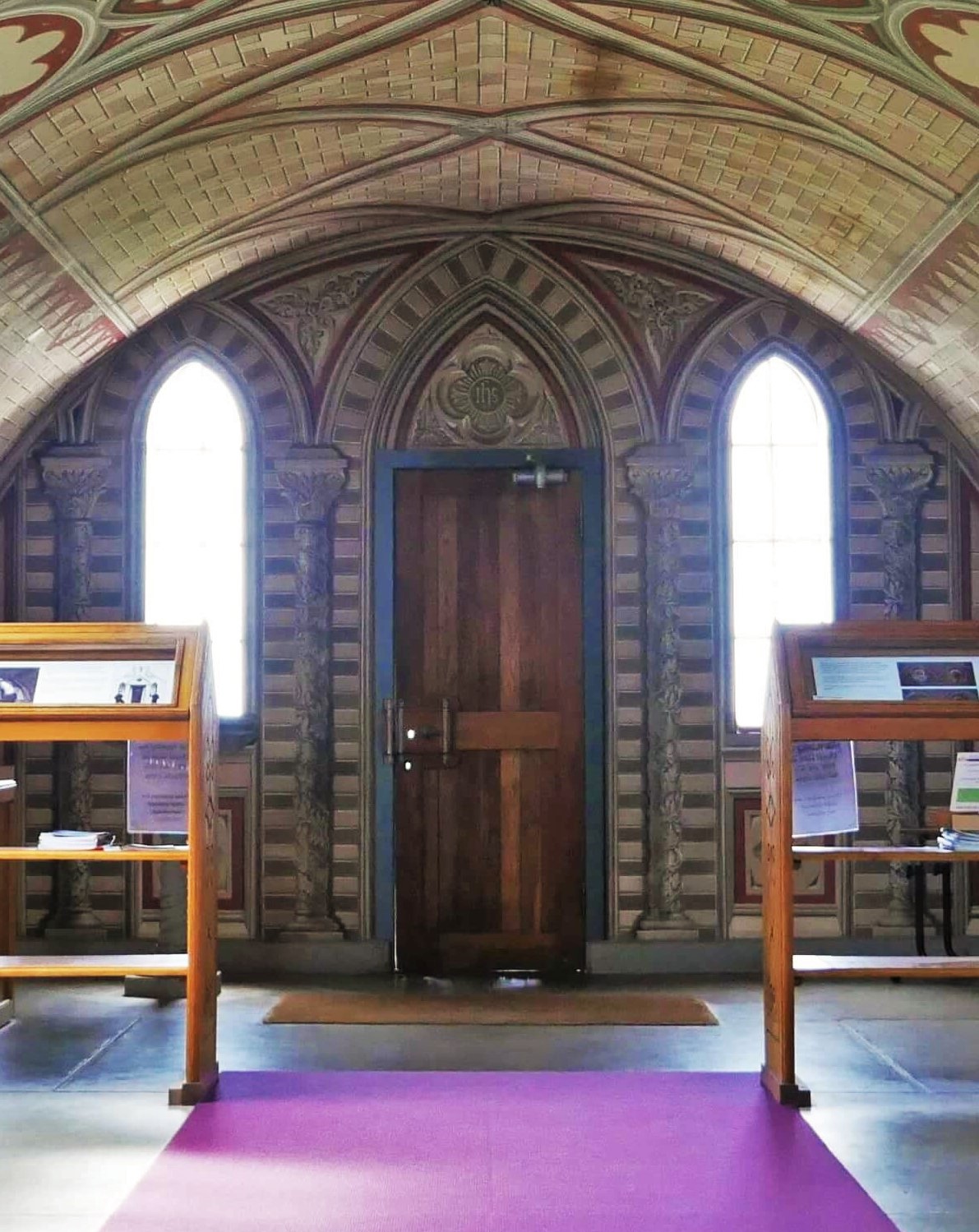
From trash to treasure
Much of the material used in the building of the Italian Chapel was recycled from anything that the prisoners could get their hands on.
The little star-spangled lanterns that hang on either side of the sanctuary are made from a corned beef tin (bully beef, as it was known). It has been skillfully cut to form a filigree lantern of intricate design.
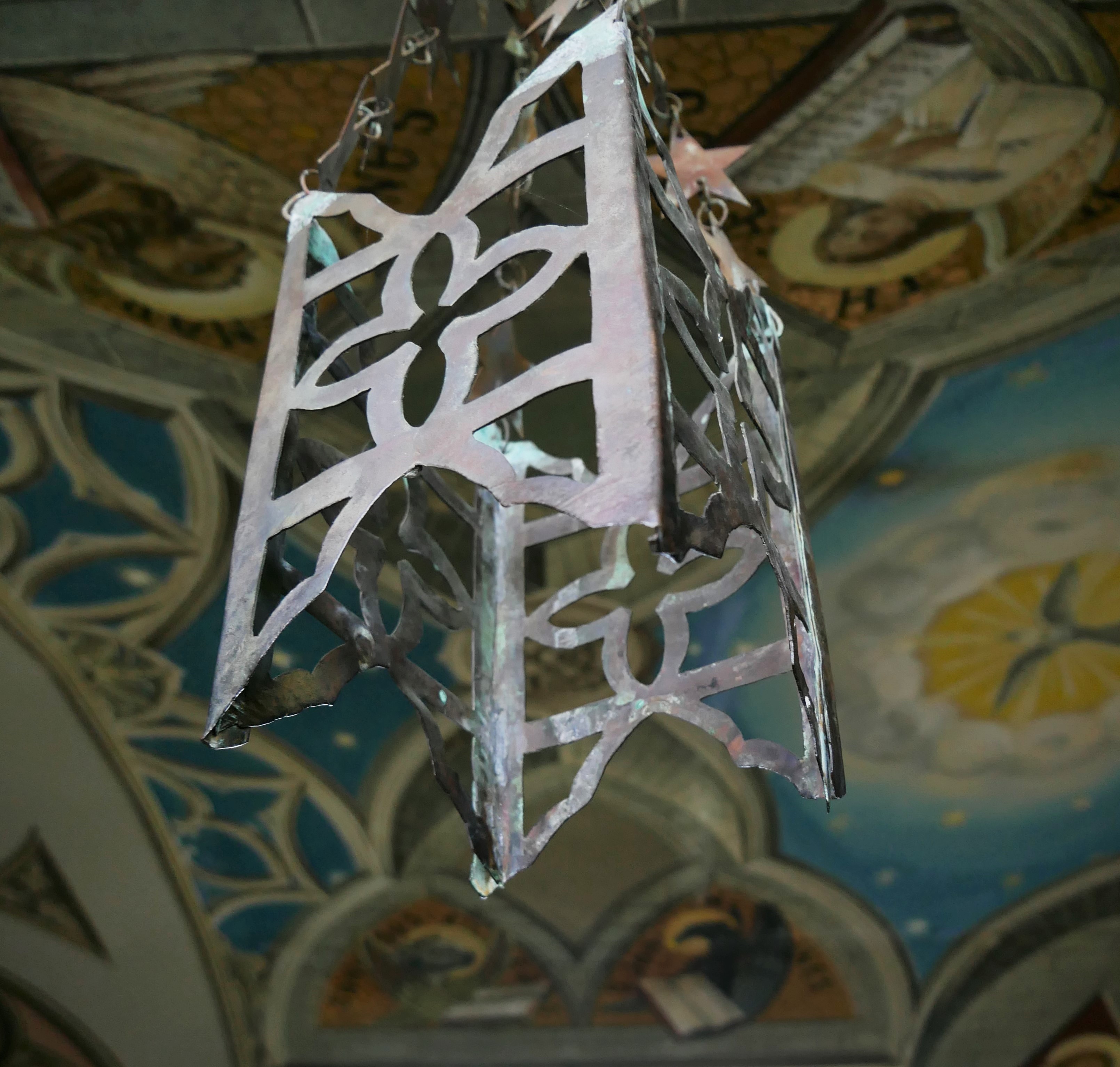
The brass candlesticks on either side of the altar are made from decorative fittings for ship’s stairs, taken from a blockship. These were the ships sunk between the islands to prevent German U-boats from getting in to Scapa Flow. The candlesticks were made by Sergeant Primavera.
The wood for the wall linings and the tabernacle came from a blockship. The polished cement surfaces were done by Buttapasta.
The spiral base of the holy water stoup, which stands near the door, was made from a casting of a suspension spring from a lorry. The mould was then used to cast the base in concrete.
This was the last piece that Chiocchetti made for the chapel.
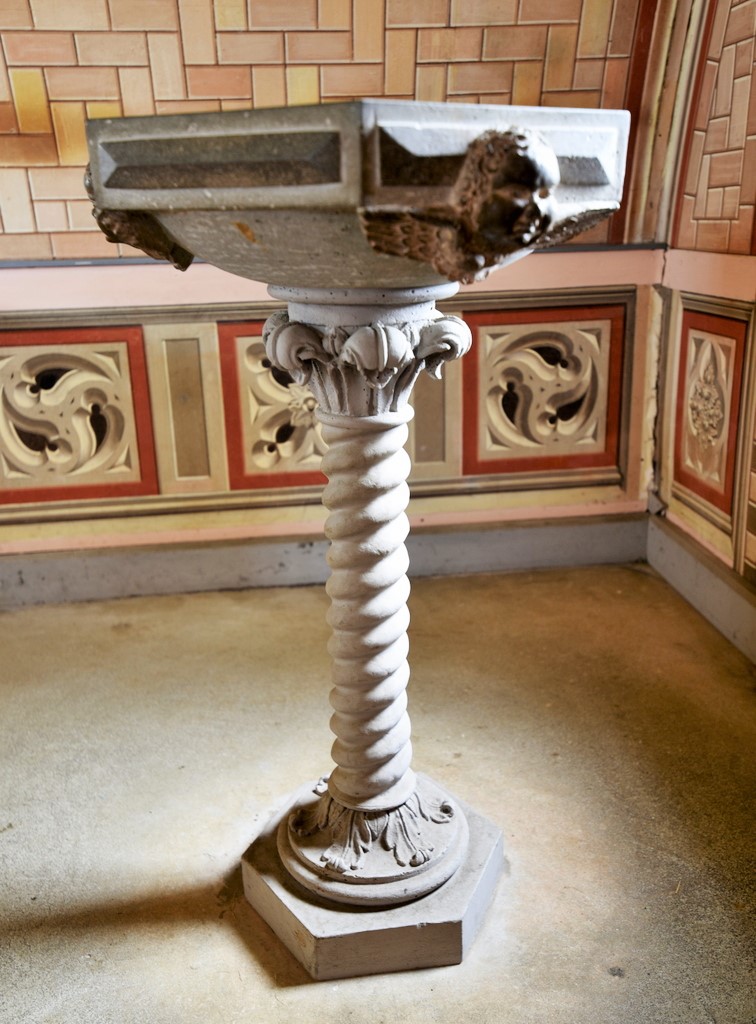
In service
When the chapel was nearing completion Major Buckland invited local photographer James W. Sinclair to photograph it and the men who had built it.
Sinclair had taken the earlier photographs of the Italian prisoners that we know today (as well as taking my early school photos).
It was Sinclair who took the now famous group photo of the men in front of the chapel.
 Photo courtesy of the Orkney Library & Archive - from the James Sinclair collection
Photo courtesy of the Orkney Library & Archive - from the James Sinclair collectionWhen Chiocchetti and Palumbi were asked to be photographed on their own in front of the chapel, someone pointed out that something was missing. There was no bell in the bell tower.
Quickly the two men ran off and got a piece of cardboard, cut into the shape of a bell, and a ladder to fix it with.
A real bell was installed later, but where it came from remains a mystery.
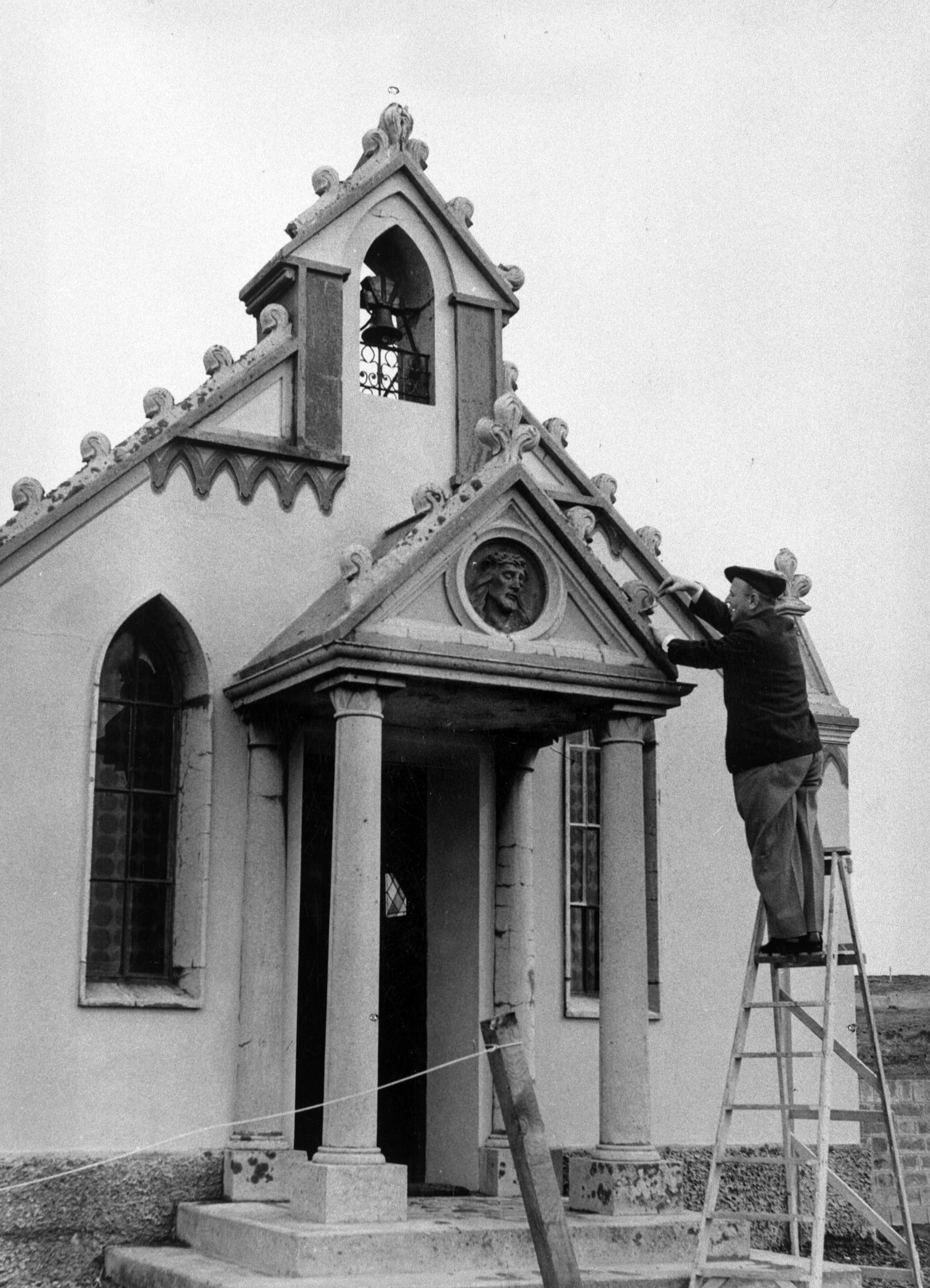 Photo courtesy of the Orkney Library & Archive
Photo courtesy of the Orkney Library & ArchiveThe chapel's bell has often been said to have come from one of the blockships, but it is engraved SD Accord, Aberdeen, 1918.
Philip Paris tried to trace the ship through Lloyds Register but had no luck. There is no blockship of that name sunk in Orkney.
Farewell to the Italian Chapel
The chapel had not been in use for long before the Italians were moved south. The creation of the Italian Chapel had been their focal point for a year, but now they had to go.
At their last mass, the ‘stained glass’ windows were lit from behind by electric lights with electricity supplied by the island’s own power station. They played a gramophone record of the bells and choir of St Peter’s in Rome.
This was goodbye to the chapel; most of the men would never see it again.
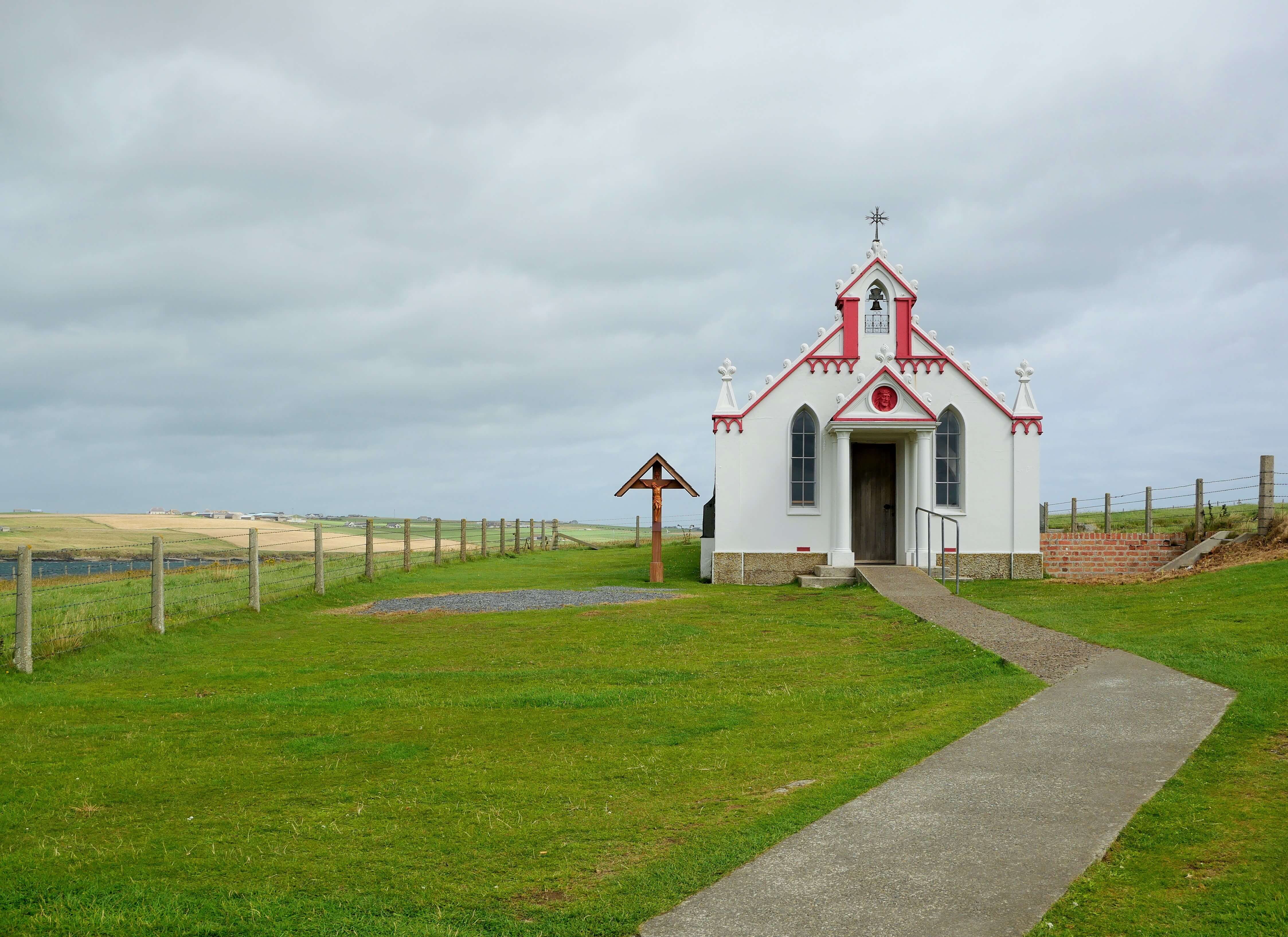
The Italians leave
In 1944, work on the Churchill Barriers was nearing completion. It was time for the Italian prisoners to begin their long journey home.
They left Orkney on 9th September 1944 and were transferred to Skipton in Yorkshire, where they worked in the harvest on the local farms.
A few people stayed back to tidy up the place or to work at the piers in Kirkwall and Stromness.
Chiocchetti also remained, taking the opportunity to finish work on the holy water stoop. He then joined the others in Skipton.
In February 1946 Chiocchetti was repatriated to Italy, “…after an absence of six years and eight months, I saw again my eighty-year-old parents, my brothers and my home.”
Near destruction and neglect
When the construction of the Churchill Barriers was first ordered the War Office approached Mr P. N. Sutherland Graeme of Graemshall, asking to buy the island of Lamb Holm.
Graeme told them to use it in whatever way they needed and to return it to him after the war.
When the war ended Balfour Beatty & Co Ltd got the contract of demolishing the POW camps on Lamb Holm and Burray.
There was an Italian Chapel on Burray, too, although only the end of the Nissen hut was decorated. This chapel was demolished at that time.
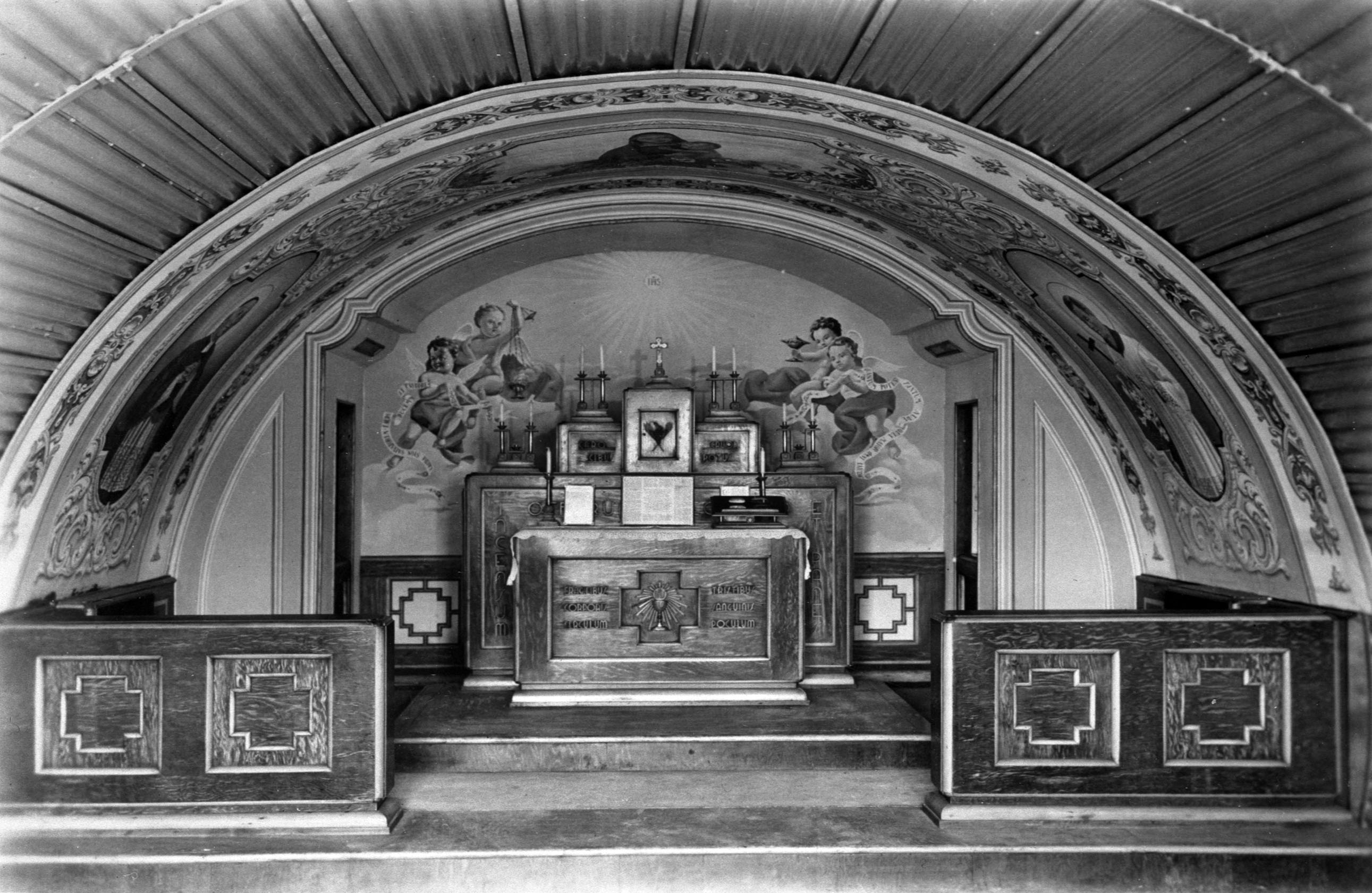 Photo courtesy of the Orkney Library & Archive - from the James Sinclair collection
Photo courtesy of the Orkney Library & Archive - from the James Sinclair collectionThe Lamb Holm chapel might have gone the same way, if it hadn't been for a compassionate and devout Orcadian.
Thomas Thomson from St Margaret’s Hope, South Ronaldsay, was a joiner with Balfour Beatty. He was tasked with the demolition of Camp 60.
He looked on the statue of St George slaying the dragon with sad eyes and gazed in wonder at the Madonna and Child inside the chapel. Thomson was a Church of Scotland elder, and he couldn’t bring himself to destroy such a holy place.
He lost sleep over the deed that he'd been given to do. His daughter, Margaret, remembered him saying to her mother, "We canna tak it doon."
Thomson spoke to the other men, who felt the same. He approached his boss and was told, to his relief, that they could leave the chapel.
Patrick Sutherland Graeme, who owned the island, was relieved to hear that the Italian Chapel had been spared, as he wanted it preserved. But the following years saw the elements take their toll.
Cracks opened up on the roof and water got in, staining paintwork and softening the plasterboard. Buttapasta’s façade started to crack away from the rest of the building. The door rotted. Sheep found their way in, covering the floor with their droppings and rubbing away the lower decorations.
Human vandals had also been at work, writing their names on the inside walls. Palumbi’s rood screen was now rusting. It was a sad sight indeed.
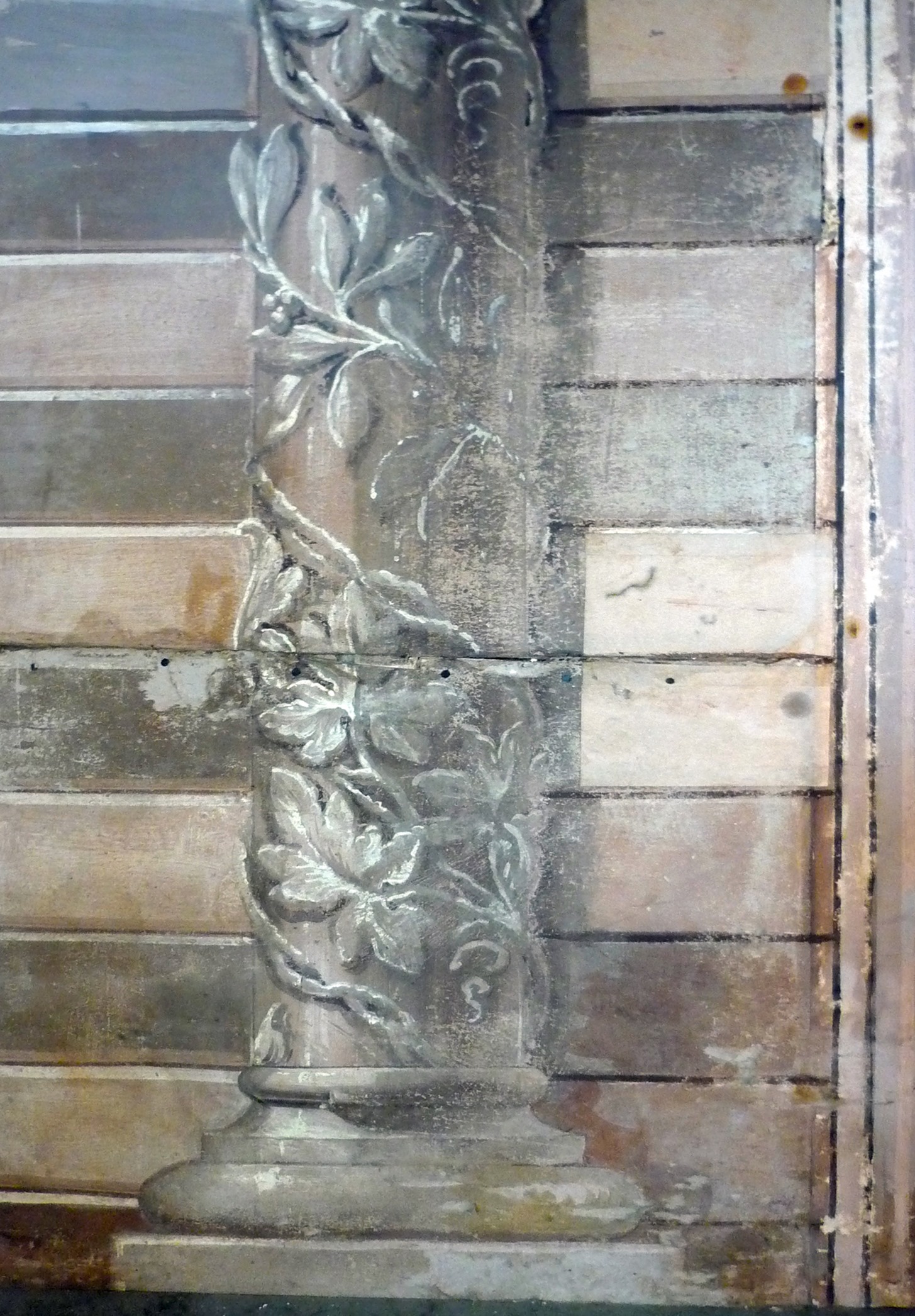 Photo courtesy of professional art restorer Antonella Papa
Photo courtesy of professional art restorer Antonella PapaRestoration
Restoration
By now, people had heard of the Italian Chapel and had started to visit. In appreciation they left donations lying in the holy water stoop by the door. These donations were collected by Alison Graeme, daughter of the land owner, and set aside for use on the chapel.
But not all of the donations made it to this worthy cause.
I remember hearing in my childhood about some Orkney teenagers setting off to Lamb Holm with evil intent, singing: “Going to the chapel and we’re gonna steal pe-e-e-nies” to the tune of the late 50s hit ‘Chapel of Love’.
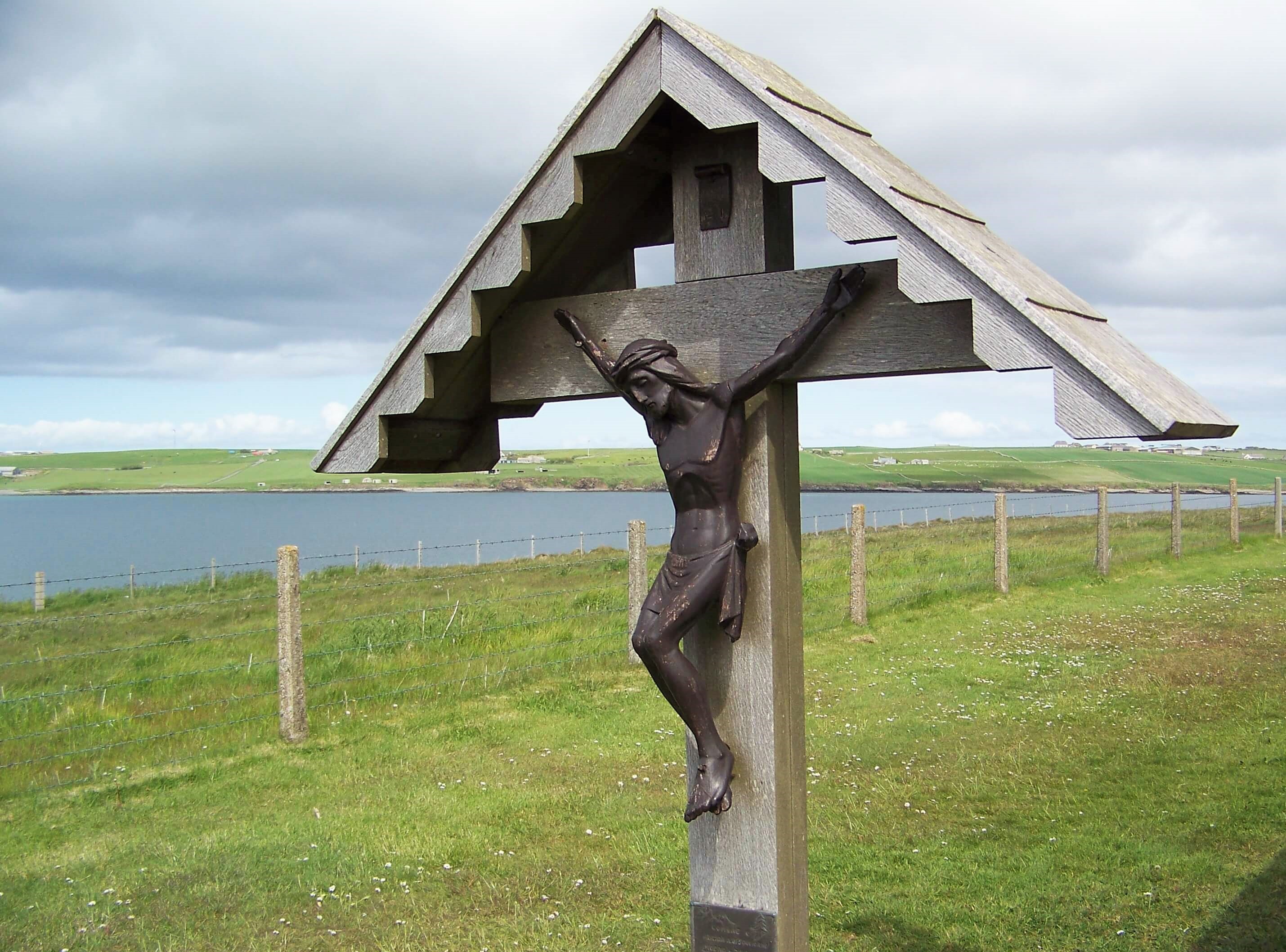
The original figure of Christ (above) was gifted by Chiocchetti's home town, Moena, Italy. The replacement was gifted by his daughter Letizia. Read more here.
Patrick Sutherland Graeme asked about conserving the chapel. He was told that the materials used were not suitable for preserving.
Despite that, he set up the Italian Chapel Preservation Committee in 1958, along with its driving force, Father Joseph-Ryland Whitaker, the Catholic priest for Orkney and Shetland. Graeme's daughter Alison was secretary and donations collector. Ernest Marwick was press secretary.
News of this was published in newspapers. It wasn't long before the BBC got hold of the story.
News gets around
The South European Dept. of the BBC made a radio programme about the Italian Chapel, even tracking down Chiocchetti in Moena for an interview. The programme was broadcast all over Italy.
In 1959 Chiocchetti wrote an article for The Orkney Herald, the newspaper that Marwick was working for.
In 1960 the BBC generously paid for Chiocchetti to return to Orkney for three weeks to repair the chapel.
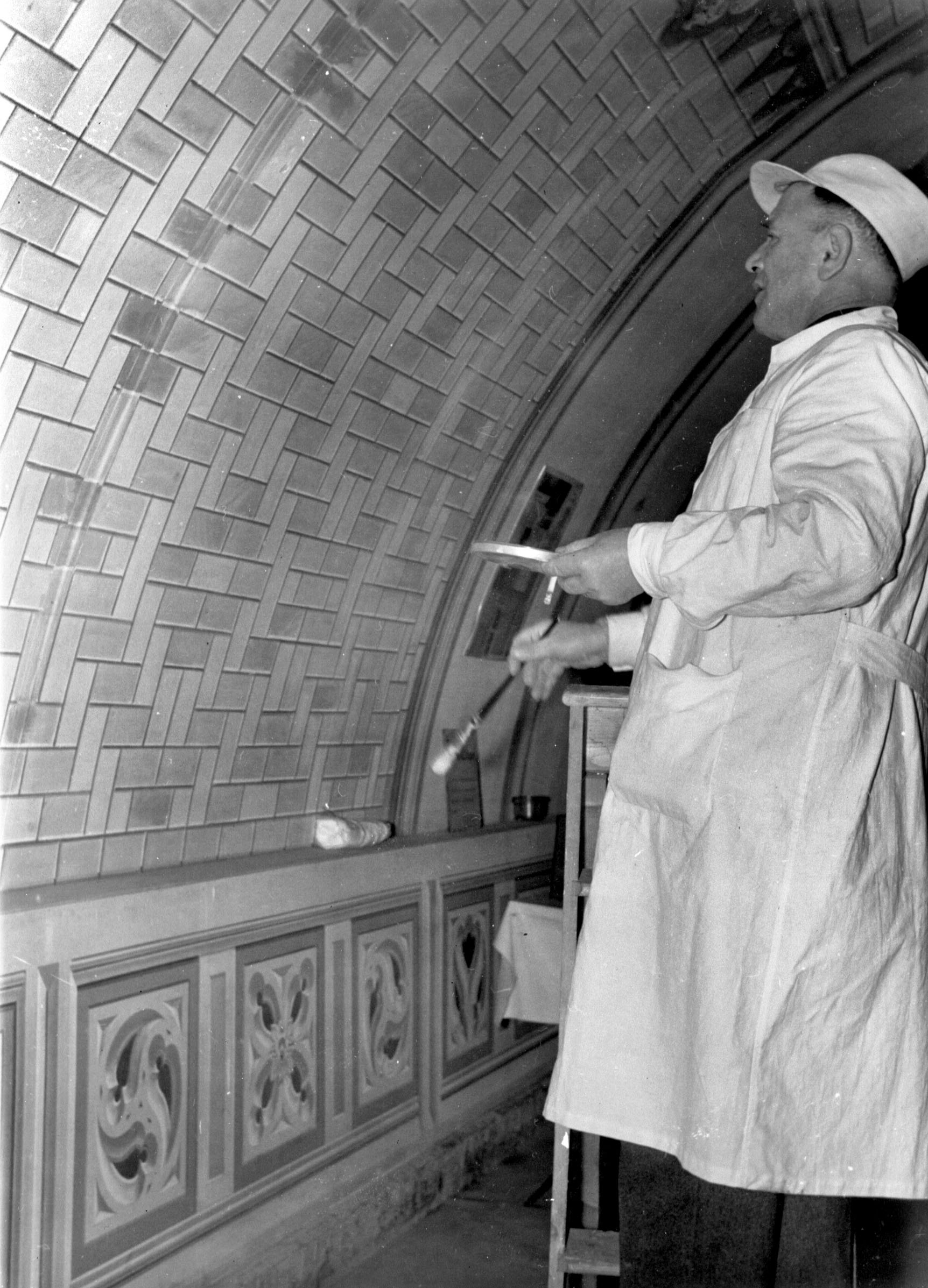 Photo courtesy of the Orkney Library & Archive
Photo courtesy of the Orkney Library & ArchiveHe worked alongside Stanley Hall, a painter and decorator from Kirkwall.
Hall had been a guard on the ship that brought the Italian prisoners to Orkney in 1942.
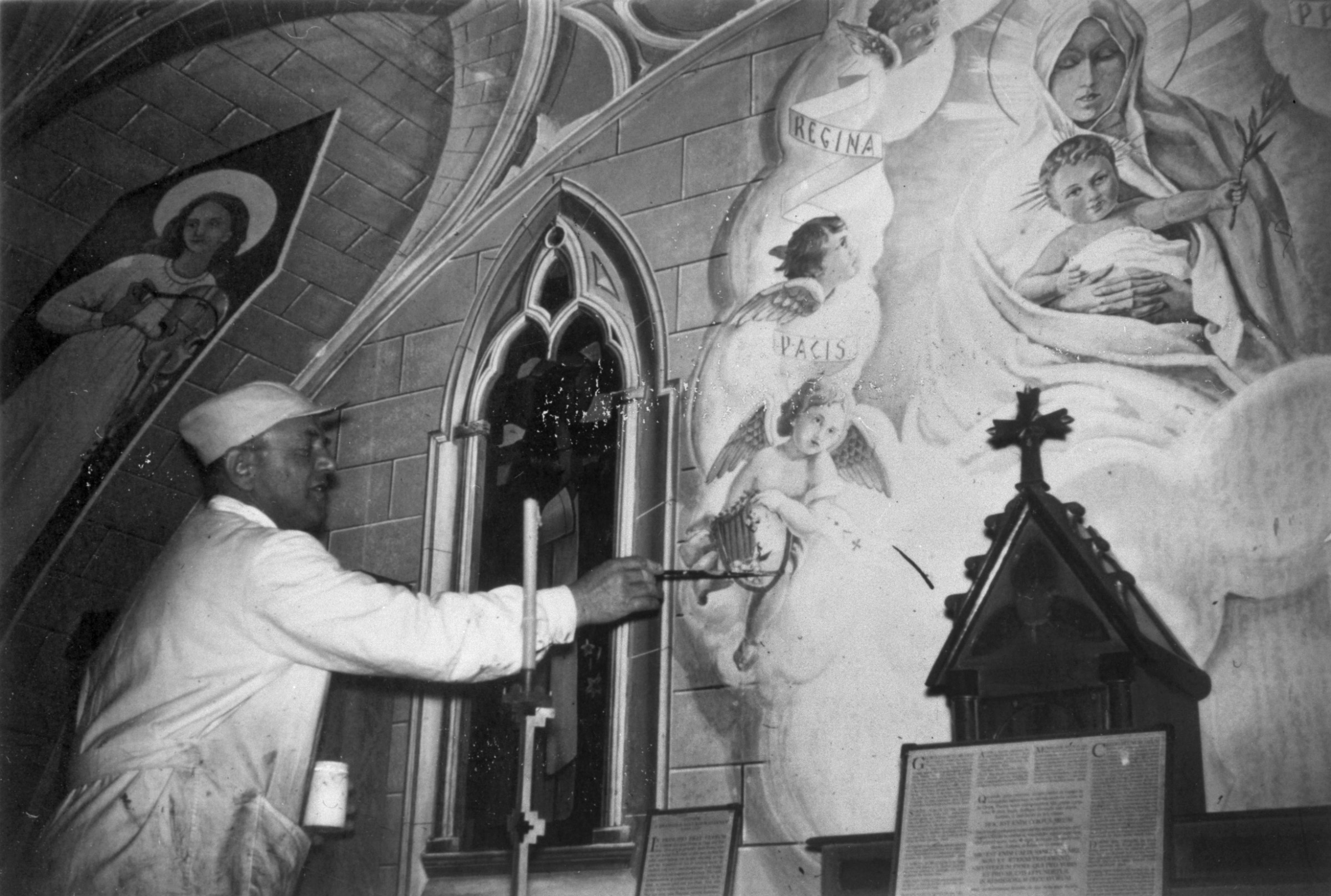
When the repairs were finished, Father Whitaker held a Mass. Chiocchetti was the first to receive Holy Communion.
Part of the service was broadcast by the BBC for the Italian National Programme on Easter Monday 1960.
The Chioccetti family returns
In May 1964 Domenico Chiocchetti returned once more to Orkney, taking his wife Maria with him.
Here's a lovely photograph of them looking up at the altarpiece. She must have been so proud of her husband.
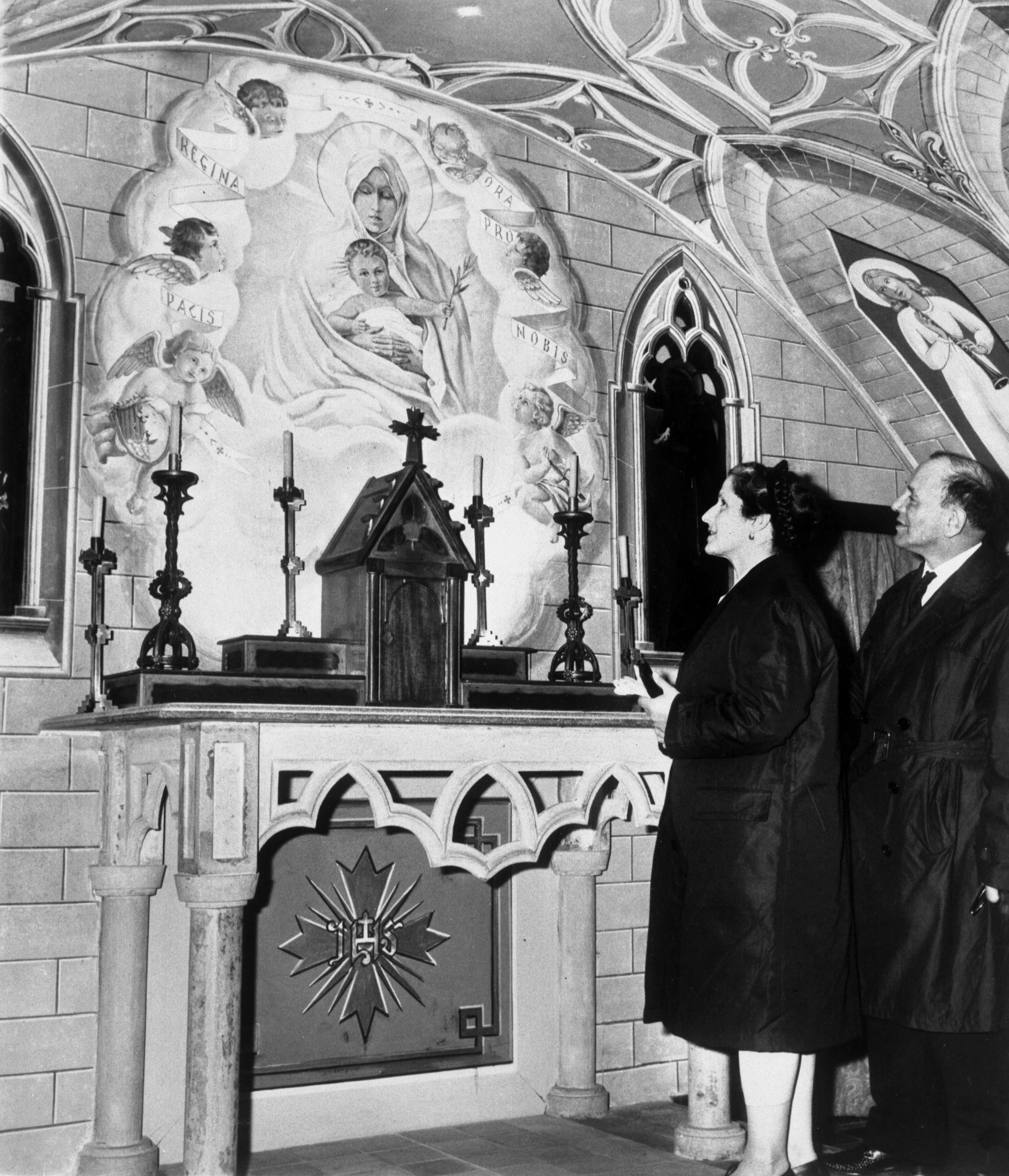 Photo courtesy of the Orkney Library & Archive
Photo courtesy of the Orkney Library & ArchiveAgain in 1970, Chiocchetti returned to his Italian Chapel one last time. This time he brought his son, Fabio, and daughter Letizia.
His other daughter, Angela, has also visited many times, along with another generation of the family.
Orkney's connection with the Chiocchetti family continues to this day.
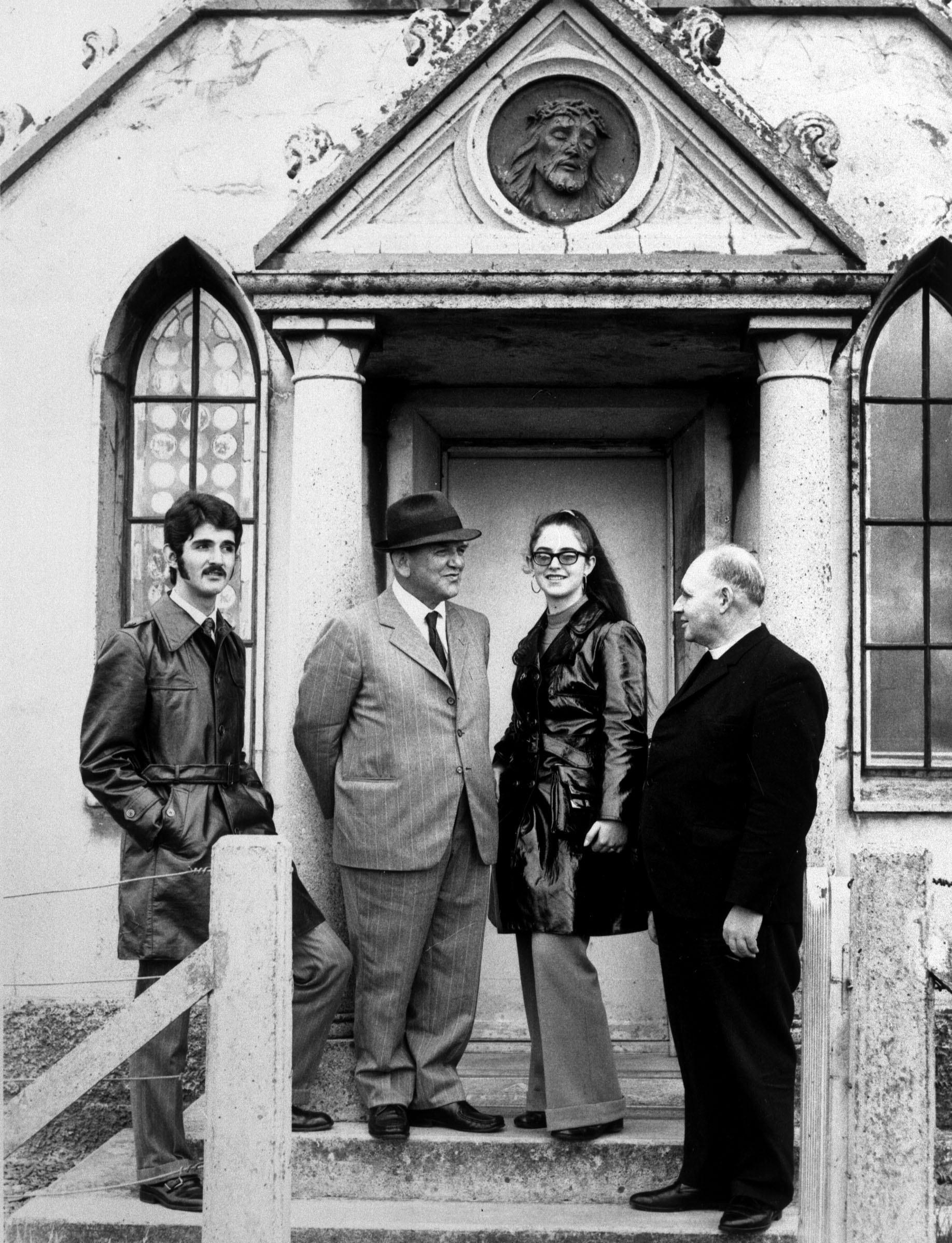 Photo courtesy of the Orkney Library & Archive
Photo courtesy of the Orkney Library & ArchiveA good man
On the 7th May 1999 Domenico Chiocchetti died at his home in Moena, just eight days short of his 89th birthday.
A Memorial Requiem Mass was held in the Italian Chapel on 9th June. His widow, Maria, son Fabio and daughters Letizia and Angela attended.
Visit this page to read a touching tribute to Domenico Chiocchetti by his children.
The Italians return
In 1992 eight former Italian POWs returned to Orkney to mark the 50th anniversary of their arrival. The visit was documented for a BBC television programme, ‘The Miracle of Camp 60’, directed by our friend Gareth Wardell.
Some of the old men were apprehensive about returning. They thought, what if the Orcadians still think of us as enemies?
As the bus drew near to Lamb Holm the men saw an Italian flag flying from the Commodore Hotel. Their spirits soared.
They met many old friends and renewed old acquaintances. Sadly, Chiocchetti was too frail to travel, so Gareth interviewed him at his home in Moena.
In 1995 I wrote an exhibition for the Orkney Museum, to mark the 50th anniversary of the opening of the Churchill Barriers. The exhibition included a section on the Italian POWs.
A group of the surviving POWs had made another return journey to Orkney to mark the anniversary.
They came to the museum and I chatted happily with them. It was a delight for them to see the trinkets and beautiful things that they had made being looked on with joy:
“Ah!”, one of them exclaimed, “I made that cigarette lighter!”
One old gentleman beckoned to me with his finger. I walked over to him. He was wreathed in smiles and pointed to a photograph of a group of prisoners around the billiard table. There stood a young man, slicked back black hair and a pencil moustache, every inch the Hollywood movie star.
 Photo courtesy of the Orkney Library & Archive - from the James Sinclair collection
Photo courtesy of the Orkney Library & Archive - from the James Sinclair collection“Me!” he said. “And I am still a good billiards player.”
Many more former prisoners have returned quietly to walk the land that they had trodden in their younger days, but they returned as friends.
A note from the Italian Chapel Preservation Committee
The Italian prisoners of war left Orkney in 1944. In an article in The Orkney Herald in August 1945 George Mackay Brown described the building.
'This chapel is an amazing thing. Even as the water became wine, the Italians have wrought a miracle. The lovely entrance to the church with its Head of Christ Suffering and the small mute bell already showing signs of disintegration .... The chapel will fall, and Lamb Holm will absorb the materials that composed it back into its inhospitable soil. But the faith that made it is eternal, and belongs to all men, Orcadian and Italian.'
At this time the door was off its hinges and sheep were going in and out. The chapel was becoming more and more dilapidated.
The island of Lamb Holm at that time was part of the Graeme estate and Mr Sutherland Graeme of Graemeshall realised that the chapel was a building worthy of preservation. Along with his daughter Alison he invited, in 1958, a group of friends to form what is now known as The Chapel Preservation Committee. The chairman of the Committee was Father Whitaker the RC priest. Mr Sutherland Graeme was president, his daughter Alison the secretary, Mr Cecil Walls was treasurer and Ernest Marwick acted as press secretary.
In 1960 the artist, Domenico Chiocchetti, was invited to return to Orkney and he spent some time doing restoration work in the chapel. Over the years, under the auspices of the Preservation Committee, others have carried out internal and external work on the chapel in order to ensure it is preserved for future generations.
The Preservation Committee exists to this day and the members are well satisfied in the knowledge that their efforts over the years have maintained this precious piece of Italian craftsmanship in good condition so that local folk and visitors from across the world can visit and admire the building.
John Muir, Hon. President
The Italian Chapel's continuing legacy
Alan Plater wrote a play called ‘Barriers’ for the 2002 St Magnus Festival, with music by Sir Peter Maxwell Davis.
I helped with background information, including Chiocchetti’s article from 1959. Alan Plater and his wife even set up a working space in my museum office for a time. He was a delight to work with.
The play told the story of a love affair between an Italian POW and a local girl. This was eight years before Philip Paris’s book was published.
Paris also wrote a novel based on the story of Palumbi and his love.
Another book on the Italian Chapel was published in 2010. ‘And on This Rock: The Italian Chapel, Orkney’ by Donald Murray takes a different approach to writing a book on this subject.
I helped with both researchers and even contributed my photos to Murray’s book.
Stories of the melted heart
Lover of the Italian Chapel, Inga Sempel, has written a screenplay called ‘The Melted Heart’, which tells another version of the love story.
I was happy to help Inga with information and location sites. She even stayed at my house in Kirkwall in 2014 while doing research.
Another company has also written a screenplay, and while I have helped them with information, I have not seen the script.
It seems that the poignant story of Orkney's Italian Chapel captures all our hearts.


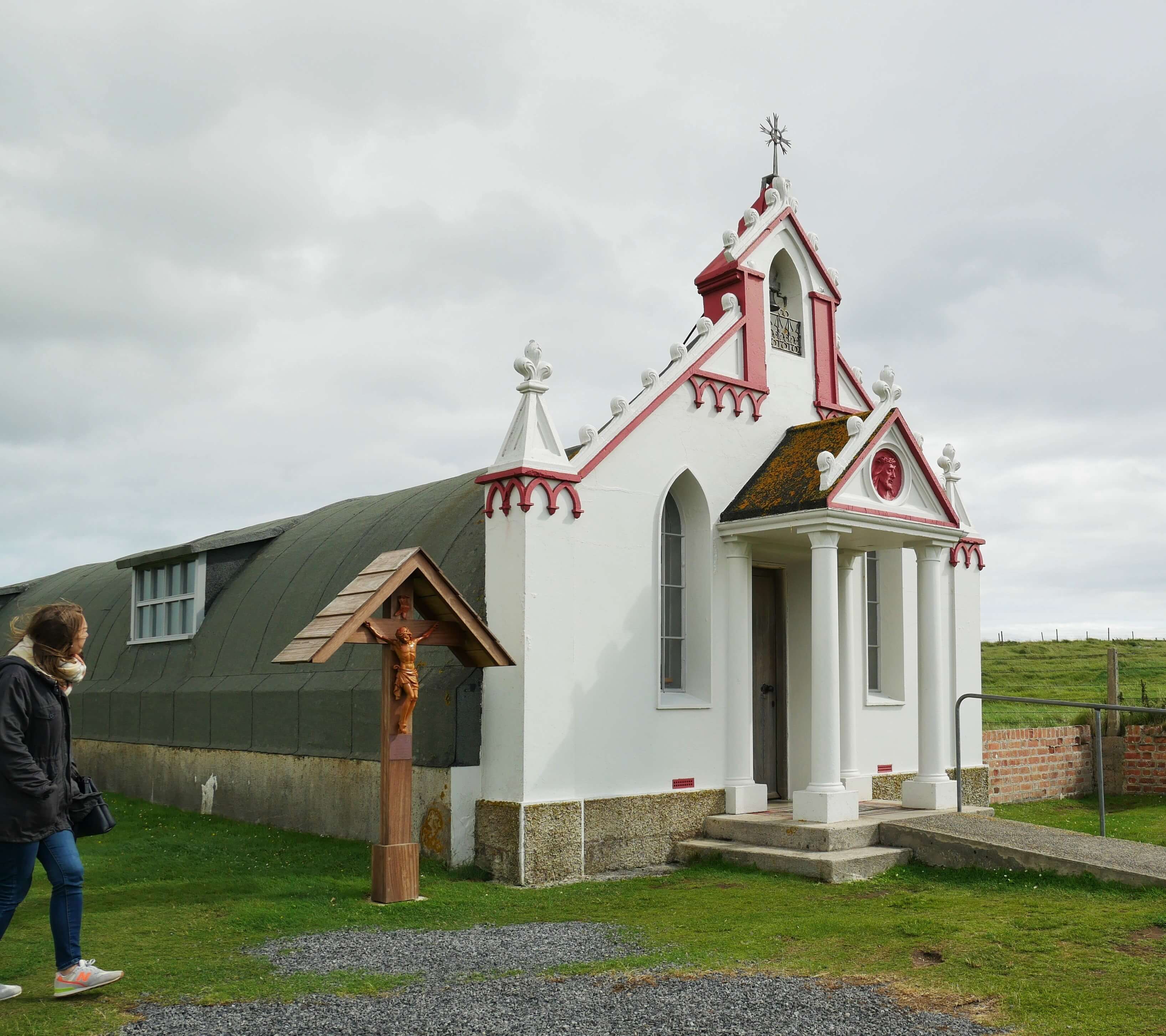

Mermaid image (Rhonda's pages) and storyteller image (Tom's pages), and all other illustrations except where noted are here by the courtesy of our dear friend - Stromness author, artist and historian, Bryce Wilson MBE, who owns all copyrights. Thanks, Bryce!

